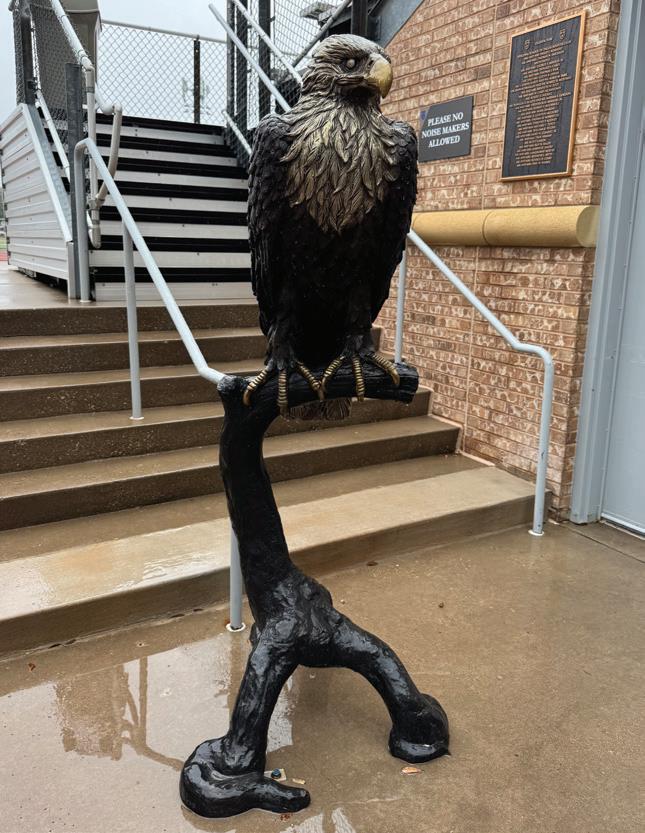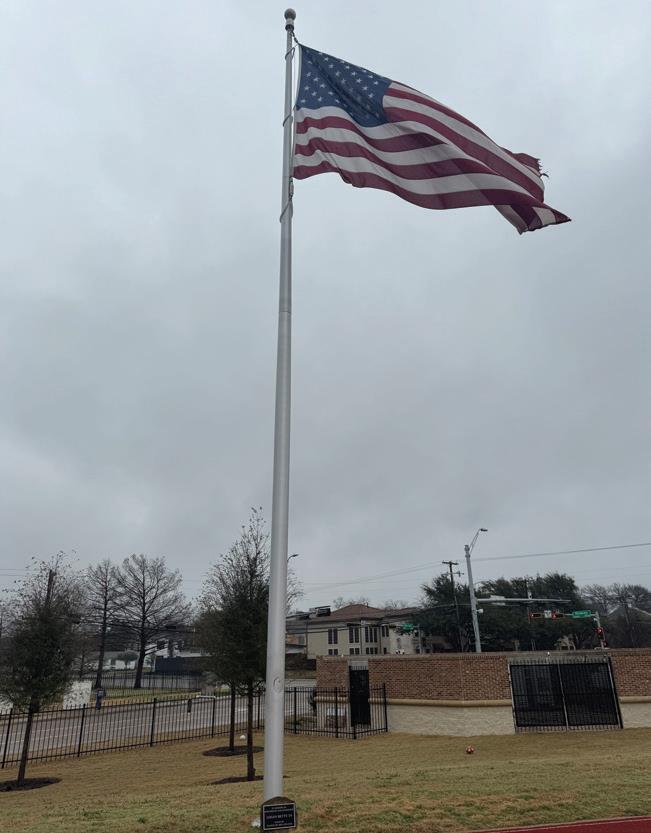




Book bans in the United States have surged and educators, librarians and students are beginning to question the intention of book censorship. While some argue that book banning has been prominent in U.S. history dating back to the Antebellum era and is necessary, genres such as the classics and topics revolving race and LGBTQ+ have been targeted, raising concerns. Pages 16-17
A beloved musical
The upper school theater department put on the musical "She Loves Me" from Feb. 27 to March 1.
The production tells the story of two bickering coworkers who fall in love by communicate through a series of anonymous letters, The main characters, Amalia Balash and Georg Nowack, are played by junior Evellyn Hargrave and senior Jake Infante. Page 15




President Donald Trump's executive orders allow ICE to enter previously prohibited locations
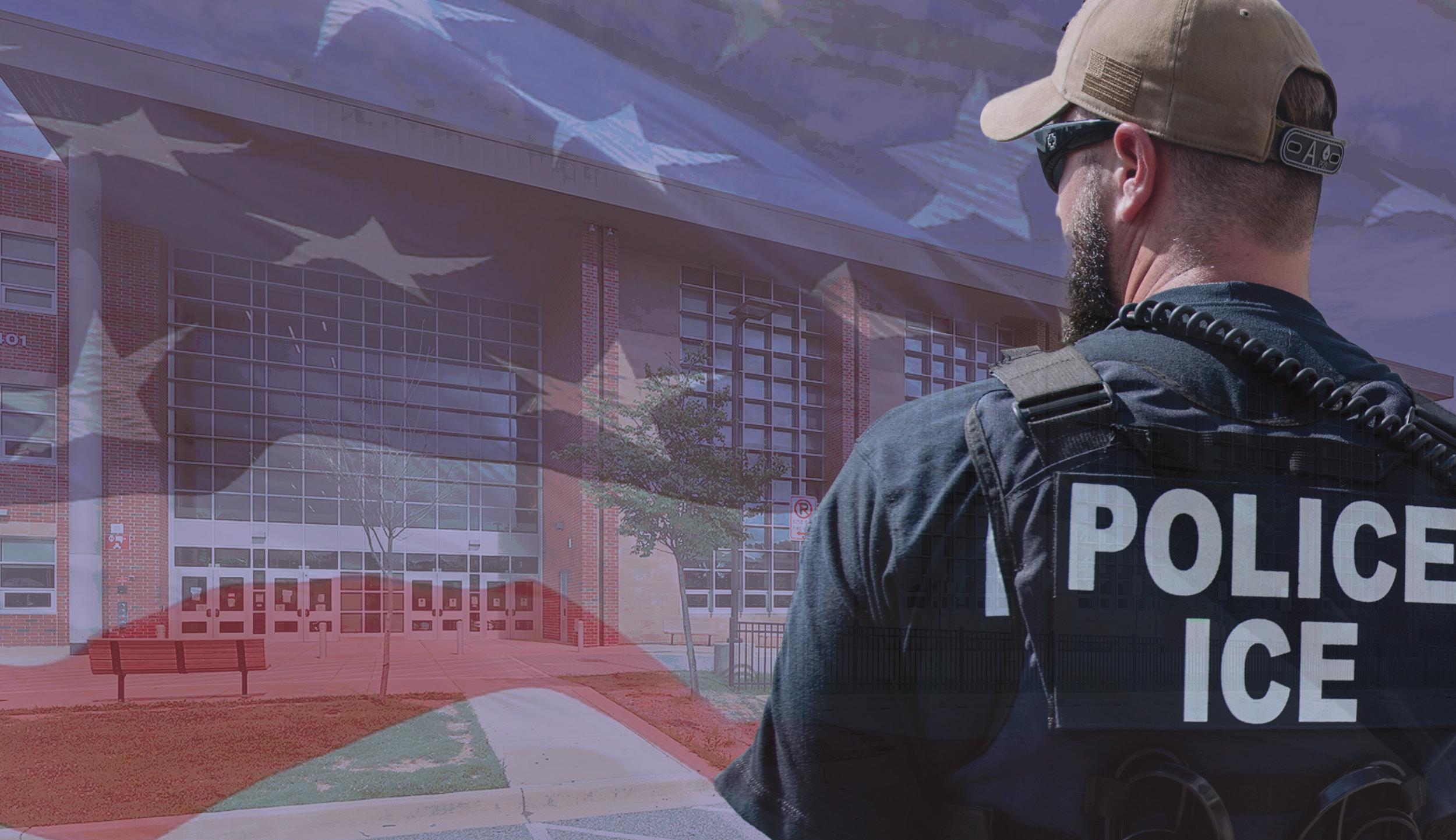
Immediately after his inauguration on Jan. 20, President Donald Trump filed a series of executive orders –many focused on strengthening the southern border and immigration laws in America.
One of the executive orders was a declaration of a national emergency at the southern border. Not long after, the Department of Homeland Security announced that U.S. Immigration and Customs Enforcement would be increasing the intensity of their deportation efforts, with goals to arrest 75 or more undocumented immigrants per day.
Under the Biden administration, select locations such as schools, churches, recreation centers, healthcare facilities, social service establishments, shelters and protest locations were protected from ICE raids. But, as a way for President Trump to increase deportation numbers, ICE officials have begun to raid these previously prohibited locations. Since this change, ICE has been successful with their goals for arrests, averaging 800 arrests daily since Jan. 23, according to CNN.
While they have announced that schools are now a potential target, no school raids have occurred yet.
According to Director of Campus Security Jody Trumble, ESD has not changed anything in the security department regarding potential ICE school inspections.
“Short of the increase in conversation around the topic, there has been no change to any procedure or practice here at ESD,” Trumble said. “ESD's policy states that we cooperate with law enforcement entities that may be conducting an investigation.
With that said, all such requests or arrivals are fully vetted prior to entry to the
campus to ensure their validity and adherence to law (proper paperwork, individual credentials, etc.) which is how we have handled these types of events for years.”
While these policies may not apply to ESD, they affect public schools near ESD, with Texas being a border state and center of immigration.
Despite the class not taking place this semester, Immigration in America teacher Marcela Garcini said that the sudden ramp up in ICE’s efforts affect the moral and legal aspects of the situation.
“I think morally, I do not agree that [ICE] should enter those places, especially because it's children, and children don't have any say,” Garcini said. “But if we go to the legal view, I mean, they are breaking the law, so they have to pay the consequences of that.”
Prior to ICE’s new policy, these sensitive locations were safe havens for undocumented immigrants. But with this change and new fear factor, some teachers have noticed a significant decrease in school attendance in the Dallas Independent School District.
Teacher at DISD’s Sunset High School Ryan McKelvy Gonzales discussed how this fear seems to have a correlation with lower attendance at school in an interview with CBS News Texas in an article published on Jan. 23.
“As a result of these fears, students are afraid to come to school,” Gonzales said. “We have seen a notable drop in attendance this week alone.”
While no statistics have been released on the attendance in Texas schools due to this being a relatively recent change, numbers in other border states such as Los Angeles, California have been released. According to USA Today, there was a 20 percent decrease in attendance on a
Kids
are not attending schools because they feel that the ICE is going to come and take them away, or their parents aren't dropping them off.
Marcela Garcini
Immmigration in America teacher
single day in January.
“[To] my knowledge, [before] you did not request any type of documentation or any type of status here in the public schools,” Garcini said. “Kids are not attending schools because they feel that the ICE is going to come and take them away, or their parents aren’t dropping them off.”
While Garcini believes in protecting students, other teachers in Texas have a different opinion. In recent weeks, teachers all over the state and around the country, including two in the Fort Worth area, have posted statements on social media regarding the undocumented students.
A substitute teacher from the Fort Worth Independent School District posted the following comment to X on Jan. 23, inviting ICE to the school he teaches at.
“I have many students who don’t even speak English and they are in 10th-11th grade,” one of the posts read. “They have to communicate through their iPhone translator with me. The [US Department of Education] should totally overhaul our school system in Texas too.”
Following this post, FTWISD fired the substitute teacher and claimed to be investigating the issue.
Students in the ESD community have also seen these posts on social media platforms and have been alarmed by them. Derek Morde* spoke on his encounters with these posts online.
“I've seen multiple teachers in schools in the Dallas and Fort Worth area posting about their students who don't speak English and telling ICE to come get them,” Morde said. “I’ve seen this on TikTok, Instagram and X. Although it’s legally right for them to report illegal immi-
grants in their classes, it is still harsh for teachers to tell on their own students.”
Upper school government teacher and Public Policy Network coordinator Adam Walsh touched on another recent debate– whether or not the federal government should be and will be able to maintain steady control of the ICE raids.
“What we're seeing right now is a seesaw in terms of how much is the Trump administration going to be able to force the states to do in terms of funding,” Walsh said. “It’s the idea of using funding in a way to try to force the states to adopt federal policies.”
On March 1, the Pentagon announced that they will send 3,000 additional troops to help secure the border, according to the New York Times.
The topic is controversial in every aspect, yet the question that strikes many is whether or not these kids who did not make the choice to illegally enter the country, should be targeted for deportation.
“Sometimes those are young children who were brought to the United States before they knew where they were, and so we usually haven't taken action on them,” Walsh said. “It probably makes more sense to take action on people who made the decision to come here illegally, as opposed to those who didn't.”
But for Garcini, in light of these recent events, finding a middleground is essential to becoming a less divided nation.
“You have your pros and cons, but how do we make the balance and how do we do the right thing in the world so they aren’t breaking the law?” Garcini asked. “As a human person, I think that I struggle with that.”

Annabel Brown Staff writer
Record-breaking” is one word that ABC News used to describe President Donald Trump's unsurpassed executive policy signings on day one. His take on current issues is jarring to leftists, and his unique "America First" mindset has formed a new essence of the Republican Party.
Trump's political allure cannot be denied; according to the PEW research center, his "America First" approach to his campaign brought his approval rate from 20 percent at the end of his 2020 term to a personal record high of 49 percent, mainly attracting voters looking for instantaneous changes in the United States political system. From the start of his 2024 campaign, Trump curated several public policy plans that he believed to be the immediate fix to America’s most pressing issues. These promises to voters range from lowering gas prices, instituting mass deportations and halting Diversity, Equity and Inclusion programs nationwide. When inaugurated, it was clear to the American public and the rest of the world that President Trump was serious in his claims.
“Before his inauguration, President Donald Trump vowed to sign 100 executive orders on his first day in office,” journalist Meredith Conroy wrote in Feb. 6 ABC News story. “And while he didn't hit that mark on day one, the number and breadth of executive actions he's taken so far has been historic, and potentially unlawful.”
Trump set a record for the most executive orders signed upon inauguration. He has signed over 20 new policies into Congress and 76 executive orders to date (Mar. 5). Voters were attracted to Trump's continuous claim that inflation will decrease for everyday items once he is in office. Since then, Trump has reasoned that he has no substantial control over regulating prices for everyday items, such as food and gas. When named 2024’s Time Magazine Person of the Year, in his interview, Trump declared that lowering the cost of these items is complex and will take a long time. He believes increasing tariffs on American trade partners will speed up the process of reducing inflation. Moreover, according to Goldman Sachs
on Feb. 7 increased tariffs could cause mass inflation, which President Trump promised to address when elected. “Canada, Mexico and China together make up almost half of our trade,” economist Monica Potts said in an interview with ABC News on Feb.13. "Imposing these tariffs could also just start a trade war So it could unleash chaos.”
The potential implications of Trump's policies, particularly his stance on tariffs, cause many concerns. Trump believes that it is unfair for countries to charge American tariffs, and he has proposed exceeding these tariffs at the expense of the American economy. On Mar. 4, Trump implemented tariffs on Mexico, China and Canada. NPR reporter Maria Aspan wrote “Canada, Mexico and China are the country's three largest trading partners. The escalating trade war is likely to result in consumers paying higher prices for a wide range of products, including fruits and vegetables, flatscreen TVs and auto parts.”
According to CNN journalist Elisabeth Buchwald, the American stock market immediately plummeted with fear of an international trade war brewing. Additionally, the Trump administration plans to match all trading partners' tariffs dollar to dollar on Apr. 2.
"Tariffs tend to have an overall negative impact, but specifically regional positive impacts," U.S. government and history teacher Adam Walsh said. "Certainly, if it is a very high tariff, it could depress the market by driving up prices. However, it is tough to say at this point. Certainly, [Trump] thinks tariffs will be the solution, and from a long-term perspective, that may be true"
Walsh believes the most influential order, if passed, is 1417, which concerns the typical American’s professional life.
"What is interesting about it is it essentially asks every federal agency to come up with a list, and every person in that agency, to come up with a list of things that they thought were done wrong by their colleagues over the last four years, offering them amnesty if they come forward now, but punishing them if they do not later on," Walsh said. “It could wind up being the fuel for prosecutions, or it could end up being absolutely nothing."
The way that [Trump] has been able to change the way the Republican Party functions kind of so that it's 100 percent dependent on him. And there weren't political parties then where one person just dictates every single thing that happens within a party. That is unique.
Adam Walsh Upper school government teacher
Immigration policies are another popular topic, with Trump promising to introduce mass deportations. According to the Council on Foreign Relations, most economists believe immigrants are crucial to a thriving economy. However, according to Gallup, an American multinational analytics and advisory company, a record-breaking 55 percent of Americans believe the large amounts of immigrants entering the country is an active threat to national security. Trump's America First policy goes hand in hand with his mass immigration deportations, as he believes halting relationships with other countries will allow the government to spend an increased amount of money and time on American issues.
“We're going away from globalization and back towards sort of a regionalization of the world." Walsh said, "however, this shift has downsides. The global economy can struggle when a global superpower decreases funds for other countries. Removing the United States from foreign affairs leads to a far less interconnected world, which could increase international conflicts. However, Trump continues to affirm that interacting with countries such as North Korea, Russia and Belarus would benefit the United States. These countries are highly controversial in regard to foreign affairs. Trump, nevertheless, believes that having a stable relationship with these countries is for the benefit of America. According to journalist for the Geopolitical Economy Ben Norton, Feb. 24th, Trump wants to partner with Russia to weaken China financially using a divide and conquer strategy. "
Additionally, regarding his stance on the Ukraine and Russia conflict, Trump vowed that on his first day in office the war would be resolved. This ended up not occurring and since then Trump is going to begin halting financial aid to Ukraine. Ukrainian President Zelensky continues to ask Trump for security promises and additional funding.
On Friday, Feb. 28 President Zelensky met Trump in the White House to discuss his concerns regarding America and Ukraine's alliance. According to CNN journalist Kit Maher on Feb. 28, Trump does not align with anyone [in the Ukraine and Russian war] and has firm ties with Russian President Vladimir Putin. Additionally, adding
that the meeting ended in a screaming match with Trump declaring that “[Zelensky] is playing with World War III,” According to NBC Journalist Luke Garrett on Mar. 2, Mike Johnson, a speaker for the House stated that “I hope and pray, frankly, that President Zelensky will come to his senses, come back to President Trump, express gratitude as he should, you know, apologize for his behavior there, and accept this mineral rights deal," Johnson said.
“Faced with these threats to geopolitical stability and globalization, businesses would be wise to scrutinize their exposure to supply-chain risks, a fragmenting digital economy, and the dangers of military conflict and regional instability. Trump is transactional, not ideological,” a journalist Alex Dean from the Economist Education wrote on Jan. 19. Tariffs, as mentioned before, are another reason why many economists believe that Trump’s administration won’t prioritize globalization.
“In his first term, the U.S. threatened tariffs of 25 percent on all goods from Mexico, only to back down when the two countries struck a border deal. So companies would do well to respond to actions, not rhetoric. What is clear is that the golden age of globalization is gone.”
A study conducted by the PEW research center found that most Americans have felt increased political animosity since Trump’s election in 2016. Political hostility has led to increased attention to regional and foreign affairs.
“Every single president has a different impact on the United States, politically, socially, culturally, so Trump also had a tremendous impact on the United States, in that aspect,” sophomore Pranavi Talasila said. “I think every year is honestly, pretty different. It was natural for this year to be slightly different, especially with Trump’s unique political views.”
Most Americans know that Trump has specific intentions for the country and personal opinions on the government’s function.
“The way that [Trump] has been able to change the way the Republican Party functions kind of so that it's 100 percent dependent on him,” Walsh said. “And there weren't political parties then where one person just dictates every single thing that happens within a party. So that is a little bit unique.”
College admissions change amid test-optional uncertainties, record-breaking applicant pool
Valentina Boltchi | Social media manager
The endless race of college admissions proves to be a challenge to seniors every year, especially with major changes to legislative policies and application trends. With an expected graduation record of between 3.8 million and 3.9 million graduating seniors in 2025, according to Education Week, competition is fierce as seniors center their lives around receiving an acceptance to their “dream school.”
This year, more than ever, colleges are adapting to a new era where standardized test policies, diversity programs and financial aid availability are under scrutiny.
The class of 2025 was one of the largest and most competitive applicant pools in the history of college admissions. According to Common App, the primary undergraduate admission application that allows students to apply to more than one college with one application, more than 1,228,016 students applied to universities via the portal. This number reflects a 5 percent increase from the previous year.
“I started applying early which I think was helpful,” Benjamin Moorman, a senior who applied to seven colleges, said. “I think it gets harder and more competitive every year.”
Changes in college admissions came with the new Trump administration, who gave schools two weeks to eliminate diversity initiatives
or risk losing federal funding on Feb. 18. The Education Department gave this ultimatum to end discrimination on race within college admissions, often against white and Asian students.
The announcement has drawn sharp criticism from civil rights groups and universities, who urge universities not to immediately drop these programs. With this new executive order from the White House, it is likely that the range of diversity within universities will drop dramatically, and efforts to achieve a racial balance in the application process will halt, according to AP News.
“We’ve seen that a lot of schools are incorporating questions regarding diversity in their supplements,” ESD college counselor Elizabeth Clark said. “We haven’t seen it affect our kids negatively thus far, but I’m not sure what the class of 2026 will look like.”
Moreover, many schools and states have banned legacy admission preferences for applicants. Last October, California became the fifth state to do so with the Assembly Bill 1870, joining Illinois, Maryland, Colorado and Virginia.
“In California, everyone should be able to get ahead through merit, skill and hard work,” Gavin Newsom, the California governor, told the Los Angeles Times on Sept. 30, 2024. “The 'California Dream' shouldn’t be accessible to just a lucky few, which is why we’re opening the door to higher education wide enough for everyone, fairly.”
Since the pandemic in

A heated dispute between President Donald Trump and Ukranian President Vlodymyr Zelenskyy garnered widespread attention on Feb. 28. During the Oval Office meeting, Trump and Vice President JD Vance accused Zelynskyy of not being grateful enough for the help his country has received from the U.S. Zelenskyy left the White House without signing an anticipated deal that would have granted the U.S. limited access to Ukraine’s rare minerals. On Tuesday, March 4, Trump addressed the situation during his Presidential Address, offering a public update on the status of the agreement and the ongoing negotiations. During the speech, he stated that Zelenskyy sent him a letter indicating he was ready for peace negotiations with Russia and willing to sign an agreement. Trump indicated his eagerness to finalize the agreement, according to ABC news.
Colleges prefer to see students involved in a few activities with a leadership role than be involved in everything without any impact.
Elizabeth Clark College counselor
2020, dozens of colleges have dropped standardized testing requirements for applicants, under concerns that they favor high-income families.
In a March 10 upper school poll, 25 out of 41 seniors said they applied test optional to a majority of their schools this year. However, many colleges are bringing standardized test requirements back for the class of 2026 and beyond, including Brown, Stanford, the University of Texas and Auburn.
“I don’t have a tutor, so it has been hard to figure out what to study for the ACT with,” junior Giovanni Sabella said. “I am super nervous [because] many schools are very competitive with test scores.”
Despite new changes and requirements, there have been suggestions that the college admissions process for the class of 2026 will be less competitive than the class of 2025. Many speculate that the economic crisis of 2008, when many members of the class of 2026 were born, caused a sharp decline of U.S. birth rates, and therefore, a less competitive and populated college admissions landscape, according to a Feb. 4 NPR story.
But Clark has not received any confirmation of this claim.
“I haven’t heard any feedback from college admissions themselves reporting that they’re expecting a drop,” Clark said. “If it becomes slightly less competitive, admissions rates would be higher nationwide.”
Another notable change has been an increasing emphasis on extracurricular activities and essays in recent

Pope Francis, who was hospitalized for acute pneumonia on Feb. 14, continues to carry out his papal duties from his hospital bed, despite his absence from public view, according to The New York Times. The 88-yearold pontiff was admitted to Rome’s Gemelli hospital after struggling with breathing difficulties. While his conditions reportedly improved, the Vatican has been cautious in providing updates, noting that further time is needed to assess his full recovery. Church experts and observers have raised concerns regarding who would govern the church if a Pope fell into a coma or was incapacitated. This has sparked the realization of the need for a more defined process in such situations, given that no pope has officially stepped down due to health reasons since Benedict XVI’s resignation in 2013. For now, the Vatican insists that operations continue as normal, with Cardinal Pietro Parolin overseeing the day-to-day activities.

Canadian Prime Minister Justin Trudeau resigned on Jan. 6, causing Canada’s Liberals to be currently searching to replace him as leader of the Liberal Party and of Canada while their country is in the midst of a crisis due to the Trump Administration’s tariffs and sovereignty threats. The race was between front-runner Mark Carney, the former Bank of Canada governor, and Chrystia Freeland, the former finance minister. Carney promises to boost the economy and address housing costs, while Freeland focuses on healthcare and military spending. Mark Carney has been elected as the leader of Canada's Liberal party where he will immediately take over this roll while Trudeau will remain as Canada's prime minister for an unknown transitional time period.
years. Admissions officers have placed greater weight on holistic aspects of an application.
"Holistic means that they are looking at everything, which most of the schools in the country do," Clark said. "It is important for applicants to have other involvements and not just place everything on academics."
With the increasing reliance on technology in the admissions process, artificial intelligence has also begun playing a role in application reviews. Some universities have started using AI to sort and analyze applications, flagging those that meet specific criteria for further review by admissions officers. While this has made the process more efficient, some students worry about the potential for bias in AI-driven decisions.
“I don’t really like AI because people put so much time and effort into their applications,” Moorman said. “It’s helpful for humans to read [applications] versus a computer because they sometimes don't hit the computer’s certain criteria.”
Additionally, financial aid remains a growing concern for many students and families. Rising tuition costs and the often limited help of federal aid programs have led more applicants to seek scholarships.
"I thought that college admissions would end with applying to the schools, but I had to do whole other applications just for the scholarships," senior Tessa Cabrales said. "It made the whole process feel so much longer and more stressful."

Tesla, which is owned by Elon Musk, has faced a series of attacks, including at least 10 acts of vandalism in recent weeks. Multiple charging stations near Boston were set on fire, and shots were fired at a dealership in Tigard, Oregon. On Jan. 29, a woman threw her cocktail at a cyber truck parked at a dealership in Colorado, then allegedly returned to the dealership four more times, according to NBC news. In her returns, she threw more cocktails, attempted to set the dealership on fire and used spray paint to write the words “Nazi cars” on the building prior to her immediate arrest. These attacks coincide with Elon Musk’s controversial role in leading the Department of Government Efficiency, where he has been associated with significant cuts to the federal workforce. Tesla’s sales have also seen a decline, adding to the mounting tensions around Musk’s growing political influence.
2025 has seen four fatal crashes and many other incidents
On Jan. 29 at 10 p.m., junior and student pilot Harrison Teegarden turned on his news and was shocked by the report of a military helicopter and commercial airplane colliding mid-air. After watching updates from a search crew, Teegarden learned that the accident resulted in no survivors.
American Airlines flight 5342 departed Wichita, Kansas earlier that day, planning to land at the Ronald Reagan National Airport just outside Washington D.C. Upon descent, a U.S. Army Black Hawk Helicopter collided with the commercial airplane, resulting in 67 deaths; 64 from the airplane and three from the helicopter.
“The helicopter was supposed to pass below them like they do all the time, and there have actually been a few near-miss incidents in the months leading up and even the night before the incident,” Teegarden said. “On the night of the incident, the pilot of the helicopter was approximately 325 feet above ground level. They weren’t supposed to be that high and they were in the path of the airliner.”
The crash outside of Ronald Reagan National Airport is the first fatal commercial airline crash in the past 15 years, according to USA Today. But there have been many other aviation incidents and near-misses in 2025 alone, and three others resulted in deaths.
“[The crash was] a devastating day for our American Airlines family,” Robert Isom, CEO of American Airlines said during a Fox News interview.
“[It] weighs heavily on our airline, the industry and the world.”
In addition to the airline-helicopter collision in Washington D.C., on Jan. 31, a medical jet carrying a child patient and her mother crashed soon after take off.
The jet crashed into a Philadelphia neighborhood killing seven people. On Feb. 6, a Cessna 208B Grand Caravan crashed in Alaska while headed to Unalakleet from Nome, killing all 10 people aboard.
On Feb. 10, the collision of two private jets at Scottsdale Airport in Arizona resulted in the death of one person.
Another accident took place on Feb. 17 in Toronto when a Delta Airlines flight turned upside down and caught fire during landing, according to CNN News. And more recently, on Feb. 25, two commercial airplanes, one in Chicago and one in Washington D.C., aborted landings in order to avoid collisions.
“The tragic accident that occurred on Feb. 6, 2025, has shaken us all to our core,” Bering Air, an American airline in Alaska, said to Fox News. “This has been an unprecedented event for both our team and our customers, and we are truly heartbroken by the loss.”
These major crashes in 2025 are not the only aviation issues. There have been 87 total crashes in the U.S. this year alone, according to USA Today. Although many incidents are occurring in a short period of time, none of them can be attributed to the same problem. For example, Delta Airlines Flight 4819, going from Minneapolis to Toronto, flipped on the runway on Feb. 17 due to strong winds and ice on the runway.
The
reality is, we don’t have all the answers yet. Rather than getting caught up in the division, we should prioritize finding real solutions and supporting those affected by these devastating losses
Mithul Nadampalli Junior
“It’s just random. There’s nothing causing these crashes, it’s just human error,” junior and student pilot Wes Curtis said. “The runway should have been solved. It was the wrong one but they landed on it anyway and usually, they’ll have heated runways, especially for big airports.”
Despite the fact that there were no casualties in the flipped Delta Airlines flight, multiple people were injured and startled by the situation. Junior Mithul Nadampalli had a family member on the flight, and his family was shaken by this near-death experience.
“The recent plane crashes are heartbreaking tragedies that leave us with more questions than answers,” Nadampalli said. “The reality is, we don’t have all the answers yet. Rather than getting caught up in the division, we should prioritize finding real solutions and supporting those affected by these devastating losses.”
Although many of these crashes cannot be narrowed down to one thing in particular, there has been a decline in the number of air traffic control officers and more work piled on the current employees. The Federal Aviation Administration has had a staggeringly low number of air traffic controllers since COVID; according to Axios, a news website, in 313 FAA facilities, only 27 meet their staffing goal.
“There are not enough air traffic control workers because COVID halted the production,” Teegarden said. “You started a little airport with a smaller job and then you get higher up, so it takes a while to have to produce a qualified

person for a job like a tower controller at Ronald Reagan Airport in Washington, D.C.”
Along with tensions and nerves around flying from recent crashes, the public’s mood and fear of flying has also been influenced by movies about flying and terrorism, such as “Carry On.” Released on Dec. 13, the Christmas-themed movie about a hijacked TSA employee and attempted aviation bombing started out the new year with preempted feelings toward flying, before any incidents happened.
“[The ‘Carry On’ movie] made me realize there is a lot of possibilities when you’re flying that someone could be trying to hurt you or other people,” sophomore Ryan Cole said. “And it could be really scary if someone was trying to plan an attack against the airport. It has scared me to travel.”
Although the recent crashes have affected many people, most of the fear is due to an increase in awareness of airplane failures, not an increase in problems overall. On average, 2.5 million people fly in a U.S. aircraft every day and there are about 45,000 flights in the U.S. per day, according to Simple Flying. And according to the U.S. Transportation Department, fewer people are injured or killed flying than any other form of transportation, nearing almost zero incidents per 100 million passenger miles. The fear of airplane accidents resonates with Teegarden as his mom is always concerned when he flies.
“Air travel is super safe,” Teegarden said. “[When] I fly, [if my mom] sees plane crashes, and it freaks her out but air travel is the first or the second safest mode of transportation ever.”

School choice bills have the potential to have a major impact on public and private schools alike
Sheridan Bailey | Staff writer
On Feb. 22, a protest erupted on the steps of the state capital, where demonstrators walked in unison as they held up signs opposing the State and House’s proposed school choice bills.
Austin was not the only city where these protests occurred. Across Texas, people gathered outside of institutions state officials amongst the crowds, protesting the uncertain future of the Texas education system.
The Senate and the House have proposed bills concerning school choice and vouchers. According to the Texas Tribune, the vouchers, “Would provide families with $10,000 a year per student in taxpayer dollars to fund their children’s tuition at an accredited private school and additional expenses like textbooks, transportation and therapy. The legislation would provide $11,500 per student for children with disabilities. It also would provide at least $2,000 a year per student for home-schooling families who participate in the program.”
If a school choice bill is successful through the Texas legislature, it could potentially and directly impact ESD.
“What I think is important is that ESD puts itself in a place where it follows the law,”
Ann and Lee Hobson Head of School David Baad said. “ When the Texas State Legislature passes its final version of the voucher bill, we will evaluate whether it makes sense for ESD to participate.”
Senate Bill 2 provides funding for individuals, versus private institutions taking direct funds from the state, contrary
to that of House Bill 100, which prohibits private schools from taking state funds. Questions are arising amongst Texans on whether Senate Bill 2 would prevent private schools from being classified as “private,” as they would receive state funds in form of vouchers, similar to that of public schools.
Baad addressed the concerns over the involvement of the House and Senate in school funding by placing his faith in the Independent Schools Association of the Southwest.
“I want to emphasize that we will stay true to being part of ISAS and meeting their accreditation standards,” Baad said. “Neither the House nor the Senate Bill appeared to have tied participating in the voucher program to a school’s meeting of any public school requirements.”
The school choice bills are Republican backed bills being passed in a majority Republican legislature, a strong indicator that these bills will be passed. If these bills are passed through both branches of state legislature, then Gov. Greg Abbott an avid supporter of school choice, would be the deciding factor.
“For the first time in our great state’s history, the Texas House has the votes to pass a universal school choice program,” Gov. Greg Abbott said in an official press release on Feb. 26. “This is a remarkable achievement for the countless parents, students, and educators across Texas who want school choice expanded to all Texas families.”
Lt. Gov. Dan Patrick supports Gov. Abbott, as he believes the bill will improve the Texas public education system and benefit kids with

special needs. However, many Texans do not agree with their claims, including upper school science teacher Lee Ferguson, who came to ESD from Allen High School, which is part of the Allen Independent School District.
“Consider the places in the state that don't have access to a private school, and that the only schools their children have access to are the local public school system,” Ferguson said. “Number one, it will cause the quality of those schools to decline. Number two, when those schools become woefully underfunded, even more so than they already are, you're now talking about riffing people, reduction in force, and letting teachers go.”
Upper school business teacher and sponsor for Conservative Student Union Amy Livingston, refutes Ferguson's claims believing that vouchers will ultimately have a positive effect.
“You would likely see low-performing schools being "under funded" because parents want what is best for their kids, one of which is a good education,” Livingston said. “By allowing parents to take the money and apply that to another school with the promise of a better education benefits children who
OUR TIME TO SOAR
The “Our Time to Soar campaign was announced on Saturday, March 8, at the annual ESD auction. This campaign is a $50 million endowment effort in honor of the school’s 50th anniversary and supports the ESD 2030 effort.
“The planning for ESD 2030 and this campaign is five years in the making, Ann and Lee Hobson Head of School Dave Baad said. “Its foundation comes from our commitment to the school’s past - our mission, Founding Tenets, and Episcopal Identity.
A component of ESD 2030 is ESDistinction, which will expose students to professionals in business, government, science and the arts. This initiative allows students to gain real-world insights
SERVERY ORDER TRANSFORMS
This year, the once-chaotic lunch lines underwent a major transformation under Assistant Head of Upper School Max Augé, who sent out an email to the upper school on Sept. 13, detailing the new scheduled lunch entry system.
“There was some shoving [and] some shouting, which was chaotic, and I knew this was not who we are, Augé said. “So I thought the only way was to wait your turn, and in essence, schedule the entry almost like a lunch reservation.
With the recent addition of off-campus lunches for juniors, the system has been further adapted by combining junior and senior entries
Despite the devastating wildfires in Los Angeles, California, the 67th Annual Grammy Awards and the 97th Academy Awards continued as a celebration of the arts and a platform for relief efforts. The Grammys took the opportunity to raise awareness and funds for fire victims, ultimately collecting over $24 million over the course of the entire weekend and $9 million from the telecast alone, according to a Billboard article from Feb. 4.
Additionally, both awards shows honored the Los Angeles Fire Department, with the Oscars inviting a total of 12 firefighters from
while also developing a sense of purpose.
“This initiative will give students in all three divisions exposure to real-world practitioners solving real world problems in a variety of fields, Baad said. “Students will have the opportunity to reflect [on] these experiences while building skills of discerning their life’s purpose.
With $36 million already raised, the campaign is now entering its public phase. This campaign aims to remove any financial barriers that prevent students from participating in extracurriculars.
“I am looking forward to talking more to the entire community about ESD 2030 and our plan to make ESD one of the best independent schools in the country, Baad said.
on Tuesdays, leading to a shorter waiting time for the underclassmen.
Additionally, staggering the entry times and adjusting the flow of students led to noticeable improvements in organization and efficiency, as well as positive feedback from SAGE, who appreciate the steadier pace.
“I actually asked Ms. Compton if she felt the difference, and she said, Oh my goodness, we can actually take a breather between middle school and upper school, and because now the kids come in sort of at a steady basis, instead of being jammed in, Augé said. “She said, even our experience is better; the lunch line is better prepared, and they can catch up and have food out for you guys.
across the county to the stage in between award presentations.
“I think it was cool because at first, it seemed like [the Grammys] weren’t going to go on because of the fires, but everyone and the Academy banded together to help the memories go on and help support the fires, sophomore Michael Schimo, who attended elementary school in the Pacific Palisades before moving to Dallas, said. “It’s sad and horrible what happened in Los Angeles, but having things go on as normal helps the people [who may have been affected] feel more stable.

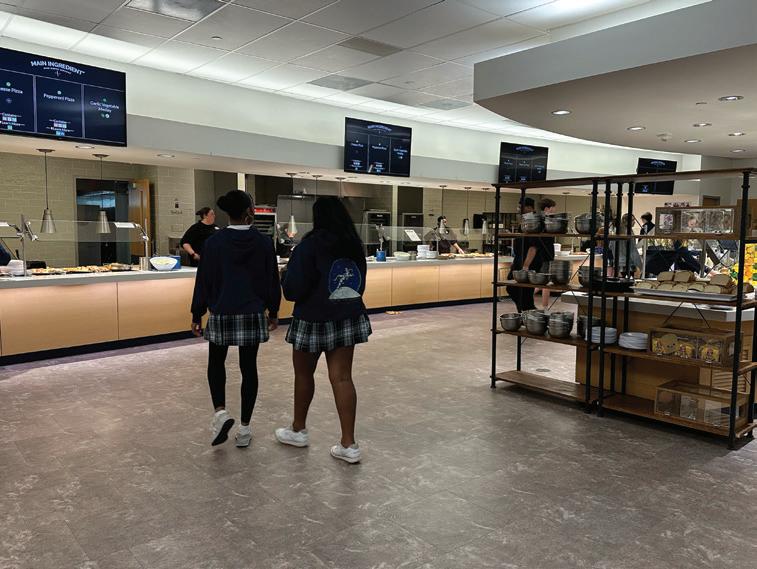

are currently stuck in a bad school district. This in turn would force those schools to improve, [this is] the power of free market competition.”
In 2022, Arizona implemented the largest voucher program in the history of the United States. However, according to ProPublica, a non-profit journalism organization based in New York City, the vouchers have had major implications on the state, causing hundreds of millions of dollars in budget cuts.
“Arizona's voucher program is a model around the country for backers of what's called school choice,” Wayne Schutsky, a Broadcast Field Correspondent covering Arizona politics for NPR, stated on NPR’s show Morning Edition. “But last year, it cost $718 million that critics say came at the expense of public schools and contributed to a budget deficit requiring cuts elsewhere as well.”
Aside from budget cuts, there have been reports of misused state funds from vouchers in Arizona. Two people, from out of the state, got access and defrauded the Arizona voucher program of over $100,000. In response to this news, the Texas state legislature has announced plans to combat this issue, utilizing the Office of the Comptroller, which regulates banks and federal saving associations.
“The Office of the Comptroller would be responsible for many of these anti-fraud protections,” Texas Senate Committee Chair and Conroe Senator Brandon Creighton said in a press conference on Jan. 28. “In addition to creating a degree of separation between recipients and the savings accounts.”
Students choose not to utilize lockers given to them, leaving their belongings out in the open
When freshman Searcy Mae Ferguson walked into the locker room at 4:01 p.m. to get ready for lift, she opened her makeup bag and was shocked. Everything in it was gone.
“I really didn’t even notice until Cassidy, my friend’s stuff had been taken,” Ferguson said. “And I went to get my hairbrush from my makeup bag, and my bag was still there, which is why I didn’t suspect anything, but basically everything inside it was taken.”
Throughout the winter sport season, many girl athletes have found their belongings, such as makeup bags and jewelry, missing before practice. And these athletes are upset, as they experienced a breach of privacy.
“Earlier in the year I had heard of a couple girls toiletry bags being stolen, but I didn’t really think anything of it at first,” freshman Parish Ellis said. “I was super upset because I had put [my makeup bag] at the bottom of my bag, which was completely hidden out of sight, so it was violating to have someone steal from it even when hidden.”
More and more girls have been stolen from, despite the assumption that it is safe to store items in bags in the locker room.
“It was an invasion of privacy and a betrayal,” sophomore Cate Cannon said. “Because that’s never happened in the locker room. Everyone leaves their stuff freely, it’s not a concern you’re thinking about. I don’t think someone’s gonna steal my stuff if I just leave it here, especially when it’s locked away in my bag.”
But it looks like people steal-
PRIVACY BREACHED
by Sloane Everett

ing these items are being selective. Girls have noticed that high end or luxury brands are stolen, and drugstore makeup is left behind.
“I walked into the locker room and I saw my makeup bag sitting on a bench,” Cannon said. “I ran over to grab it [because] I’ve been missing it. I opened it up, and dumped it all out, and half of the products were just gone. It was mainly all of the expensive products [such as] Rare Beauty and Fenty Beauty.”
Even though these girls can replace the stolen items, many cannot fully replenish what they originally owned, due to high demand or expensive prices. Currently, the prices of most of the makeup brands that were taken range from $30 to $40 per product.
“[I was] really upset,” Cannon said. “That takes a long time to collect. Obviously, you don’t just go to Sephora and buy it all at once. I’ve been collecting all that makeup for years. It’s gonna take a lot of money to replace.”
A group of girls have reached out to Athletic Director Thad Lepcio, asking to look at security camera footage and discuss stealing prevention actions.
“Obviously it’s disappointing,” Lepcio said. “ It angers me. It disgusts me. I think it goes against every one of ESD’s values of honor, respect and integrity. So from that standpoint, it’s incredibly disappointing. Where it becomes frustrating for me is that none of the items were actually in a locker, and so locker rooms are only really effective when things are in the locker.”
After hearing about the issue, Lepcio believes the best action the school can take is educating students on the importance of being truthful and the harm that comes along with stealing.
“I think we can talk about school values,” Lepcio said. “A lot in trying to reinforce the virtues and the values. We
talked about it. I think we’re very fortunate that when this happens, it is pretty isolated, and that we’re very lucky compared to a lot of other other schools. But we can’t ignore the fact that we still are a large community. There’s still almost 1,200 students, and sometimes bad things happen.”
The only solution to this problem, according to Lepcio, is having all student athletes store their belongings in the lockers provided in the locker rooms.
“We have reached out to every coach, and every coach of a girls team, to encourage girls to get lockers. We’ve sent out multiple messages in Schoology asking girls to come together,” Lepcio said. “ It’s not just girls. It can happen on the boy’s side. We haven’t seen the thefts. I think we are a school that has a plethora of lockers. Most students have at least two lockers, both on the academic side and the athletic side. Depending on the sport, you might even have a third locker out of the stadium. So we have plenty of lockers. And my message is, we have enough lockers for every student at the school, so please get one.”
Due to the privacy in the locker rooms, and since there are no security cameras inside, it is not possible to record what is occurring in the locker room and it is unlikely that the person, or persons, stealing will be caught.
“You could see exactly who went in and out and at what time,” Clark Family Head of Upper School Matt Peal said. “What you can’t see is what they’re doing in there. So you [would] have to make some pretty big leaps and accusations about people. If we wanted to game out a space that is more visible and more recordable, as where kids could drop things and leave them, then that’s a conversation. I would rather they just lock their stuff up. I don’t know why they are not doing that.”
Return approach implemented in hopes of monitoring equipment timely return
As Sophomore Taylor
Ampofo opened her email inbox on Feb. 13, she was greeted with an email from Veracross, issuing her a community violation for forgetting to return a computer charger borrowed from the Gill Library on Feb. 12.
At the start of the second semester, upper school librarian Mary Jo Lyons issued a new technology return policy in the upper and middle school library. Motivated by students’ forgetfulness, Lyons and the other library staff members collaborated to implement a policy that holds students accountable for returning their library resources.
“On the first day you borrow an item from the library, you receive a reminder in your email to return it by 9 a.m. the next morning,” Lyons said. “After that, you start automatically receiving CVs each day the [library resource] is not returned.”
Contrary to belief among the student body, the new return policy does not only apply to computer chargers, but to all technologies borrowed from the library.
“[The new policy] doesn’t apply to just [computer] chargers, it applies to all of the technology borrowed from the library,” Lyons said. “[ESD]
has a bring your own device policy, so students are expected to bring their own technology to school unless there is an emergency.”
When Lyons was brainstorming solutions during the first semester of the school year, she asked her advisees what they would do if they were one of the school librarians. Lyons was told that issuing students CVs would help increase the student body’s urgency to return their borrowed items from the library on time.
“I asked my advisees and other students last semester what I could do to get students to return their bor-
LIBRARY RESOURCES
Sophomore Parker Ellis returns a computer charger borrowed from the Gill Library on Thursday, March 6. “Whenever I forget to charge my computer [at home], I borrow one from the library, Ellis said. “The library has a bunch of helpful resources.
Photo by Stella Bartley
rowed library resources on time,” Lyons said. “They told me that CVs would be the most efficient way, so that’s kind of how the idea came to mind.”
Once the new policy was enacted, students started to receive automatic CVs for not returning their chargers to the library on time. Ampofo received one of the first CVs issued under the new library return policy for forgetting to return her borrowed computer charger. As a student who frequently borrows chargers from the library, Ampofo has struggled to adapt to this new return policy.
“I would say that I bor-
row chargers pretty often from [the library],” Ampofo said. “Usually I remember to charge my computer at night, but sometimes it just slips my mind.”
Although the new library return policy will most likely be difficult for students to abide by at all times, senior Sebastian Guzik ultimately understands why this policy has been implemented.
“I don’t like how easy it is to rack up CVs under the new policy,” Guzik said. “However I think that some sort of new policy was needed because people [kept] chargers for much longer than they should have in the past.”

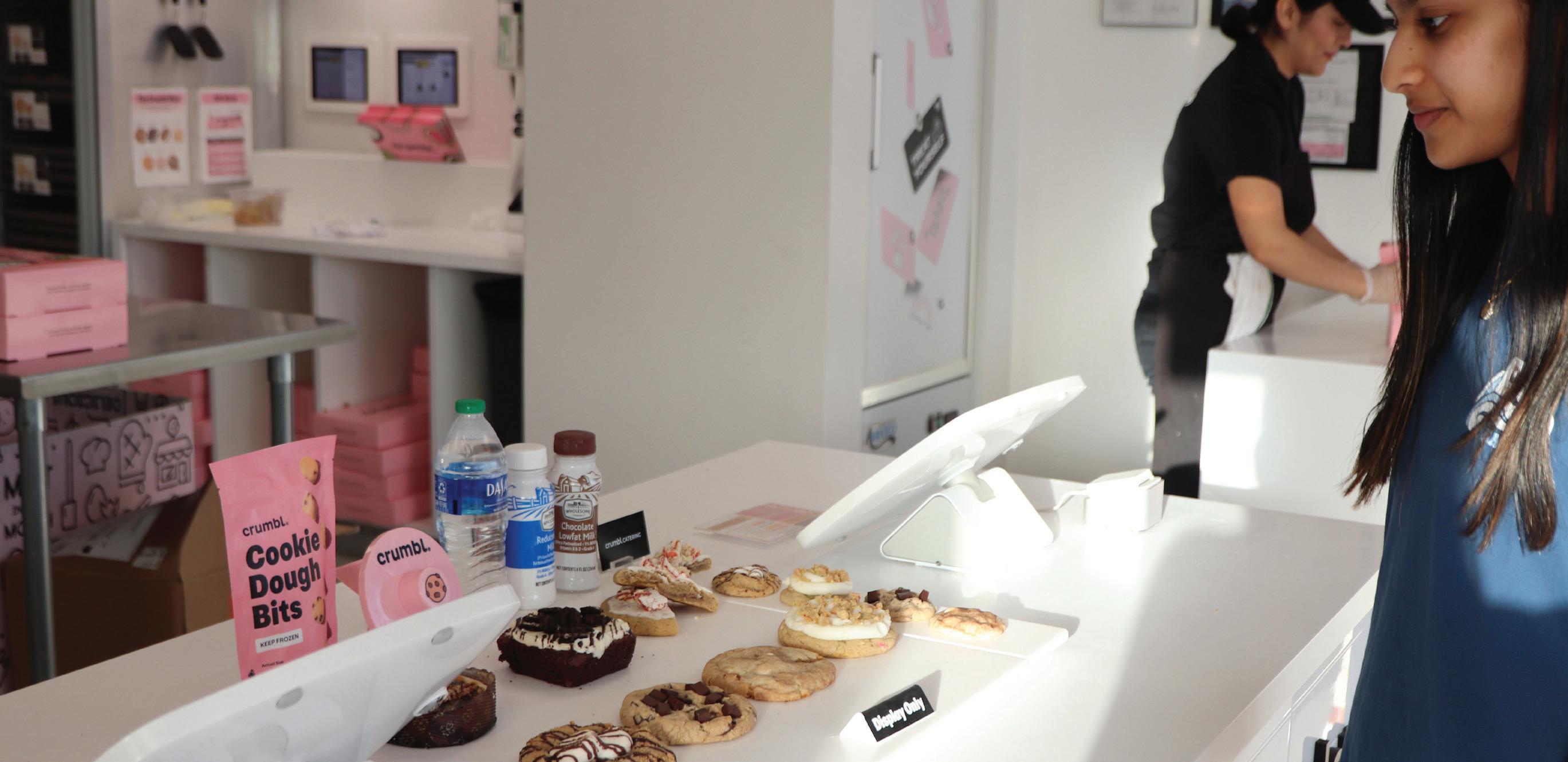
On a recent Friday night, sophomore Rose Beckett* chatted with her friends while waiting in the Sonic parking lot for her weekly order of fried mozzarella sticks and Dr. Pepper with sweet cream. When the server handed her meal through the car window, Beckett looked at the food in its pool of grease, and, for a moment, felt a pang of worry for her health, but she suppressed her concerns and took her first bite of fried heaven.
The American diet, consisting of all foods fried, dyed and huge in size, is a staple of American life but repulsive to the rest of the world. Overindulging in buttery treats, family-sized cand y bags and Flamin’ Hot Cheetos is normalized in the United States; therefore, as proven by the Center for Science in the Public Interest, diet-related diseases are the top cause of deaths nationwide, causing nearly 20 percent of deaths in 2016. Seemingly harmless in small portions, popular processed foods contain alarming amounts of unhealthy fats and sugars, as well as hidden additives, preservatives and coloring agents detrimental to one’s health. Classical and Modern Languages Department Chair and upper school French teacher Laila Kharrat believes that the lengthy shelf life of common grocery items should be an immediate turnoff for Americans.
“People in France are not typically obese,” Kharrat said. “They eat a lot of bread and drink a lot of wine, but the ingredients they use are fresh; there are no preservatives, which our bodies can’t break down. If you buy a baguette, it’s as hard as a baseball bat the next day, but bread in America can sit in your fridge for a week or two and not even mold.”
According to BMJ Public Health, extensive research suggests that common preservatives, such as sodium nitrite, disrupt metabolic processes, increasing a person’s chance of developing cancer by almost 30 percent. In response to the rise of chronic diseases caused by harmful preservatives, President Donald Trump appointed Robert Kennedy Jr.
to oversee the Department of Health and Human Services and join the president in his mission to hold food regulatory agencies accountable on behalf of the American people.
“President Trump has given me three instructions,” Kennedy said in an interview with NPR on Nov. 6, 2024. “He wants the corruption out of the regulatory agencies. He wants to return the agencies to gold standard, evidence-based science... And he wants to end the chronic disease epidemic with measurable impacts on a diminishment of chronic diseases.”
In addition to preservatives, companies use artificial dyes to enhance the visual appeal of their food products, often overlooking potential health risks to consumers.
Coloring agents, found in most American candies and sodas, are banned or heavily regulated in Europe. President Trump looks to follow the European example by restricting the use of additives, including dyes.
“The Safety and Health of all Americans is the most important role of any Administration,” President Trump wrote on Truth Social on Nov. 14, 2024. “… HHS will play a big role in helping ensure that everybody will be protected from harmful chemicals… and food additives that have contributed to the overwhelming Health Crisis in this Country.”
On Jan. 15, the U.S. Food and Drug Administration revoked the use of FD&C Red No. 3 after finding that the dye, introduced in the early 1900s, significantly increases cancer risk. Still, common dyes, like Yellow No. 5 and Blue No. 1, are legal despite studies suggesting that these dyes have similar impacts on health.
“The FDA is self-regulated, so they have advised our government to allow food dyes that have been banned in Europe since the ’90s,” Kharrat said. “I think big brand companies are more interested in advertising, branding and sales than in our health, even if they tout electrolytes and hydration as their goal. It saves companies money to use cheaper, artificial products like colors and flavors, which is at a cost
I am 100 percent concerned about the ingredients in Crumbl Cookies. I just don't look, because I am afraid.
Rose Beckett* Sophomore
to consumers' health.”
Crumbl Cookies, a rapidly-growing dessert chain, serves as a prime example of a brand that uses additives and coloring agents in its products. With a rotating menu and visually stunning website, the brand convinces customers to buy their large, decadent cookies sold in sets of six and packaged in signature pink boxes. Beckett, a regular customer, visits Crumbl twice a month.
“The different flavors each week keep me coming back,” Beckett said. “Personally, my favorites are the pink velvet [cookie] and the semi-sweet chocolate chip [cookie].”
According to the Wall Street Journal, the $1 billion chain boasts more than 1,000 stores nationwide, with each location reporting an average annual revenue of $1.16 million. Even so, underneath all the icing and sprinkles, Crumbl cookies contain synthetic ingredients.
“I can see from the outside, it's all about the color scheme,” Kharrat said. “Their cookies are really big, so they are obviously using a ton of artificial coloring. It's all about what the [cookie] looks like rather than if it's healthy for you. They are trying to convince young people to buy what looks cool and tastes good, and there’s absolutely no mention of whether it's okay [to eat].”
According to Food Babe, an investigative food blog, the original pink sugar cookie, which frequently appears on rotation, contains azodicarbonamide (used to bleach flour), which increases the risk of developing tumors, as well as Red No. 40 and Yellow No. 6, which are linked to the development of brain cancer and neurological issues. In addition to harmful additives, a full cookie can have up to 76 grams of sugar and 1,200 calories, which is more than half of the recommended 2,200 calories a person eats per day.
“I am 100 percent concerned about the ingredients in Crumbl Cookies,” Beckett said. “I just don’t look, because I am afraid. The amount of calories in each of the cookies is concerning. It's not like I’m consuming a full cookie by myself, but it's still insane.”
Crumbl’s success is largely because of the attention its unique desserts receive on social media platforms. Users post mukbangs, in which they taste and review fast food items and desserts.
“Mukbangs increase the amount of customers visiting Crumbl each week," Beckett said. “I see Crumbl mukbangs on my For You Page all the time. Honestly, it has become less about enjoying the food and more about reviewing the food. People find it fun to be able to rate things on a scale of one to ten.”
In addition to Crumbl, fast food chains, like McDonald’s and Wingstop, are frequented by teens in Dallas. Social media glorifies certain menu items and trends, whether that be eating a Triple Dipper from Chili’s or dunking a chicken tender in a cup of sauce. Beckett eats fast food four times per week, largely because of the influence of social media.
“They are easy to access, you don’t have to wait for a table and they usually [serve] fried foods, and who doesn’t love fried foods,” Beckett said. “I think it's fun to keep up with food trends. A lot of times when restaurants come out with something new and you see it advertised everywhere, you want to try it yourself. For example, I really want to try the Cheesy Roll Ups at Taco Bell. I’ve never been to Taco Bell, but these mukbangs are making it look really good.”
At younger ages, parents discourage fast food, but as teens start driving, parents are no longer able to monitor their diets.
“Since I’ve started driving, I’m definitely going to fast food restaurants that my [family] never took me to before,” Beckett said. “When you’re hanging out with your friends, fast food restaurants are a great place to go when you don’t know where to go.”
*Names have been changed

Staff writer Josephine Holmes gathers content for her web story on Feb. 27. Holmes interviewed NBC News anchor and ESD parent Meredith Land after she spoke with the newspaper staff about her journalism career. The process of interviewing is essential in gaining a solid understanding of the topic and planning the story’s outline.
“I think having a really good interview helps create the whole story and it’s what everything is centered around, Holmes said.
“Through talking to people from different walks of life and just considering these different perspectives and experiences that I never would’ve thought of before.

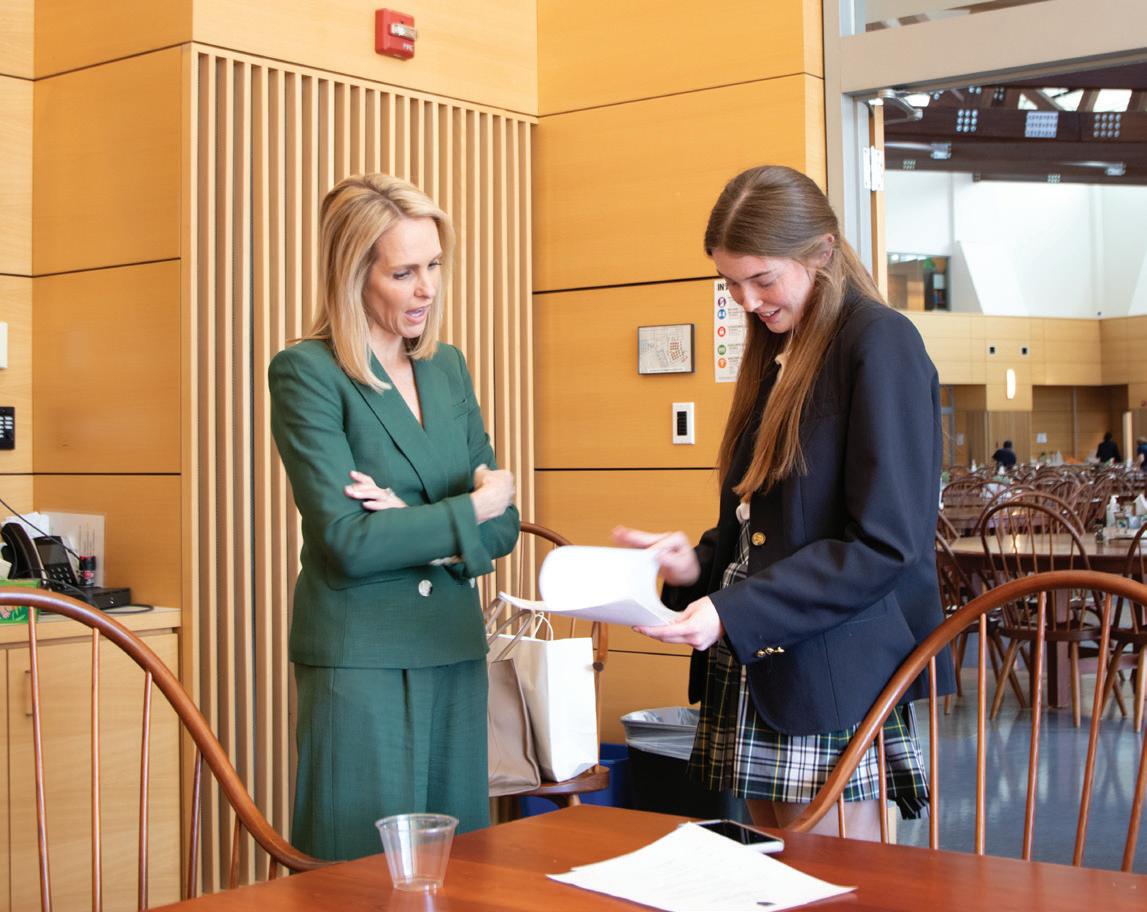
Web stories are uploaded four to five times weekly and the stories primarily cover recent events within the ESD community, forcing Eagle Edition journalists to work on a time crunch.
“It can be stressful to write stories in a short period of time, but that is the thrill of being a journalist, junior and business manager Margot Cathey said. “I think we all enjoy getting to go to community events and things around ESD that we wouldn t normally go to because we are covering them for a story.
The deadline for web stories is often the same day that the event occurred, which can make it difficult to balance with school work.
“Sometimes I have to put school work aside for later in the night to focus on gathering all of my content and writing my story during the day, Cathey said. “Like I said, it can be difficult to manage but it’s different then just having to do school work, I actually enjoy writing these stories.

Each Eagle Edition staff member is responsible for writing a web stories on top of their already assigned stories for the current print issue.
This year, the staff consists of 26 journalists.
Assistant web editor Beau McKnight pulls back the curtain on the process of writing and uploading web stories to the Eagle Edition website, EsdEagleEdition.org, where stories are posted daily on current events affecting the community. This short feature zooms in on staff writer Josephine Holmes's web story about NBC News' Meredith Land and her conversation with the staff on Feb. 27
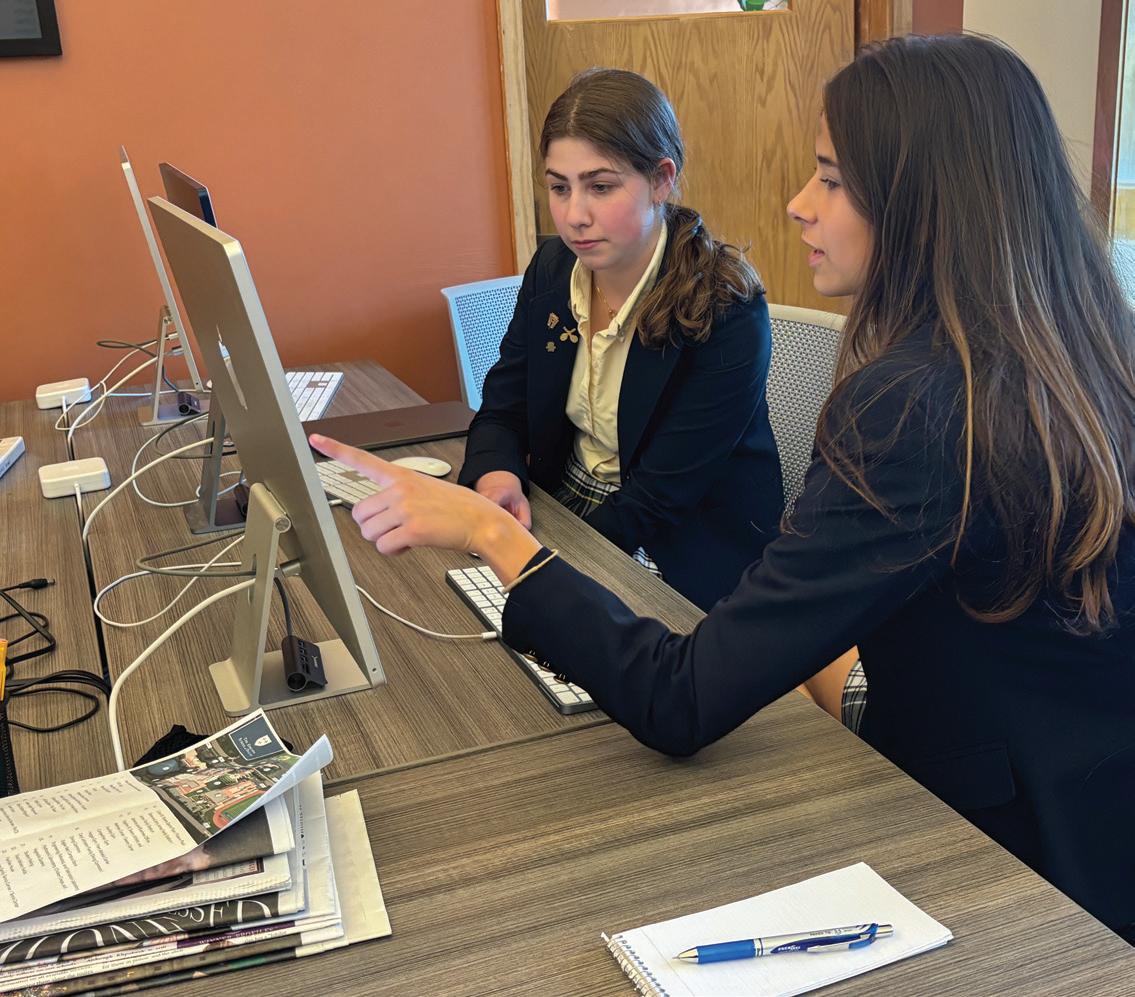
ESD seniors remain dedicated to Interfaith as 2025 school year continues
Margot Cathey Business manager
Each year, seniors take on a meaningful capstone project that allows them to give back to their community.
This year, they have chosen to partner with the Interfaith Family Services, whose focus is to empower families in crisis to break the cycle of poverty.
Selecting the senior capstone project requires a lot of planning. First, juniors split up into groups based on their service interests. Then, they visit their organizations, present their experience to their grade and finally, the entire class votes on one organization to serve. Senior class community service council presidents Josephine Bank, Tatum Croucher and Caitlin Hills helped plan the entire project.
“The process was very fun
because we were able to bring light to many different organizations while highlighting ones we felt fit our school's goals for philanthropy,” Bank said. “Interfaith is one of the most successful homeless shelters for single mothers, and it teaches them to pay bills, work jobs and help them get back on their feet. They also have childcare centers so that mothers can go and work. The seniors' main priority is helping all of the children so that the mothers have less to worry about.”
Despite their enthusiasm, the senior class encountered some difficulties communicating with the organization during the holiday season, as they were in the midst of final exams and many had after school commitments.
“The Christmas drive consisted of lots of faulty communication,” Bank said. “We were notified about it with little notice and had trouble signing

The seniors' main priority is helping all the children so that the mothers have less to worry about.
Josephine Bank Senior
up for the on-site events. The senior class was also dealing with college applications, finals and sports during the time when the organization wanted us to go after school instead of on the weekend. Thankfully, now everyone is aware, and we have sign-up sheets prepared to keep everything organized. I have also personally been speaking to the organization, so it helps with relaying information to the students.”
ESD is not the only school in the area doing this type of project. Similar to the senior’s capstone project, Jesuit College Preparatory School of Dallas seniors participate in community service every Wednesday at the Wilkinson center in East Dallas, restocking shelves at that food pantry.
Senior Jack Van Duinen volunteers with this organization committed to combating hunger and poverty.
“Every Wednesday, I have the opportunity to restock shelves at a food pantry and greet customers who come through,” Van Duinen said. “We help make sure everything is organized and good to go, so that customers have a good experience.”
On a regular day of service, a Jesuit senior restocks shelves and ensures customers walk out with enough supplies and a smile on their face.
Because the Jesuit seniors take their day off school every Wednesday, their commitment to this service organization is significant, impacting the students.
“It impacts me and the other guys I am there with in a meaningful way. It teaches how to be truly selfless and caring. We are blessed with a lot of Jesuit students, and it's important to take a day out of our week and serve those in the community who are in need of food,” Van Duinen said. “The opportunity to serve at this site impacts me personally because I have become a more caring individual and have had the chance to see what it means to be a man for others.”
Community service is an important component of several schools' missions around the Dallas Metroplex. The ESD community finds it essential to participate and engage in service, with the capstone project being the final project for students.
“[To help out with Interfaith more] I have also been talking with our dean to figure out ideas to ensure the entire class is able to participate,” Bank said. “We are going to use class funding to shop for the children so that those with athletic obligations are not left out. Many students had amazing connections when we visited and have absolutely loved being able to go and help. We are working very hard to help as much as possible, and I am beyond proud of the senior class.”
“The shelves consist of beans, corn, rice, spaghetti, water, potatoes and more, similar to what you find at a grocery store,” Van Duinen said. “We also restock fridges with items that are required to be in the fridge. After we do this at the beginning, we then assist the back of the building by uploading items from a delivery truck that are donated to the pantry.”

We proudly support the Eagle Edition
College admissions and internal motivation cause many to pursue a challenging
Feeling growing academic pressure, sophomore John Edge Sowa overloads his schedule with AP and honors courses.
Sowa, who is enrolled in two AP courses this year, has applied for seven AP courses for his junior year. And, on top of these rigorous classes, he is a part of the varsity football team, JV basketball team, track team, the Honor Council and Eagle Scouts. Though Sowa joined these activities because he enjoys them, he also is pursuing them because of the pressure he feels from colleges, parents and peers.
“I feel a sense of pressure mainly from my expectations of myself,” Sowa said. “However, I enjoy many classes, sports and extracurricular activities.”
All of these activities take up time and energy, so creating a healthy balance can be challenging.
“This year, the workload has not been too bad for me,” Sowa said. “The work is tough, but I use my time efficiently to prevent myself from too much stress.”
For Sowa to succeed in all the different activities, he has to prioritize specific tasks.
“I have learned how to manage my time well by using my study hall and sometimes sacrificing sleep,” Sowa said. “In the end my hard work pays off which is what motivates me to keep working hard.”
Junior Harrison Adams has a similar academic schedule to Sowa’s but with different activities and routines. Adams is enrolled in six AP courses this year and applied for four AP courses next year. He is also part of the robotics team, tech-theatre and Quiz Bowl. To stay on top of his work, he makes sure to do his work in advance.
“I try to look ahead to the coming week and do as much homework throughout the week as possible on Sunday afternoon or evening,” Adams said. “[I use] homework throughout the week to help me study, rather than studying alongside doing the homework.”
Each of these students use different methods to achieve academic success. Sowa needs a study hall, because he is a three-sport athlete. However, Adams does not have a study hall, even though he is a part of robotics and tech theater, which take up time during both weeknights and some weekends. Freshman dean and English teacher Heather Cernoch feels that one cannot permit a student to take multiple AP courses without knowing their other commitments.
“I would never say a student should not overload their schedule with AP courses,” Cernoch said. “That is because it depends on the student and their situation; for some, that kind of overload will work.”
Many students overload their schedules with AP courses on top of their sports and activities, which may seem manageable, but can

have consequences. AP enrollment at ESD has steadily increased since the 20222023 school year, but there was a slight drop during the 2020-2021 school year. Following the 2022-2023 academic year, the numbers have continued to rise, with 258 students in enrolled in 2023-2024 and 272 in 2024-2025, according to Josephine Mucciolo the scheduler, registar and testing coordinator.
The College Board has seen a similar increase over the years, with many students enrolled in at least one AP course. Looking at a broader scale in Texas, 35 percent of the class of 2022 took at least one AP course, while 30.1 percent of the class of 2012 took one AP course, according to College Board. This subtle increase
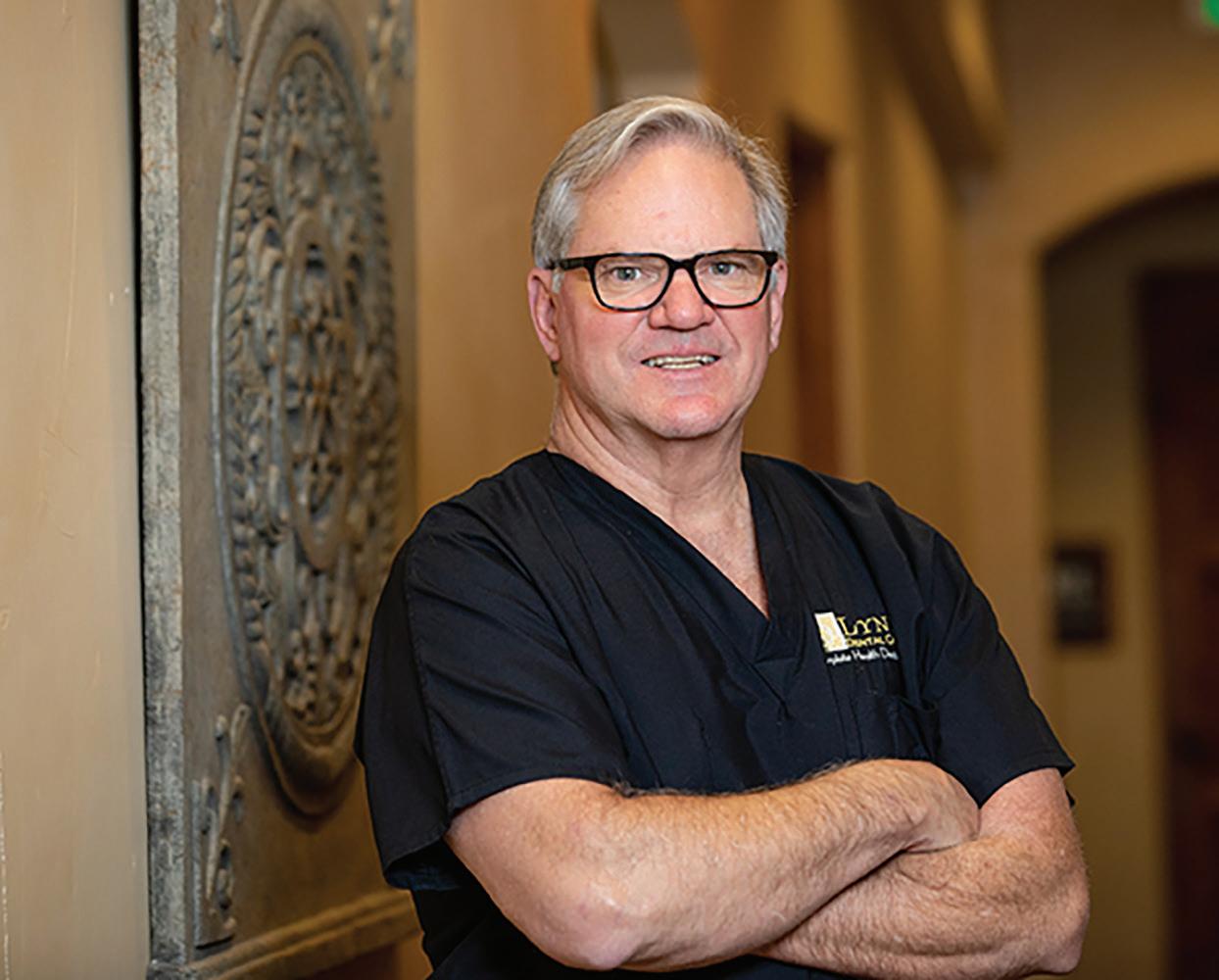

in AP enrollment could be attributed to increasing pressure to impress colleges.
“Colleges are looking for students who make good grades in a combination of AP, honors and regular courses,” head of college admissions Chris Gonzales said. “They are also looking for the kids who impacted their school by serving the community, playing a sport or being in clubs.”
While students may direct their attention and energy to overloading their schedules with challenging courses, they should be placing the same amount of effort into enjoyable and unique activities.
“Colleges want a class of all kinds of students,” Gonzales said. “Who bring different things to the table for their college campus.”

During town hall on Jan. 16, five teachers came forward to announce the new classes being added to the curriculum next school year. As they discussed their classes’ subjects, excitement spread amongst the students as they envisioned these courses coming to life.
Three new classes were added to the curriculum for the 2526 school year: 20th-century conflict, aerospace engineering and philosophy and literature. The people who will teach these courses are the ones who spearheaded their creation.
“Classes are department and teacher-driven,” Academic Dean Amy Henderson said. “So if the department decides to put forth a class, it goes through the department chairs and the group that meets, and then they present it and talk about it.”
The 20th century conflict class is a history elective that will be taught by sophomore dean and upper school history teacher Marc Salz. Twentieth-century conflict and diplomacy is one of Salz’s main areas of interest, so he is excited to teach the course.
“I taught [the class] five years ago, but I am reimagining parts of the class to allow for frequent and ethical use of AI on various assessments,” Salz said. “I hope students graduate to a higher
I am excited for the opportunity to educate myself further on the philosophy of the concept of perfection and how it is not always ideal.
Isabella Lowry Freshman
level of AI use. Further, I hope all the students will be reticent to support war unless all other options are exhausted.”
According to Salz, students in the class will choose five of eight topics, such as terrorism, child soldiers, women at war, decolonization, innovation and technology, the economics of warfare, strategic bombing and genocide, to evaluate how “total war” changed the face of warfare in the 20th century.
The aerospace engineering class was created by upper school engineering instructor Donald Snook. After mechanical engineering was added to the curriculum this year, many students expressed interest in the introduction of an aerospace engineering course.
“I gave [my mechanical engineering students] an option between aerospace and digital electronics, and every single one of them wanted aerospace, so it
seems to be a popular course,” Snook said. “I’m taking training on the courses right now to be able to teach it for next year, so I’m very excited about it.”
The class will start by looking into the principles of flight. Students will build gliders out of balsa wood and study motorized planes. Students will also use a flight simulator to explore the take-off and landing of planes and map out how planes navigate with GPS systems. After this unit, students will study rocketry and learn how rockets lift off and how satellites orbit the Earth.
“I have a daughter at the Airforce Academy who's been studying flight,” Snook said. “So the fact that I get to see and study and also be able to teach students who are equally passionate about it [is exciting].”
Upper school English teachers Harry Ruedi, Natalie Webb and Heather Cernoch collectively came up with the idea for the philosophy and literature class. In preparation, they have been taking graduate school courses together.
“A lot of the ideas for this class came from our own collective experience working together on academic pursuits,” Cernoch said. “And we know that a lot of colleges and universities have courses like this. A course like this really supports the college readiness standards that ESD has, and it allows students who are interested in literature-based courses the opportunity to take an elective literature-based course.”
The class will be taught by multiple faculty members, and each semester, the class will cover a new topic, depending on the teacher’s expertise. For the fall of 2025, the class will focus on existentialism, and the spring of 2026 class will cover utopias and dystopias. Given that a new topic is taught each semester, students will be able to take the course for multiple semesters if they choose to. Freshman Isabella Lowry is planning on taking the course in the spring.
“I have always had a fascination with literature and am happy to have another opportunity to learn more. I also love dystopian futuristic works and want to study the two more in depth,” Lowry said. “I am excited for the opportunity to educate myself further on the philosophy of the concept of perfection and how it is not always ideal.”
On top of these new classes, some adjustments have been made to existing classes. Honors Latin IV will count as half of a religion credit, since the class will look into the Bible and religious works in Latin. In addition, the policies on independent studies have changed; they will only be available for seniors and will be graded as a pass/fail class. Speech and Debate also has been moved from a class to a community credit.
Henderson feels all these new classes will allow students to dive deeper into their own interests and explore new passions.
“[All the teachers teaching these new classes] are really excited about the new courses and new opportunities,” Henderson said. “And, giving students and those different departments more areas to explore on things that they might be interested in.”
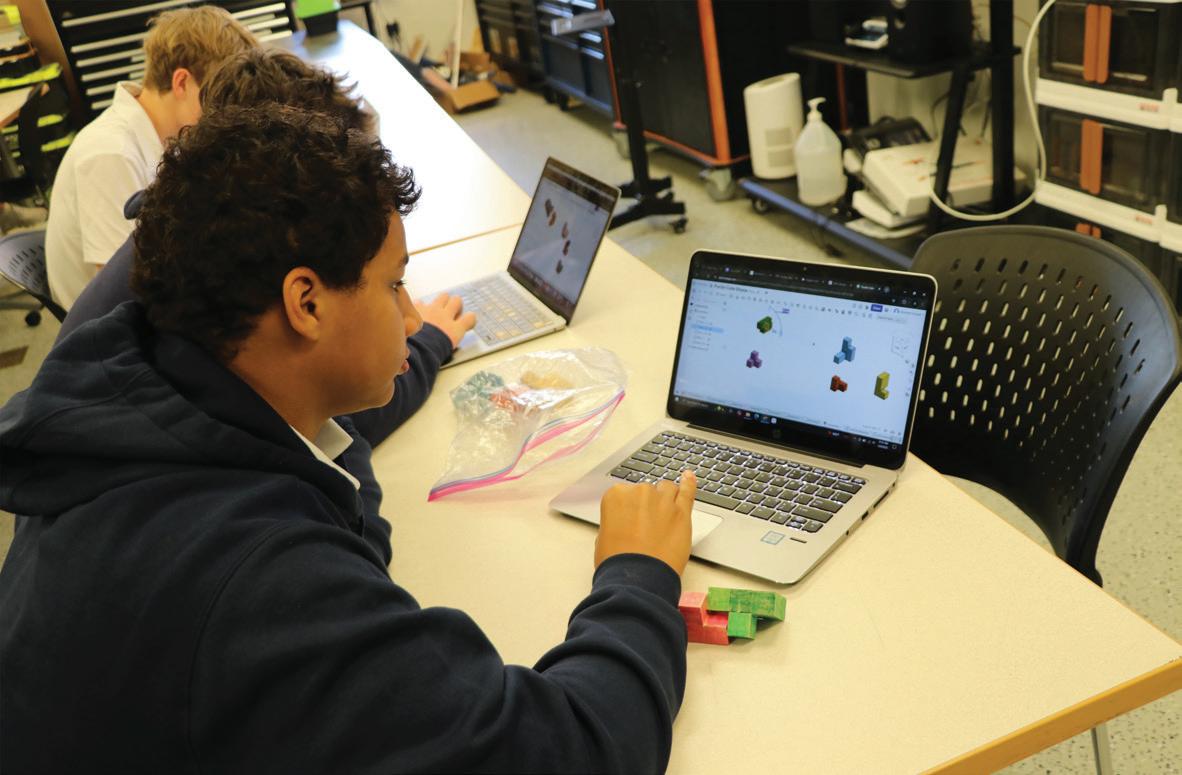
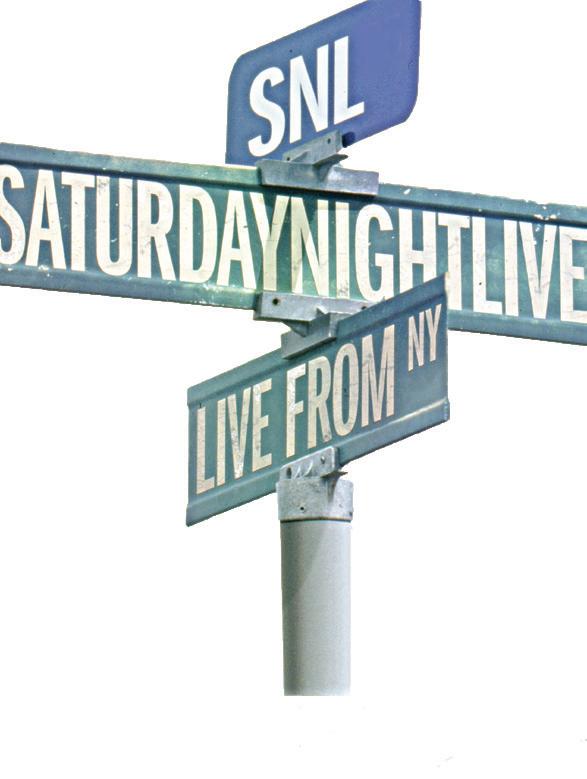
The nighttime comedy show, “Saturday Night Live, “ hosted its special 50th-year anniversary show on Feb. 16, with over two hours of celebrity guests and skits. The show opened with a monologue from actor Steve Martin, who has hosted SNL 16 times over his career, according to NPR, trailing behind Alec Baldwin who has hosted SNL 17 times. The two-and-a-half-hour show consisted of seven musical guests, from Sabrina Carpenter to Paul McCartney. Over the past 50 years, SNL has produced over 900 shows, with around six skits per episode and at least one musical guest
On March 2, “Wicked star Ariana Grande opened the Oscars with a tribute to “The Wizard of Oz, “Somewhere Over the Rainbow, leaving viewers on the edge of their seats for the announcement of the Oscar winners. The movie “Anora was released on Oct. 18, 2024, and it won five Oscars out of the six that it was nominated for. The producer, Sean Baker, took home four of those awards tying Walt Disney, who won four Oscars in 1953 for four separate films, for the most Oscars won in one night, according to the Daily Cardinal. Adrien Brody, star of the movie “The Brutalist, where he plays a Holocaust survivor and architect, won best actor and now holds the record for longest acceptance speech with six minutes of talking. Conan O Brien hosted the event, filling it with jokes about multiple actors and a sentimental tribute to actor Gene Hackman and the California wildfires.
Dallas Mavericks fans have taken a rough hit this month. Star player Luka Don č i ć was traded to the Los Angeles Lakers on Feb. 1, and then soon after, Mavs leading scorer Kyrie Irving tore his ACL in a game against the Sacramento Kings on March 3. In the first quarter of the game, Irving drove to shoot and stepped on opponent Jonas Valančiūnas ’ foot, resulting in an injury, according to The Athletic. Irving had already missed five games before the ACL tear, due to an injury in his back, and was playing his best season ever, averaging 24.7 points a game, 4.8 rebounds and 4.6 assists according to The Athletic website. Irvings orthopedic surgeon, Derek Ochiai, expects him to make a full recovery but will not be back before the season is over, according to The Sporting News Website. was released in September of 2023.

Actress Michelle Trachtenberg died on Feb. 26. at the age of 39. Trachtenberg was most commonly known for playing the character Georgina in the popular show among teen girls, “Gossip Girl".” Trachtenberg was found in her apartment by her mother the morning after her death, according to the New York Post. Trachtenberg began acting when she was 14 in “Buffy the Vampire Slayer,” and since then, she appeared on many shows and movies, contributing to her 15 entertainment related awards. Before passing, Trachtenberg was producing a screenplay that she had written called “Toy Monster.” According to USA Today, the chief of medical examiner in New York City said that Trachtenberg’s cause of death is undetermined.

“Suits: Las Angeles“



care of his fish when he left for college this fall after graduating from Oak Hill Academy in the spring of 2024. From a young age, Ryan aspired to be a zoologist, so he wanted as many pets as possible. Ryan had a swordtail fish, a rainbow guppy and multiple black skirt and red-eyed tetras.
“When [Ryan] told me needed to take care of the fish I was fine with it,“ Carson said.
“The annoying part was setting up the automatic light.
As a biology major at TCU, Ryan knew the best technology needed for fish health and prosperity. Ryan set up an intricate automatic light system for the fish tank that rotated on a cycle, with a timer set on his phone. As Ryan got ready to start his next chapter at TCU, he assisted Carson in setting up the lighting on Carson’s phone to ensure that the fish stayed on the correct lighting regimen.
“At first the light was paired to Ryan’s phone and timer, so when we left it always stayed on, Carson said. “When we figured out how to address the problem, it was a quick fix.


but they were
of
by
Ellis and her friends wanted to purchase a
from a local pet store, hoping to own a pet that they could care for together. But when they arrived at the store, they discovered that they were not old enough to purchase a fish.
“We were surprised when they told us that we couldn t buy the fish,“ Ellis said. “We had no idea there was a rule like that. Ellis and her friends returned to the array of fish, looking at what would have been their new pet, while discussing their disappointment.
“We were talking about how we were not able to buy the fish, because we were not old enough, Ellis said. “And a random guy who was also looking at the fish said he heard us talking and offered to buy us the fish we wanted.
The man bought Ellis and her friends two fish, and they named them Tom and Jerry because one was bigger than the other. Ellis offered to take the fish home, without telling her mother or step-father.
“When I walked in the door with a fish in my hand, my mom had such a confused look on her face, Ellis said. “My step dad told me that I wouldn’t be able to keep the fish alive longer than two days, and here we are seven months later.
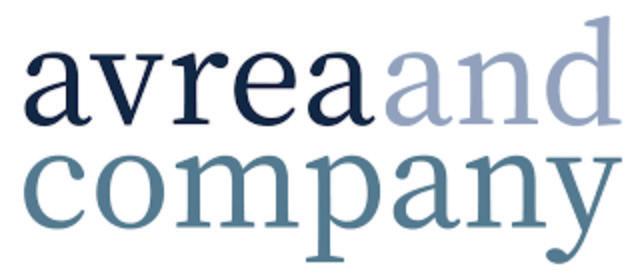


MOURNING THE LOSS OF HER GUPPIES in November of 2024, sophomore Kennedy Kuchler decided on a pink betta fish, with half of his fins missing, to be her companion. Kuchler pondered names that would describe the perfect pink color of her new pet and decided on Sashimi. Kuchler has owned several fish since she was little. “My parents jokingly got me a fish when I was five [years old], Kuchler said. “They wanted me to learn responsibility before I got a dog.
Kuchler has not only learned responsibility taking care of multiple fish, but she has grown fond of having an aquatic pet and enjoys designing their tanks. Kuchler creatively designs a new fish tank each time she adopts a new fish. Kuchler’s mother, Paige Kuchler, is an interior designer who renovates and designs spaces, and that has helped Kennedy Kuchler have a feel for design.. “My favorite part of having a fish is designing their tanks, Kuchler said. “I have always loved helping my mom with her projects, and designing their tanks is like my own little project.




Craighton Jefferies | Staff writer
Sophomore Khizer Salm-
on walks into his honors chemistry class after Christmas break and is immediately surprised. His teacher, Walter Warner, is not the one teaching the class. In his place, upper school chemistry teacher Theresa Harris stands at the front of the class and announces that she will be his new teacher for an undetermined amount of time.
“I was surprised to see Mrs. Harris instead of Mr. Warner,” Salmon said. “I wasn’t expecting it but changing teachers mid-year actually has not been that bad.”
While switching teachers has gone more smoothly than many suspected, there are definite changes, such as new note taking methods and class structure.
“Some of the difficulties were probably just adjusting to a completely different teaching style and environment,” Salmon said. “I think I’ll be very prepared for exams though.”
Not all teachers teach the same way, so adjusting proved difficult for Salmon in the beginning. However, Harris was supportive under the circumstances.
“[Harris] does a nice job of making sure everyone understands the topics before we move on,” Salmon said. “I think Mrs. Harris has done a great job teaching us the material and giving us a substantial amount of time to study for tests and quizzes.” Salmon is not alone in this situation; there are two other honors chemistry classes and one AP that switched to Harris. Other members of the science department, who do not usually teach chemistry, like
upper school biology teacher
Marissa Infante and upper school psychology teacher Amy Henderson, stepped in to teach in Warner’s absence as well.
“It's been since 1990 that I've [taught AP Chemistry], so I had to go back,” Harris said. “I'm brushing up, relearning it as we go, but I've actually enjoyed it – I've loved going back and hopefully I'm learning it well enough to be able to explain it to the AP.”
Alongside students’ adjustments to new teachers, there have been difficulties for the teachers in new classes. Their schedules and workload have changed.
“Everybody's been handling it like a champ,” Harris said. “But for me, names are the hardest because I’m so bad with them. Also, having three different preps and being able to set up labs for academic, honors and AP at the same time is a bit of a juggle – and because they test differently.”
However, science is not the only department affected by long-term leaves; in the math department, upper school math teacher Angelica Mathis was absent for maternity leave during most of the first semester.
“I thought [switching teachers] was gonna be more difficult than it was,” sophomore Story Sinelli said. “But, Ms. Lichty was really nice, and she made the transition really easy. She was super approachable, and she tried her best to help us with everything. She was always there to meet with. [Transitioning] was a lot easier than I thought.”
The substitutes at ESD like long-term substitute Jenny Lichty, and teachers filling in like the three biology subs along with Wooldridge Mathematics Department Chair
I thought [switching teachers] was gonna be more difficult than it was, but Ms. Lichty was really nice, and she made the transition really easy.
Story Sinelli Sophomore
INTERACTIVE LEARNING
Chemistry teacher Theresa Harris, filling in for Walter Warner, teaches her students about gas laws with a demonstration of changing pressure on Feb. 21. The vacuum changes the pressure, making the trash bag wrap around sophomore Khizer Salmon's body. "With the vacuum on, it changed the pressure, and made it feel like a tight hug," Salmon said.
Chris Northrup, have done well with teaching classes, according to their students.
“I felt prepared for exams,” Sinelli said. “I think Ms. Lichty did a good job –we had a bunch of review days leading up. She did a good job helping us review for the exams, and she gave us lots of review packets, so the exam was not bad.”
Mathis, who returned after exams, was impressed with Lichty’s work.
“I think she [did] a great job,” Mathis said. “The students really loved her, and it seemed like they learned
what they needed to learn – they were definitely prepared to take exams. Ms. Lichty did a great job preparing them.” And the transition back from the substitute to the regular teacher was not a difficult one either, according to the students.
“[Mrs. Mathis] is very different from Ms. Lichty, but they both teach the same way, so it was a pretty easy transition,” Sinelli said. “And they're both super nice, very helpful and easy to meet with, so it's been good [with Mrs. Mathis back.]”
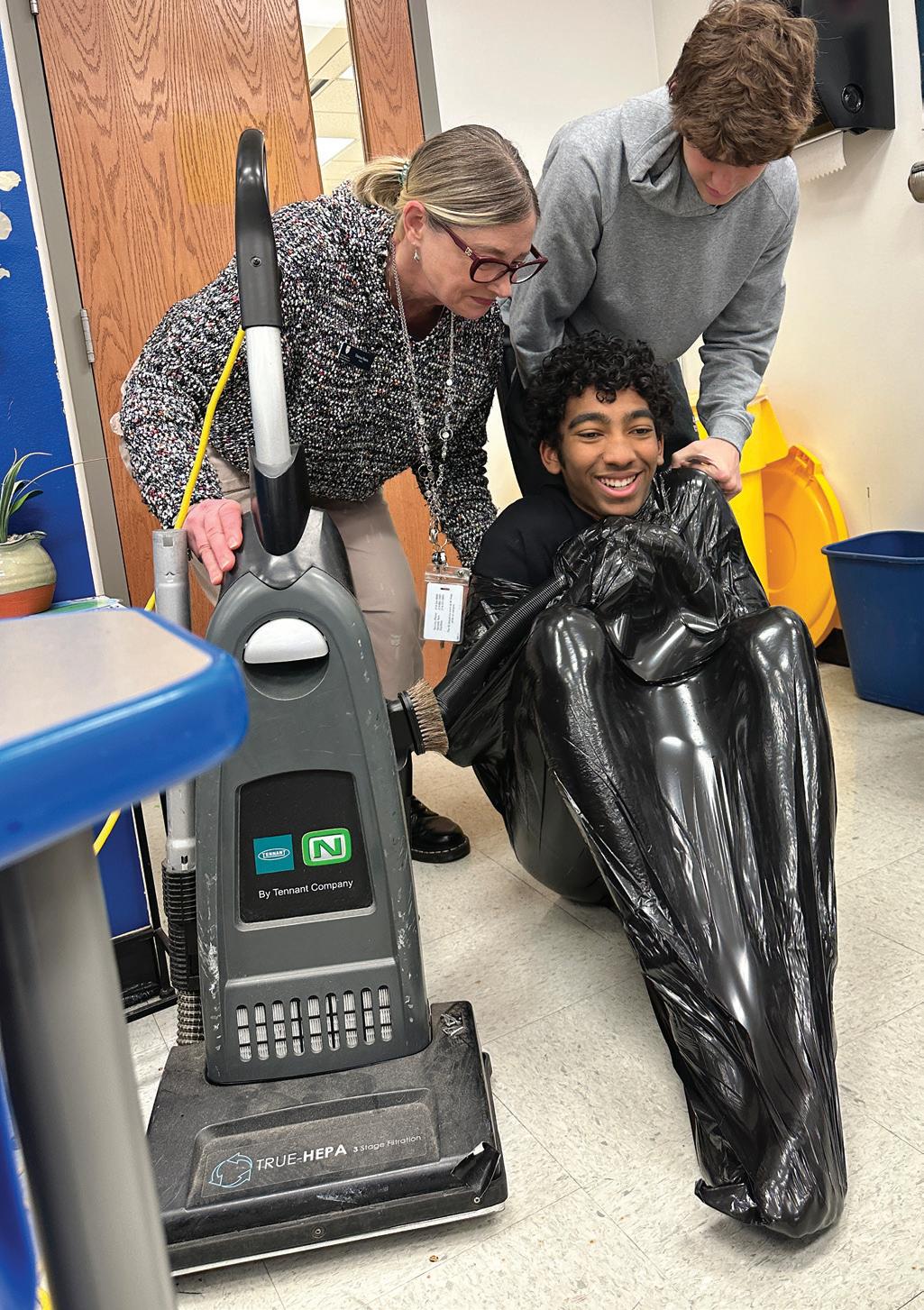
Young alumni share college experiences, career knowledge with seniors
On Tuesday Feb. 13, seniors filed into the Bell Theater after chapel to celebrate the milestone of 100 days until graduation. During the event, the class of 2025 heard from young alumni about their experiences after graduating from ESD. They spoke about college and reflected upon the meaning of the last 100 days at ESD. This event is hosted every year by the Alumni Association, and typically begins with the Director of Alumni giving a presentation on the Alumni Association and ways for seniors to stay involved after they graduate. Since Director of Alumni Asia Hawkins was
out sick for the event this year, Senior Dean Marcela Garcini started the event by introducing the three young alumni who came to speak to the seniors: Jack Loftus ’20, Biz Newsom ’20 and Blayre Riley ’20.
“[The three alumni] were chosen because as young alums, they are off to a great start in life [and] career following college and have their first class reunion coming up on March 8,” Hawkins said. “At their age [and] stage in life, they were chosen because of the advice [and] feedback they can give to the seniors since they were in their shoes not too long ago.”
The alumni spoke about how ESD prepared them for their time in college, the impact ESD connections have

ALUMNI ASSISTANCE
Jack Loftus 20, Biz Newsom 20 and Blayre Riley 20 speak to the senior class on Feb. 13 during the 100 day until graduation event. "[The speakers] can easily relate to the seniors," Director of Alumni Association Asia Hawkins said. "And can offer valuable advice and tips for their transition to college and life after ESD."
played thus far in their lives and career and gave advice to the seniors on finishing out senior year. They also talked about making college decisions, the importance of staying involved with ESD after graduation and emphasized the importance of the seniors cherishing every last day of the year as they will never be together as a class in the same room again after graduation.
Even though the 100 days to graduation seems like a long way away, Garcini thinks that this discussion is important to have now.
“I think the [seniors] are so excited about like college news and are already thinking about [when their college] registration day [will be], so I think it’s a good time, it is 100 days,” Garcini said.
“I think the day is extremely important because the time goes so fast.”
After the alumni spoke, Senior Class President Ethan Pham and Senior Class Officer Katherine Clark gave short speeches to the class reflecting on the tight bond between the grade and the importance of finishing the year off strong and making lasting memories.
“Asia Hawkins, the alumni director, emailed me and asked if I would be willing to give a little talk [during the 100 days to graduation event],” Pham said. “I love our grade a lot and I wanted to make sure everyone knew
how I felt that we had 100 days left together. So I wanted us all to embrace what we have left.”
After the speeches, the senior class made their way to the downstairs of the Frank for a special Canes lunch with JD’s Chippery cookies for dessert provided by the Alumni Association. Normally alumni T-shirts are given out and a raffle takes place at the event, but these activities were postponed because Hawkins was out sick.
Hawkins thinks it’s important for the seniors to know that their time at ESD doesn’t just end with graduation.
“We have a community of over 3,500 alumni and have opportunities [to] network and connect with each other through events in Dallas and across the country,” Hawkins said. “It’s important for ESD students to realize that their ESD network is incredibly strong and is here to support them in every stage of life. The Alumni Association at ESD provides valuable opportunities to network and connect with others, and also to support ESD in various capacities like volunteering and giving as well.”
Before the year wraps up, the Alumni Association will host their annual Alumni Discussion Panel on March 7 for juniors and seniors during Alumni Weekend and a Dedman Lecture in April where Devi Nair ’12 will speak.

Emma Allen News editor
As the lights dimmed and the sweet aroma of perfume filled the air, the stage came alive with the charm of 1930s Budapest in “She Loves Me.” Set in a quaint perfumery, the musical follows the blossoming romance between Amalia Balash, played by junior Evellyn Hargrave, and Georg Nowack, played by senior Jake Infante. On the surface, they are nothing more than bickering coworkers, but through a series of anonymous letters, they unknowingly fall in love. The show is based on the films “Shop Around the Corner” and “You’ve Got Mail.”
With a talented cast bringing the endearing characters to life, the production transported the audience to a whimsical world where love, laughter and the fragrance of possibility filled the air.
The production required extensive preparation. From early auditions in October to the opening night on Feb. 27, cast members and crew worked long days to bring the show to life. The set, designed by upper school theater director Ronnie Watson, was particularly praised for its intricate details, making the perfumery come alive in vivid color and depth.
“[The tech crew] is one of those things that I think people take for granted when they come and see a show, whether they're seeing it here or they're seeing like Broadway Dallas, I don't think they realize how much goes on behind the scenes,” performing arts department chair and upper school fine arts teacher Lauren Redmond said. “Because in the end, without them, our sets would look very different. We would still have sets, but they would be very, very different. It would be a little bit more minimalistic, maybe not as detailed, et cetera. So it really does matter.”
The path to the stage was
not without its challenges, especially when it came to balancing late-night rehearsals with schoolwork and other commitments.
“I have meetings before school, then school, then musical rehearsal typically from 4:15 p.m. to 5:30 p.m., and then I go straight to my dance studio and have ballet from 5:30 p.m.-9:30 p.m., and that's pretty much everyday,” Hargrave said. “Because of this, finding time to fit in school work is very difficult, and I sacrifice rest and other necessities because I have to get it all done, and that can be tricky, because it leads to getting sick.”
For those new to the production process, the time management came as a shock. Junior Stella Wynne, who participated in the musical for the first time as part of the ensemble, did not expect the amount of time needed for rehearsing.
“The biggest surprise is how much time it takes,” Wynne said. “The leads spend so much time rehearsing, I don’t know how they have time for school work.”
The hard work of the cast did not go unnoticed by their director. Redmond emphasized the amount of effort that it took to bring the show to its full potential.
“One of the things that I wish people would understand is that it's not like these kids just auditioned and were those characters,” Redmond said. “It's not like they came right out of a box as that character. I mean, they had to work at it, but when we see them audition, we see the potential, and we know these kids really well. So we know what we can get them to, and they all delivered.”
This production included casting of both theater “newbies” and “veterans.” Among those veterans is Hargrave. “This is my fourth lead in
In
the end, you have that final hustle and push, and then you can kind of bless it and release it, knowing the show is done and you can just let it ride.
Lauren Redmond
Performing arts department chair and upper school fine arts teacher
an ESD musical. However, I’ve done musical theater outside of school since fourth grade, and in total, this is my 14th lead role,” Hargrave said.
“These roles make me grow, as it allows me to take in new perspectives and literally act in someone else’s shoes, as I have to learn how the character thinks and what motivates them and why, which make me grow and become more compassionate to others and makes me someone who really wants to learn why others believe and behave the way that they do.”
While theater veterans like Hargrave brought their experience to the stage, there were multiple newcomers who also made their mark in the production.
“I loved watching [the musical] last year, and joining the choir gave me the confidence to join the musical,” Wynne said. “At the start, I was a very small role, and then Kate Lewis injured her knee, so I had to step in for her. It was hard learning the dancing parts, but once me and my partner got the hang of it, we loved it. Watching the final production from start to finish was so incredible, and you would never expect the final product from looking at it on the first day.”
As much as the cast and the crew poured their hearts into the production, Redmond believes the audience played a crucial role in bringing the show to life.
“The audience is so life giving to an actor because when you are constantly rehearsing to a dead space or just to me. I laugh quite a bit, but it's not the same as having somebody else laugh at parts that maybe haven't been laughed at before,” Redmond said. “Having that live audience is always a thrill, and it is what gives an actor their energy. So I would say across the board, our audiences were great all three
nights, which is amazing.” As the final notes of the musical filled the theater, the cast took their bows, and a mix of joy and bittersweet emotion filled the air. For Redmond and her team, this show marked the culmination of months of hard work. For the seniors, it was the final curtain call on their high school theater careers.
“I took a great picture of three of the seniors, Matthew Charlton, Tessa Cabrales and Sarah Chiste, and he's got his arms around the two of them because they're sobbing, and it's just before the end of the show,” Redmond said. “So it was such a sweet picture, it's such a sweet moment. It was things like that I'll take away from the show the most: just their camaraderie and their love for each other, and it's the end of an era for 14 seniors graduating.”
Despite tiring rehearsals and unexpected challenges, the entire production crew put together a performance that brought together a large portion of the upper school, as students from all grades supported their classmates on stage.
Redmond was delighted with the way that the show came together and the growth of the cast.
“When I see the finished product, especially these last few years, I've seen it, and I'm like, ‘wow, we really did put that together,’” Redmond said. “Instead of me looking at the nitpicky and the nitty gritty of like, this could be better, this could be cleaner, this could be sharper, instead of looking at what is negative, looking at the positive of how they really made this happen, they really put in the work. And in the end, you look at it going, wow, this actually is a very good show. So it's growth on all levels from the casting crew to even the directors.”
Story and photo illustrations by Barrett Coble | Staff member, Sophia Sardiña | Co-editor-in-chief and Lilly Traylor | Staff member
AS JUNIOR CLASS DEAN AND UPPER SCHOOL
history teacher Claire Mrozek checks her phone on a recent school day, she is met with another article listing the newly banned books. While some may fright at the sight of book censorship in the education system, the practice of book banning is not new to the United States.
And although book banning has increased in frequency, the phenomenon is rooted deeply in U.S. history. The earliest book bans date back to the antebellum period, the pre-Civil War era between late 1810s and 1861.
“There are these moments [in United States history] that [book bannings] ramped up and it is sometimes really targeted. Before [the Civil War], the South did not want anyone to read ‘Uncle Tom’s Cabin’ or any other abolitionist literature,” Mrozek said. “There were also some of that in the North, where [northerners] didn’t really want to hear southerners’ perspectives. So, that’s where the context of [book banning] really matters.”
Throughout the entire pre-Civil War period, the pro-slavery South continued to ban abolitionist materials, while Union authorities banned pro-Southern literature, like John Esten Cook’s biography of Stonewall Jackson, a Confederate army general. During and after the Reconstruction, the participants of the New York Society for the Suppression of Vice, an organization that policed the morals of the public, aimed to “correct” morals by convincing Congress to establish the Comstock Acts in 1873.
“The Comstock Laws were a series of laws that essentially outlawed anything that was deemed pornographic, and it was in the midst of a period of pretty substantial attempts at moral reform,” Mrozek said. “I think it is really interesting that at various times in our history, we have had people say that the country doesn’t have the right morals, and we need to fix it.”
However, one of the most concerning implications of these laws was that they limited access to information for women about their bodies. The laws criminalized the activities of birth control advocates and forced works like “Family Limitation,” by Margaret Sanger, a pamphlet describing contraceptive methods underground.
“[The Comstock Laws] were particularly geared at limiting access to information for women,” Mrozek said. “The birth control movement emerged because of the lack of information about sex and what women could do to prevent pregnancy.”
After the First World War, a period of widespread fear of communism and other radical ideologies, citizens were prompted to avoid any controversial or German media from 1917-1920.
“The context of wars is super important, particularly World War One. People didn’t play German symphonies or read German books, and the Red Scare that emerged after World War One is really important,” Mrozek said. “There are times when people think it is okay to limit free speech, and a lot of the time that will carry over, like during the Scare.”
After the Second World War, the McCarthy Era, or the Era of Conformity, erupted in the 1950s, which encouraged strict gender and racial roles. Books such as “The Rabbits’ Wedding,” a 1954 children’s book that depicted a white rabbit marrying a black rabbit, were banned. Opponents felt it encouraged interracial relationships, which were seen as “immoral,” according to National Geographic.
“I think we have kind of an interesting parallel in the late 20th century to what happened in the early 19th century of moral reform,” Mrozek said. “You had a lot of people questioning books that cover LGBTQ+ topics and interracial marriage, and it was stuff people thought they weren’t supposed to talk about.”
In the late 20th century, people, particularly students and librarians, began to question and retaliate against the increasing number of books being banned. In 1982, a New York school board removed books by authors like Kurt Vonnegut and Langston Hughes because they were seen as “anti-American, anti-Christian and just plain filthy,” according to National Geographic. However, students of the system sued and brought the case upon the Supreme Court, where the court ruled that “local school boards may not remove books from school libraries simply because they dislike the ideas contained in those books,” in “Island Trees Union Free School District vs. Pico.”
“Librarians kind of galvanized against [book bans] and attempted to raise awareness. They had banned book week and things like that,” Mrozek said. “There was a concerted effort in the late 20th century to combat that.”
Now, in more recent years, many have begun to question the motives of school districts banning certain books. According to PEN America, an organization dedicated to protecting against censorship and book bans across the United States, there have been 16,000 book bans in public schools nationwide since 2021, which is a number that has not been reached since the McCarthy Era in the 1950s.
“I think [book banning] has been taken to its extreme because it presents a really dangerous trend where you see a death of certain types of more critical or fringe information,” junior Harrison Adams said. “By banning certain information, you prevent that birth of question ‘hey, is this the right way or is there another way?’”
Stories featuring LGBTQ+ issues, race and racism, sexual content and death have all been victims of the more recent bans, according to National Geographic. Many question whether or not these topics should be restricted in schools, or if it is a personal or familial matter.
“Schools and libraries have an obligation to make sure works are not too obscene in terms of violence, sexual activities and other types of things,” Adams said. “But when you see states like Texas and Florida banning books that are just telling more real, gritty stories, like LGBTQ or stories about mental health like ‘13 Reasons Why,’ it takes it a step too far.”
Furthermore, teachers worry about the future of critical thinking and whether book banning limits the student’s possibilities. Without certain books being taught, many fear the “falling out” of the genre of the classics.
“As you get into the upper levels of high school, I think you should be exposed to ideas that might shock and challenge your line of thinking,” an ESD faculty member who wished to remain anonymous said. “There is no reason to ban classic literature like ‘Fahrenheit 451’ or George Orwell. Book banning itself is largely an anti-intellectual act, you make your people less smart if they’re not reading all the perspectives they can read.”
However, efforts against censorship have been widespread among students, librarians and teachers, in order to bring attention to the issue of book banning. Teachers hope that retaliation against censorship will reach beyond themselves and librarians, while motivating students to stand up for their education as well.
“It is a form of power over the way people think. The federal government, companies or people who get elected to the school board are trying to assert a certain degree of control that they typically do not deserve,” Mrozek said. “But there is almost always a backlash to everything. The mass of the American population says ‘leave us alone, let us do what we want.’ The minute you’re told that the way you’ll be able to think is limited, there’s this innate reaction, and they’re going to push back.”
Book bans in libraries and schools
Watching as children and adults browse through the aisles at the North Richland Hills Library, assistant library director Courtney Kincaid cannot help but worry another fight for censorship could come ringing at her door. As a long-time advocate for the preservation of books, this is a pressing concern among librarians. Throughout the 2023-2024 school year, an estimated 10,046 books have been banned from public school systems and libraries, leaving people to grapple with the issue of monitoring without limiting children from seeking exposure to all aspects of literature.
“During my time at Hood County Library, I faced the most intense book challenge of my career,” Kincaid said. “On June 1, 2015, a mother filed a complaint against ‘This Day in June’ by Gayle Pitman and ‘My Princess Boy’ by Cheryl Kilodavis. A grueling 22-week battle over censorship followed, culminating in a four-hour court session. Determined to see these books removed, the mother sought support from local churches and a political organization. When they failed to secure a ban, they shifted their focus to altering the library’s policies.”
Throughout her time as a librarian, Kincaid has continued to fight for her belief that while it is okay for parents to limit their own children’s access to literature, limiting the access of others is out of their power.
“After the censorship battle and policy struggles at Hood County Library, I was frustrated by the lack of support from the Texas Library Association,” Kincaid said. “Determined to make a difference, I joined TLA’s Intellectual Freedom Committee as a member and later served as chair for three years. I established the Intellectual Freedom Award to recognize Texas librarians fighting against censorship, and I remain actively engaged in supporting many librarians who have reached out to me for guidance and advocacy.”
However, Kincaid is not alone in her fight against book censorship. PEN America is dedicated to protecting against censorship and book bans across the United States. According to their data, as of 2020, the top reasons books have been challenged or banned include sexual content, racism, violence, religious viewpoints, LBGTQ+ content and politics. While some may view these topics as inappropriate for children’s schools and libraries, many see the censorship of literature as silencing the impactful voices of authors. Middle school English teacher Adina Richman believes that all literature, no matter the content, should be available to everyone.
“I’m against books being banned,” Richman said. “I think that anyone who tries to censor someone’s ideas needs to wonder why those ideas are so dangerous, and often it’s because there are truths

in them. I don’t believe that schools and libraries position of banning books or any kind of knowledge.”
ESD is a school that centers itself around and to Richman, this means offering up the young minds, no matter the content. While essarily teach all of these controversial books, students still have the resources to find what
“I think the ESD library does a good job
“We have a lot of books, and we have very knowledgeable sional librarians who can direct you to whatever
Sophomore Brooke Pendleton is a student her love of literature, specifically dystopian with Richman that no authority, above parental restrict books from students.
“I hate the idea of removing public access said. “It feels very dystopian, which is funny the political dystopian books that get banned. the need to filter things in school, especially troversial or literary criticism is something dent when learning my way around the world.”
The nationwide book ban has led to many cifically concerning how it defines the United While many view banning books as their right, believe the action violates the idea of democracy. is upper school English and AP seminar teacher
“Books hold people’s opinions and ideas,” ning them, we’re saying this is an idea that or priate or unwelcome, which is the opposite is also insulting to readers, who should be able selves what ideas they would like to adopt or
The question of navigating the situation over the years. Finding a compromise is difficult, disagreement as significant as the book ban. with WPTV News, Florida governor Ron DeSantis right of parents to be involved with the curriculum dren’s schools.
“The parents need to know what books classroom,” DeSantis said. “Parents should cide that books like the ones displayed up there, by Miaia Kobabe] are pornographic, and shouldn’t children.”
While the issue is difficult to resolve on lieves there is no specific right answer or way happy.
“I don’t think there are any books that ble,” Webb said. “There are definitely some displayed in moderation, but I do think representation because it’s about diversity of perspective. Part is to make a curriculum where you want to try ty of ideas, because we don’t want to give you whole point, but we also don’t want to leave could be formative or exciting to somebody. problem to solve.”
The idea that books teach us about our future because many seek the answers to our world pages.
“I feel like for many eighth graders, reading enheit 451’ is the first time they start thinking where they stand as a human inside of a society,” man said. “I think that kind of literature is cause it helps us understand ourselves, who been, who we are now and who we want to ture. I think it’s so important.”
Censorship across borders
When Sonya Dymova, a student at Northwestern and an aspiring journalist from Russia, enrolled honors high school summer program while she never anticipated that her journalistic place her in danger. As she dug into sensitive work quickly drew the attention of camp professors; warned her that her work may be censored expulsion from the camp. Torn between her truth and the pressing threats of punishment, experience sheds light on the reality of censorship educational spaces.
In countries like Russia, North Korea and sorship is used to control the flow of information free expression. Government powers regulate monitor online activity, ultimately reshaping tion, media and personal freedoms among powers worldwide.
“[In] the 2014 Crimea annexation, it was essarily explicitly prohibited to talk about nexation], but it was not something that professors would ever raise [to attention] and was not [about] in government class,” Dymova said. since the full-scale [Russia-Ukraine] invasion ed, schools implemented mandatory classes

libraries should be in the knowledge.” igniting lives of purpose, the world of literature to the school does not necbooks, Richman believes that what they are looking for. of things,” Richman said. knowledgeable and profeswhatever you need.” student who prides herself in novels. Pendleton agrees parental supervision, should access to books,” Pendleton funny because it seems to be banned. While I do understand especially elementary school, conthat I value a lot as a stuworld.” many differing opinions, speUnited States as a country. right, as U.S. citizens, some democracy. One of these people teacher Natalie Webb. ideas,” Webb said. “So by banor a voice that is inapproopposite of democracy. I think it able to discern for themor not.” situation has been debated difficult, especially for a ban. In a news conference DeSantis speaks about the curriculum of their chilare being used in the have the right to dethere, [‘Gender Queer’ shouldn’t be available to both sides, Webb beway to make everyone
should be off the tatopics that should be representation is important Part of our job as teachers try to show this moraliyou one vision. That’s the leave something out that somebody. It’s a really hard future is poignant, world within those reading ‘Fahrthinking about society,” Richso rich bewho we have to be in the fu-
Northwestern University enrolled in a prestigious living in Russia, journalistic project could sensitive topics, her professors; they censored or lead to her her passion for punishment, Dymova’s censorship even in and China, ceninformation and limit regulate media and reshaping educaamong global
not nec[the anprofessors not talked said. “Ever invasion startclasses that
taught school kids how to help the Russian war effort. In fact, [teachers] are supposed to encourage it and to make their students believe that the war in Ukraine is good, [and] Ukraine is bad.”
In response to the Russian government’s education requirements, public and private schools across Russia have both altered and censored historically accurate information in their school curriculum. Government-issued history textbooks are published with inaccurate information regarding Russian history, motives for the Russian-Ukraine War and general global news.

WITH THE RISE OF BOOK BANNINGS, MANY EDUCATORS AND STUDENTS RAISE THEIR CONCERNS OVER THE INTENTIONS OF SCHOOL BOARDS AND DISTRICTS. THIS ISSUE, THE EAGLE EDITION SHEDS LIGHT ON THE HISTORY OF BOOK BANNING, OUR COMMUNITY’S OPINION AND OTHER CURRENT EVENTS CONCERNING EDUCATIONAL CENSORSHIP
“Another thing is that history books have been altered, and at the end of high school in Russia, everybody has to pass the exam called the Edinyi Gosudarstvennyi Eksamen,” Dymova said. “It is a state exam [where] you pass it in two subjects, in Russian language and math, and then you can pass it into more subjects of your choice. And if you choose to do this exam on history, they ask about the war in Ukraine, and they will be expecting that you repeat the narrative that the government is pushing: that NATO is trying to infringe on Russia by cooperating with Ukraine, [and] that Ukraine is not a real state.”
Beyond international educational standards, English department chair and upper school English teacher Tolly Salz emphasizes the importance of encouraging her students to cultivate thoughts rich in knowledge.
“I want students to think for themselves,” Salz said. “But, at the center of that has to be a core value of honoring the dignity of human beings. And so, I think that we have to be able to have wonderfully rich things to read and discuss and wonder. So are we creating opportunities for students to wonder, for students to connect, for students to discover information and make meaning of it.”
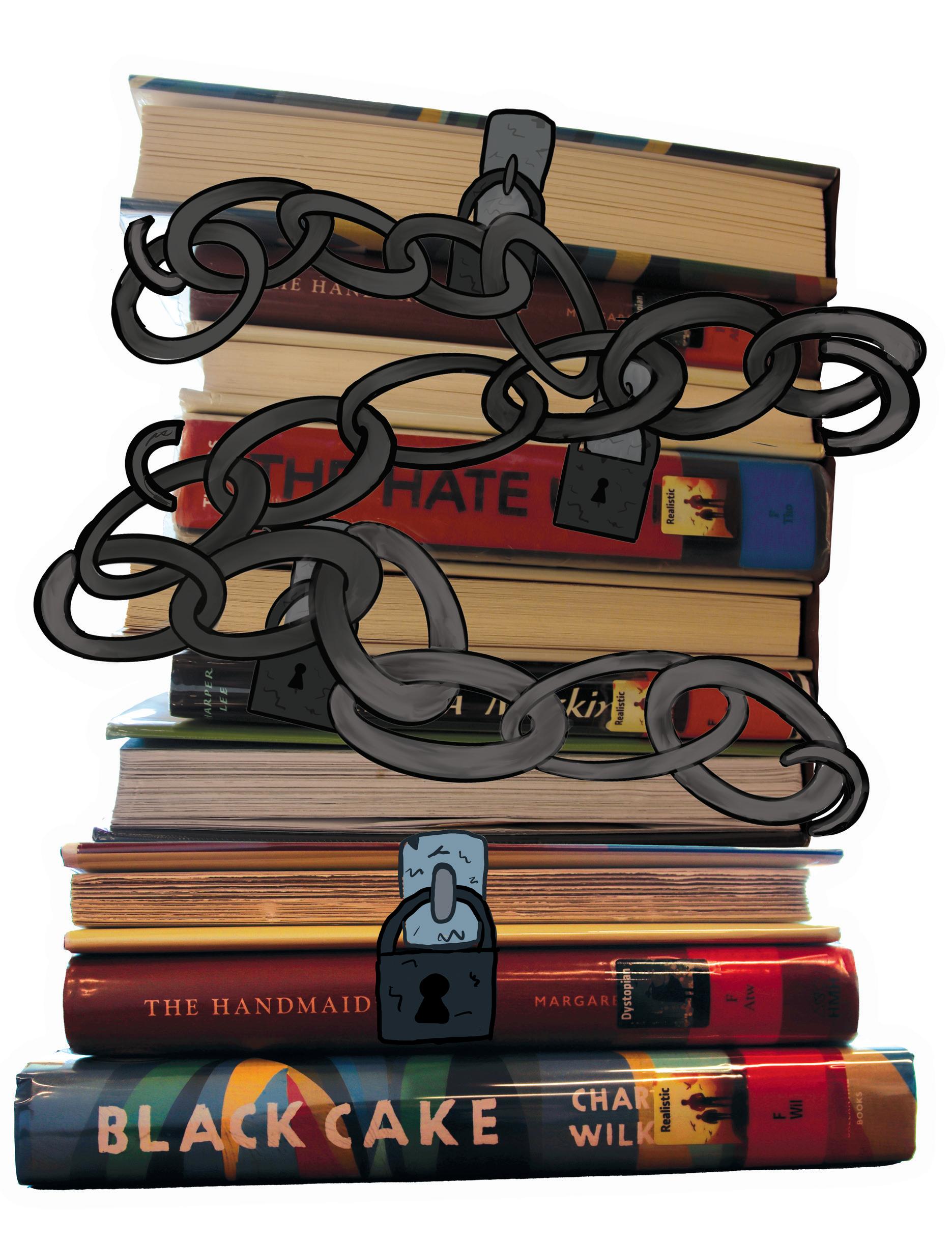

As the current conflict between Russia and Ukraine persists, the Russian government continues to mask the true realities of the war by utilizing propaganda to promote a negative connotation on behalf of Ukraine. Certain words are restricted among Russian citizens, and their use could result in government-issued fines or, at worst, temporary incarceration.
“There are certain words that you are not allowed to use, not only in the media but on social media. If you [bring up] the invasion of Ukraine war, rather than the term that the government wants you to use, which is ‘Special Military Operation,’ you can be fined or go to prison,” Dymova said. “So [the Russian government] is not only shaping what news you can talk about, but also the very language used to talk about things. It is consuming, [and] shaping the way people talk in everyday life and the way they word their messages and social media posts.”
Politically and socially restrictive states abide by a form of global media restrictions. For example, Korean Central Television is a state-run television station, carrying news programs and documentaries commending dictator Kim Jong-il and his father Kim Il-sung for their government work.
“Most western social media is officially banned in Russia, [and] all the social networks, like Instagram, for example, officially you’re not allowed to use them,” Dymova said.
“There has also been an effort of recruiting young people to just spread political propaganda, [by] just making videos on TikTok in support of the war in Ukraine, or in support of the state in general. I think recently there has been a spark of propaganda of Russia to people from abroad, so international students who study in Russia [will] post videos about how amazing it is to live in Russia and they do so in English.”
Aside from general media censorship, the Russian government makes a deliberate effort to indoctrinate children at young ages on the “positive effects” of the Russian-Ukraine conflict and censor the brutal realities of Russia’s war effort.
“Russia recruits some of its soldiers for the war in Ukraine from prison. So they come back, not as criminals, but as war heroes,” Dymova said. “And so those same people are invited to talk to children in public schools. A convicted criminal who also went and killed a bunch of Ukrainian people comes back to talk to children about how great Russia is and how important the war is. This class is one of the biggest ways in how schools and school children are indoctrinated.”
American journalists have historically enjoyed press freedoms with minimal censorship. However, recently, the Washington Post’s opinion editor, David Shipley, quit on Feb. 26 after the owner of the paper, Jeff Bezos, ordered not to write dissenting opinions about President Trump or his administration, according to the New York Times.
So far, college journalism students have not experienced significant censorship. Students like Emily Lickty, journalism student at Northwestern University and ESD alumna ‘22, are grateful for the freedom she has had to publish her views at school.
“I’ll always advocate for journalists being able to do their job without censorship. It’s so important, and it’s always something that we should be striving towards worldwide,” Lichty said. “I could say [censorship] does not affect me, but ultimately it does affect me and most American citizens … Censorship is definitely an issue that everyone should be worried about, and it is something we should encourage people to think about.”

Acolossal-sized cocktail olive stems from the top of a packed double cheeseburger, the focal point of one's eye. The emerald and forest green strokes encapsulate its characteristics and dimensions, appearing to nearly tip off the side of the page.
This theme of exaggeration and unexpected comparisons is the main criterion junior Sophie Slotnik follows when creating her art pieces in her AP 2-D Art and Design class. Like her depiction of the massive olive on top of a petite burger, Slotnik challenges conventional food norms, encouraging viewers to reflect on the balance and indulgence of the food society consumes. She feels that society pushes unrealistic food norms and serving portions, initially inspiring this piece. She does not adhere to a single art style, instead participating in drawing, painting and sculpture, but maintains this theme throughout her portfolio.
“I do all different types of mediums in my art, but I m most passionate about drawing and sketching, Slotnik said. “But beginning [AP 2-D Art and Design] this school year has helped open a field of other materials, such as working with paints like spray paint, growing my creative [scope].
Art has always been a significant part of Slotnik s life, especially because she sees it as more than a hobby. However, her artistic journey took an unexpected turn when she transitioned from attending Greenhill School to ESD in her junior year.
“The shift to ESD and doing art here on a high level definitely put me in an unfamiliar and vulnerable position, Slotnik said. “My [art teacher], Mr. Negroni, and my classmates have made that process a lot less daunting. I feel the art program at our school has not only helped me build my portfolio but [continues to] facilitate my growth as an artist.
Social media has greatly expanded Slotnik s inspiration for her art pieces, while also growing her personal platform. She created an Instagram account in January, @artbyslotnik, where she posts her most recent creations. Through this account, multiple people have reached out to her, commissioning her to create pieces for their homes or offices.
“I think [social media] is a great way for me to share and put my art out there for other people to see and connect with other artists, Slotnik said. “I've recently gained a lot of comments and have been talking to people who are inspired by and enjoying my art through Instagram, setting a base for me to start selling and creating art for other people.
With the expanding goals of her artwork, Slotnik is working to feature her pieces in local coffee shops around the Dallas area. Though she does not officially have her work hung in public places yet, she has been in contact with managers from Sadelle s, a New York-style bakery in Highland Park Village, and the process is in the works.
“I would like to grow and get more people to see [my artwork] so can eventually, hopefully, create a website and sell my work professionally, Slotnik said. “I want to be able to create prints, whether on postcards or anything of that sort, to widen access to my artwork and share it with other people.
Slotnik feels her artistic style has gained maturity while representing her specific interests. Focusing on surreal art and colored pencil renderings is her preference, evident in her portfolio. Furthermore, she has discovered that the best inspiration is from finding things in her environment, whether it be a trash can overflowing or an abnormally fluffy dog, photographing it and depicting it in her own artistic way.
“To anyone aspiring to be an artist but might be unsure of where to start or lacks confidence, I would tell them to put themselves out there and not be afraid to express their work, Slotnik said.
“I ve learned that it helps to gain others' opinions, especially when it's constructive criticism, as it widens the ability for new [perspectives] and suggestions to present your work to its best potential.





The literature we read shapes the way we think, act and understand the world around us. Much of this exploration takes place in our school English classes, where the books and assignments are usually connected to a single, broader theme. For example, the freshman English theme is “home,” while the sophomore theme is “identity.” However, not all narratives resonate with the same power or message as others. We believe that the English curriculum should include both classic works and modern books that connect to more concrete themes and ideas. Some teachers chose to hone in on a specific theme, instead of focusing on a broad theme. Learning about a broad theme, such as “home,” can often feel lengthy and redundant. Focusing on a smaller, more specific theme, such as our middle school holocaust studies, is not only more interesting, but easier for students to digest. We especially enjoy when these themes are connected to our history classes. For example, juniors read classical American literature that connects to topics in their U.S. history classes, allowing them to better understand and explore a topic. And students agree. In a March 10 poll, 56 percent of upper school students said they preferred reading books connected to concrete themes, rather than broader ones. There are many valuable books that would complement the curriculum. Connecting
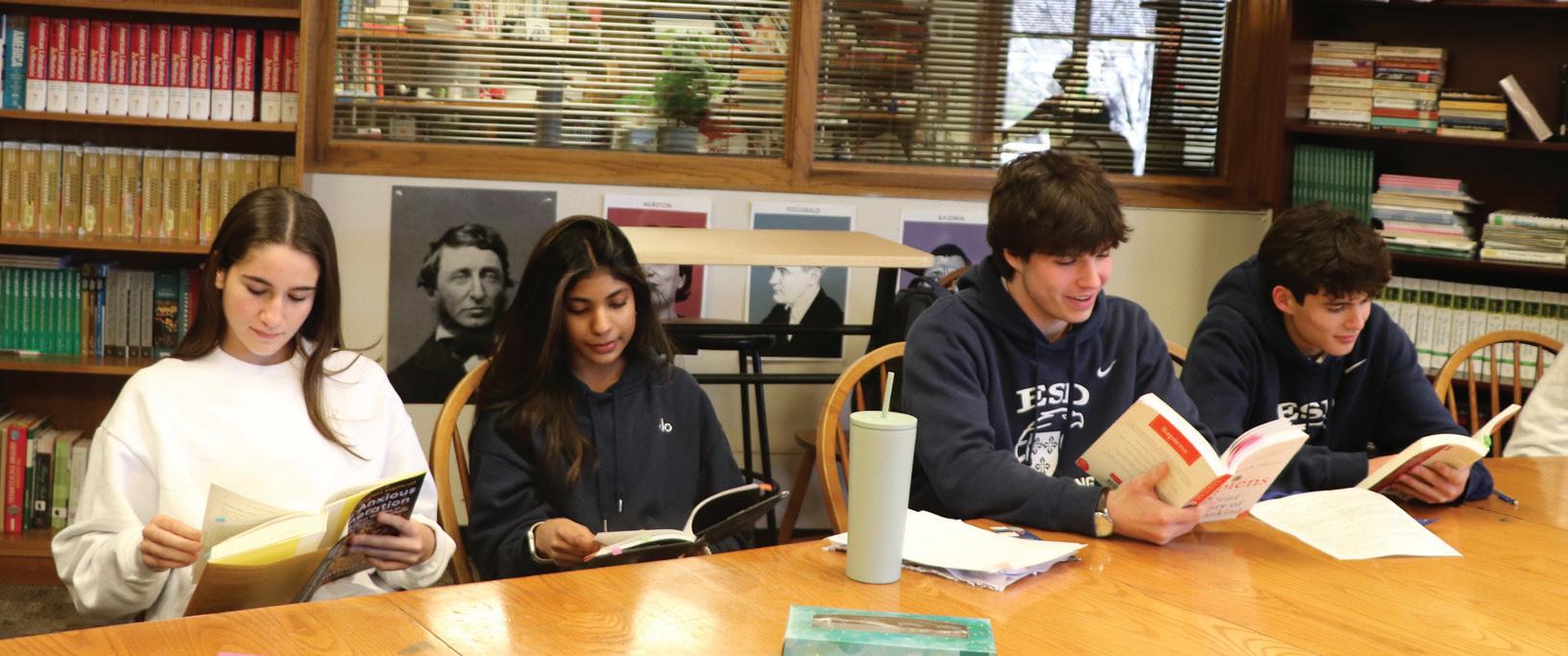
English and history courses, the freshman or sophomores could read “I Am Malala,” by Malala Yousafzai, during their units surrounding the Middle East in either world cultures or world history. Yousafzai, the youngest Nobel Peace Prize winner, wrote this 2013 biography about her experiences as a young girl in Taliban-controlled Pakistan; her story also connects to broader themes like gender equality and education.
Another historical book, “To Kill a Mockingbird,” by Harper Lee, touches upon segregation and prejudice in the United States. This novel is set in segregated Alabama and follows the chronicles of two children as their father, Atticus Finch, defends a black man falsely accused of rape. This book, or excerpts, could be read by juniors or seniors in United States history or government courses, when learning about segregation. Not only is it an interesting,
Juniors in AP Language and Composition read their non-fiction choice books in prepartion for their term paper. "AP Lang has allowed me to spend a lot of time actually reading and learning more about how we can improve our lives through literature," junior Saanvi Maddi said. "It has been a super interestig theme. Currently I am reading "The Spirit of Hope," which has taught me so much about how to apply active changes to my life. loved reading it because it was applicable to my life, think AP Lang is a great class to take if you want to get into reading."
thought-provoking story, but it also reflects a historical theme about race in the United States.
Another classic is “The Great Gatsby,” an iconic 1925 love story by Scott F. Fitzgerald. It follows Jay Gatsby, a mysterious millionaire, and his efforts to reunite with his former lover, Daisy Buchanan. It explores the consequences of wealth, privilege and consumerism in the roaring ‘20s, while also being an American classic that students genuinely enjoy reading. This book should continue to stay in the junior class’ English curriculum.
Beyond historical and classic literature, contemporary books exploring current issues and perspectives should also be taught. “The Hate U Give,” by Angie Thomas, is a 2017 narrative addressing systemic racism and police brutality—topics that are relevant today. Modern works can foster engagement and promote meaningful dis-

Jamie Henderson | Managing editor
Charlotte Traylor | Copy editor
On Feb. 18, I (Charlotte Traylor) received my fourth CV. The Veracross email was all too familiar at this point, especially considering three months remained in the semester. I had served my detention that morning—a novel and frustrating experience— and this frustration was only compounded by yet another disciplinary violation. After banging my head against the wall (metaphorically), I began considering my past CVs, mistakes and failures throughout high school. For this issue, I decided to share a few stories, both mine and Jamie’s, that served as embarrassing and valuable lessons.
Number One: Off the Grid
The day before the newspaper is sent to the press, three administrators read our
stories, flagging our work for controversial stances or incorrect information. My story was flagged, so Mrs. Rosenthal emailed me, asking that I stop by her office to make a few amendments. However, I failed to check my email and continued about my day. That afternoon, I attended track practice, drove to the barn and reentered my car at approximately 8:30 p.m. Finally, I decided to open my phone and was greeted by countless messages. I had multiple emails from Mrs. Rosenthal, the previous editors and senior staff members. The editors messaged me on GroupMe and iMessages. They even contacted my friend Parmida, who texted me on Snapchat and left countless calls, in an attempt to connect me with Mrs. Rosenthal and the editors. Looking back, the
Failure
builds character,
marks normalcy and is essential for growth.
breadth of communication is hilarious. But in the moment, my ignorance placed great stress on the editors. They rewrote my story’s introduction, to avoid controversy, and were significantly delayed in uploading the newspaper to the press. Although all was eventually resolved, this experience reminded me of my responsibility to others.
Number two: AP Troubles
Jamie took her first AP class as a sophomore, with high hopes for the progression of her academic career. In September, the class was assigned their first essay, and much to Jamie’s dismay, she received a D. Perfecting this essay style was imperative to success in the class. To make matters worse, the teacher recommended Jamie drop the class, unconfident in her success. Yet, Jamie was determined to complete her first AP. Jamie worked throughout the semester to improve her grade and her writing style, and eventually, she received a four on the exam. Early failure was not an indication of later failure, and this lesson continued to guide Jamie throughout any difficult high school classes.
Number three: The Chase for SPC Glory
As a junior, I was determined to place on the podium at cross-country SPC. I was confident that success was achievable if I exerted sufficient effort, so upon the gunshot, I sprinted to the front of the group. I held pace with the leaders for the first mile; then, fatigue began developing. My lofty goal lost its sheen when coupled with my physi-
cussions,allowing students to connect literature to real-world issues. By incorporating both classical and contemporary literature, the English curriculum is more balanced and appeals to a diverse range of student interests.
There are also many books, already included in the English curriculum, that are loved by students. “The Outliers,” for example, a 2008 non-fiction book written by Malcolm Gladwell, researches the factors contributing to success. Out of a poll with 53 sophomores, 29 said "The Outliers" was their favorite book they read this year. The book is a fascinating investigation that teaches readers while also keeping them on the edge of their seats.
The English department often incorporates literature that reflects different perspectives and cultures. Some favorite cultural books within the curriculum include “The Joy Luck Club,” by Amy Tan published in 1989, and “Things Fall Apart,” by Chinua Achebe, published in 1958. These works provide insights into different cultures and historical contexts. They allow students to explore experiences different from their own.
Expanding the selection of books ensures that students remain engaged and see themselves reflected in the stories they read. It is important that the English department incorporates books that not only teach the students valuable knowledge, but give them insights to new perspectives and viewpoints.
cal discomfort, and I decided to slow my pace, allowing the leaders to charge forward. I ended up running my slowest cross-country time ever and ended the race with disappointment and embarrassment. My decision to sacrifice my goal was humiliating, as I pride myself on dedication during races. However, that day, I failed and learned a bit more about the price of success.
Number four: The Wardrobe Malfunction
On the opening night of the 2023 fall play, Jamie fastened her skirt, adjusted her collar and laced up her boots. She would be on stage for the majority of the performance, “The Innocents,” with little time to adjust her costume later in the night. The first few scenes ran smoothly until Jamie felt the button unfastening on her skirt. Desperate to remain dressed, Jamie grasped her waistband and continued her monologue. She performed the remaining five minutes with her hand bound behind her back, impatiently awaiting the next scene and an opportunity to fix her costume. At that moment, Jamie was mortified. But looking back, she recognizes the value of this experience. Failure builds character, marks normalcy and is essential for growth. This final lesson applies to each story above, and it is the most important in my mind. As you embark on the remainder of your high school career, please keep this cliché advice in the back of your mind. Confront challenge, fail and forgive yourselves. We’ve both been there.
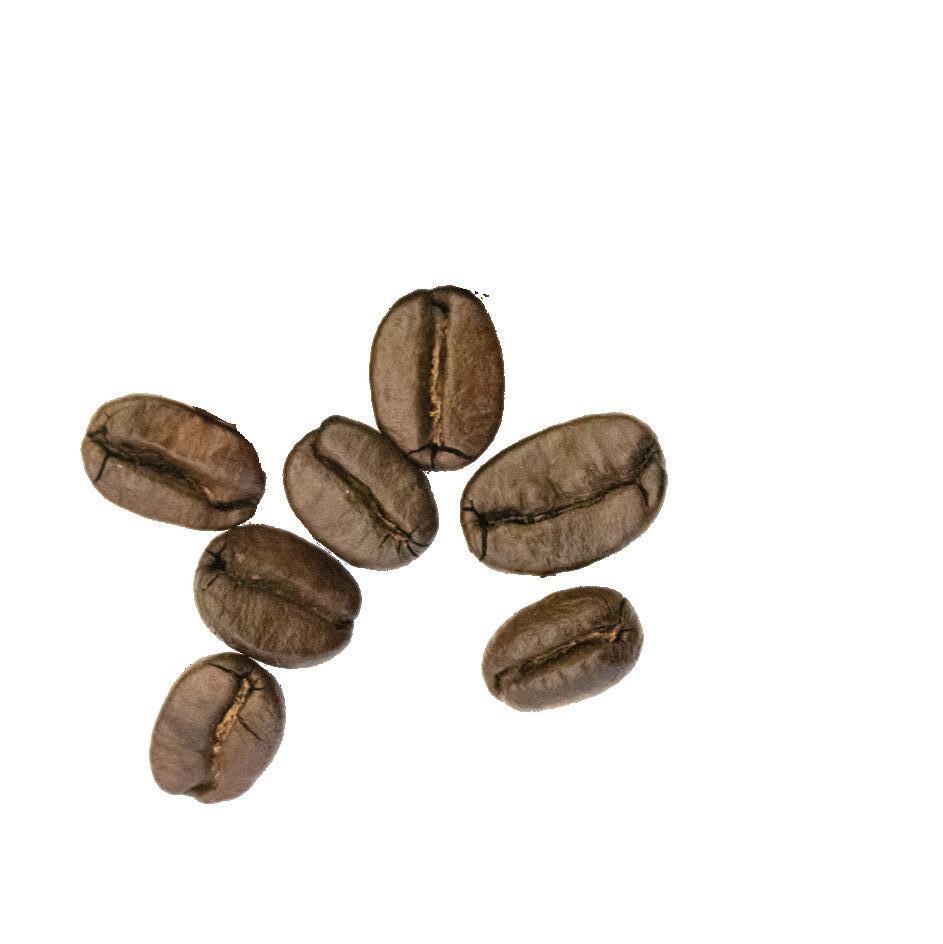

Staff writer Lincoln Clarke set out to determine the ideal iced coffee. Whether you are making a quick stop or staying for brunch, this list


Starbucks is a crowd favorite because of its ubiquitous locations, the fun variety of drinks and the environment inside the cafe. Stepping into any Starbucks, you can feel the chaos behind the counter as the baristas, typically two or three, rush to complete dozens of orders in seconds.


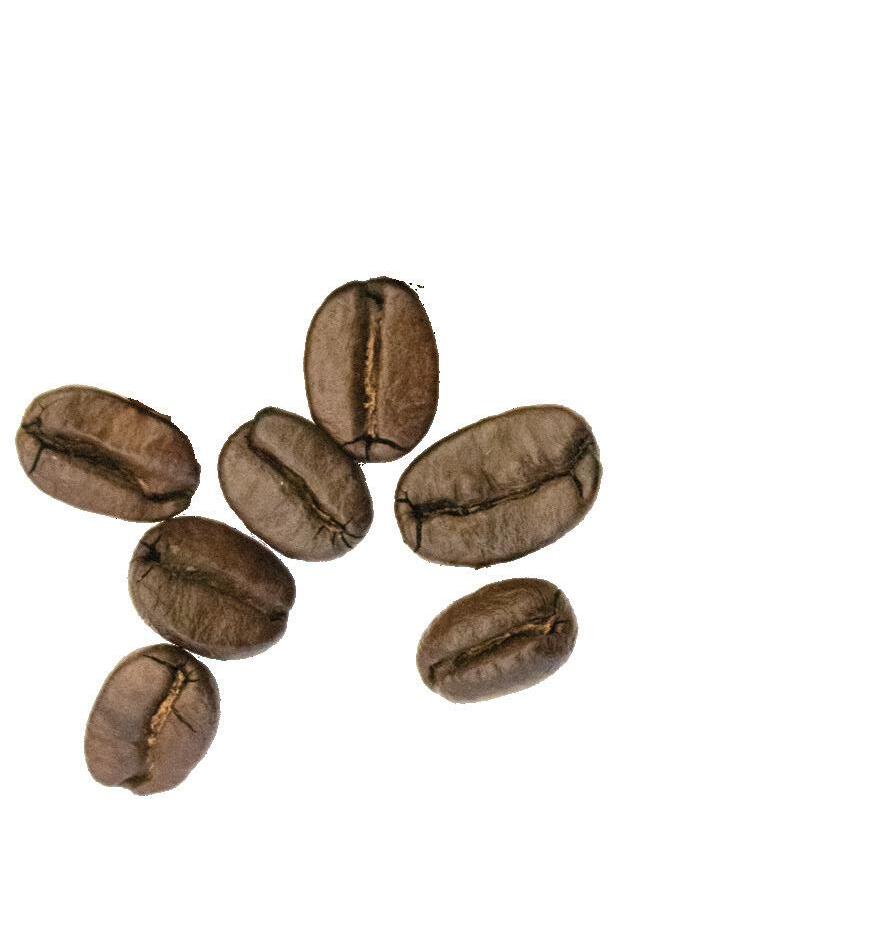
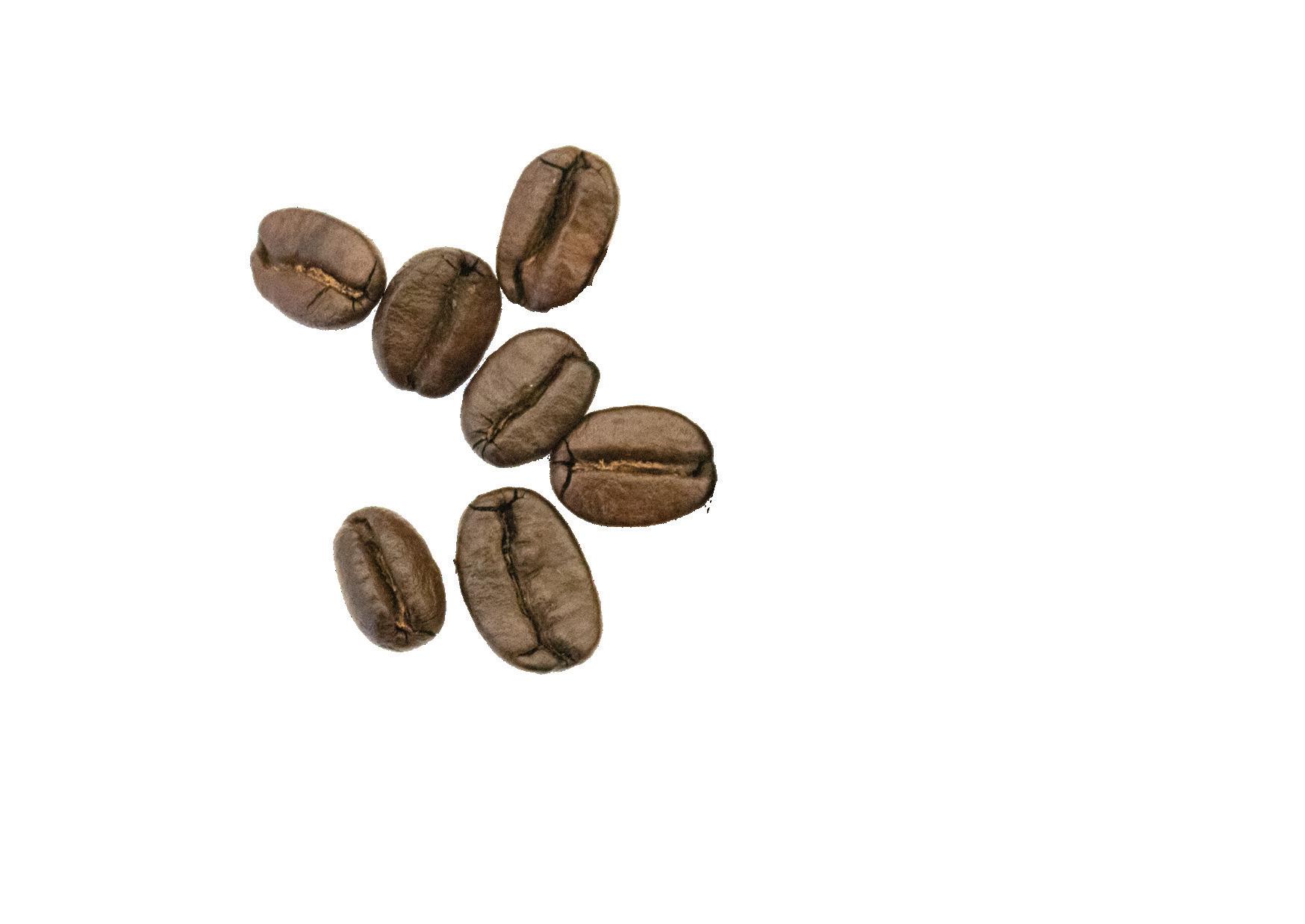



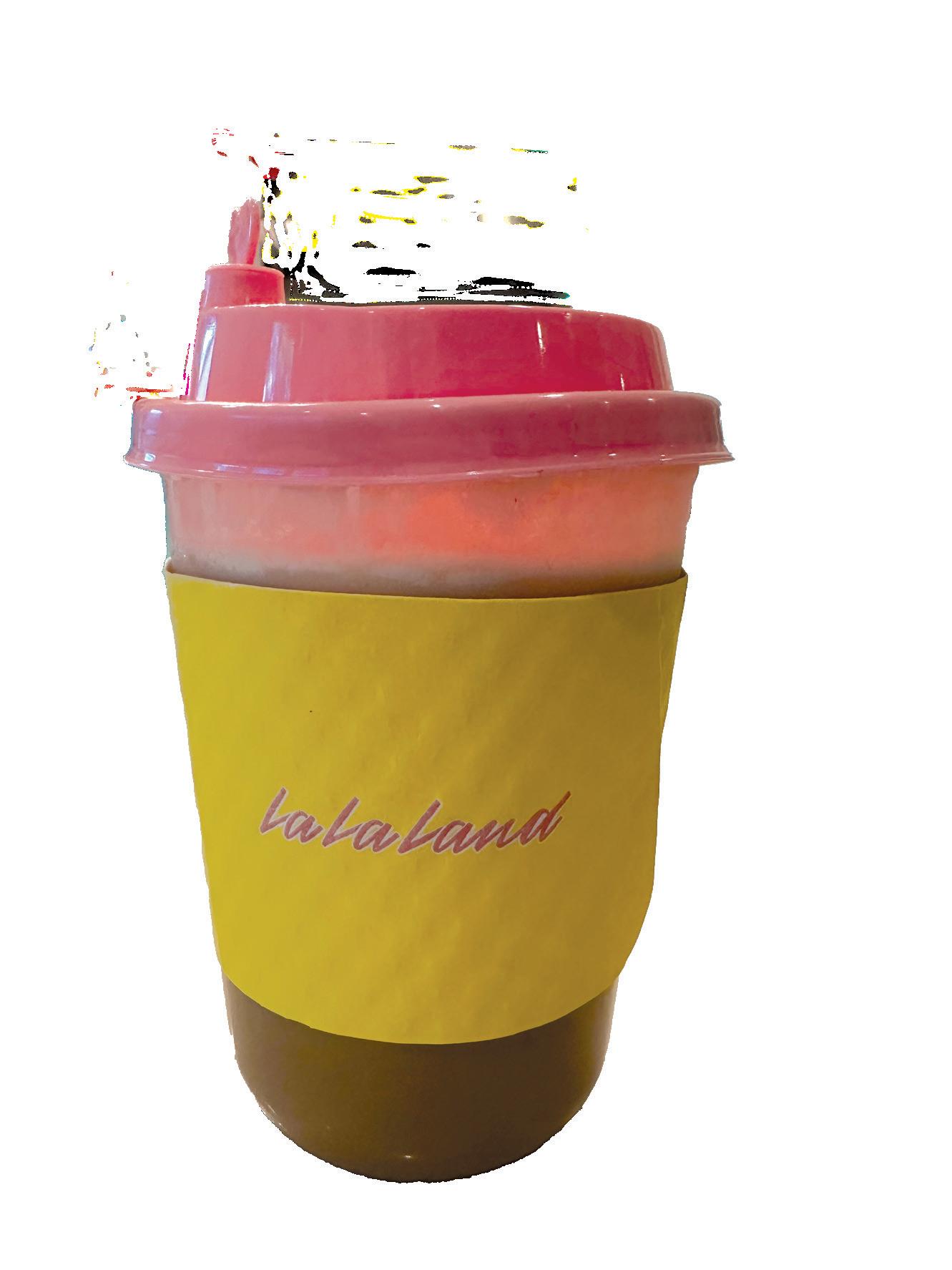
Summer Moon is one of my favorite coffee shops in Dallas because of the cafe’s cozy environment. Opening the door, you immediately hear the bell signaling someone has just arrived and you are greeted with a merchandise stand along with many round tables. It is a great setup for a group. As you walk inside, you find hidden oneperson tables, all occupied by people working or reading. I ordered their Full Winter Moon for $5. The Winter Moon has a velvet blaze espresso, topped with their moon milk, which is a plant-based milk. I took one sip and was engulfed by the sugar; it was not very pleasant. The espresso desperately tried to peek through, but was shot down by the overbearing sugary taste. The sugar was too overpowering for my taste, so I gave it only two stars.
Address: 4343 W Northwest Highway
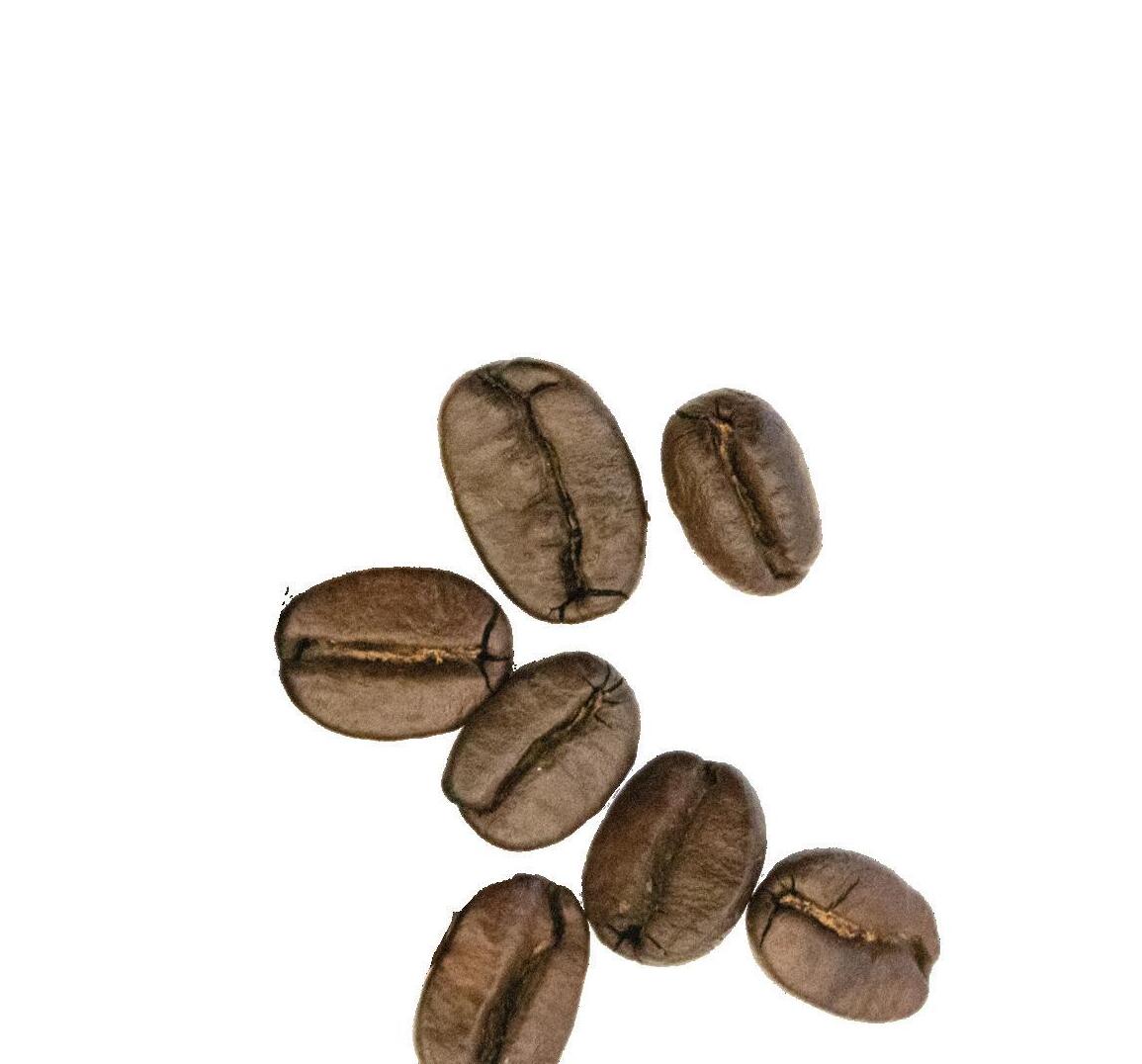
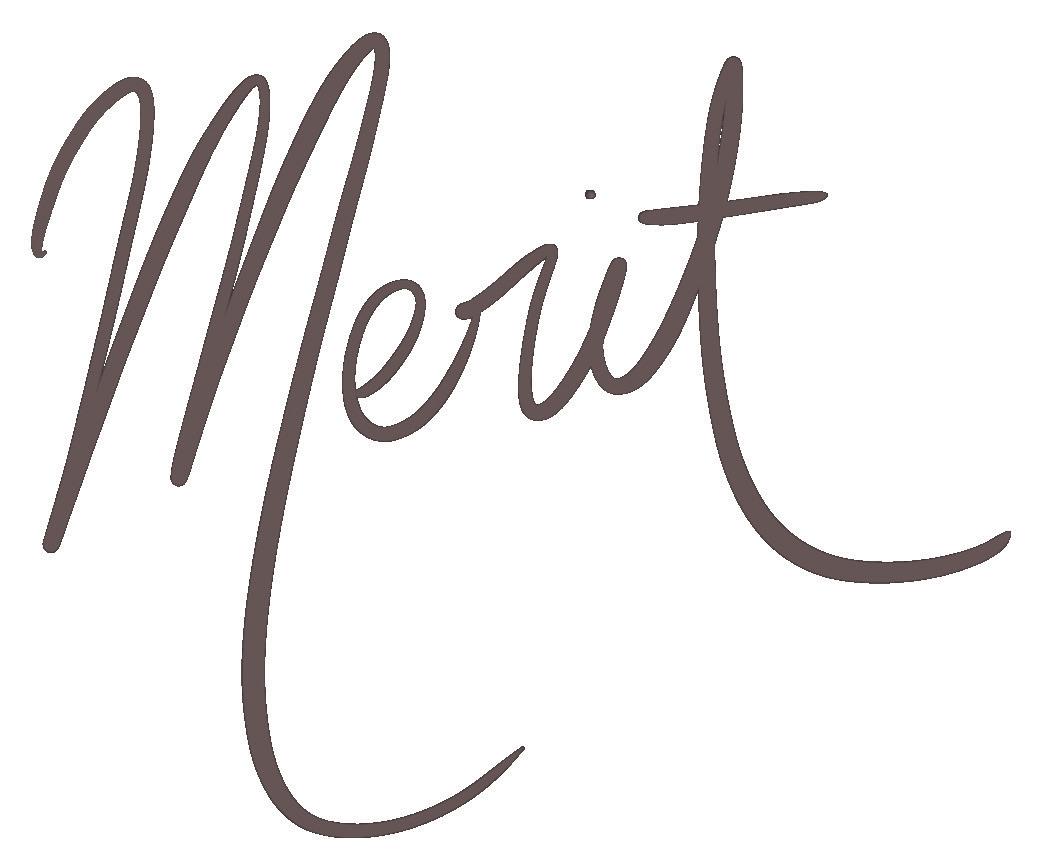

With just a step into Merit, it already felt different than the other cafes I had visited. Merit was dimmed and full of people focused on whatever their computer screen was displaying. The place was serene; it was quiet besides the chatter of my voice ordering the iced latte for $5. The silence was likely because it was early in the morning, or perhaps that is how their cafe operates. The heavy espresso drained the sugar from the drink, causing me to long for a hint of sweetness. Even though the espresso was intense, it was executed beautifully, capturing the taste of an authentic rich espresso. Although the espresso was too much for me, it was wonderfully made, causing this drink to earn three stars.
Address: 4228 Oak Lawn Ave



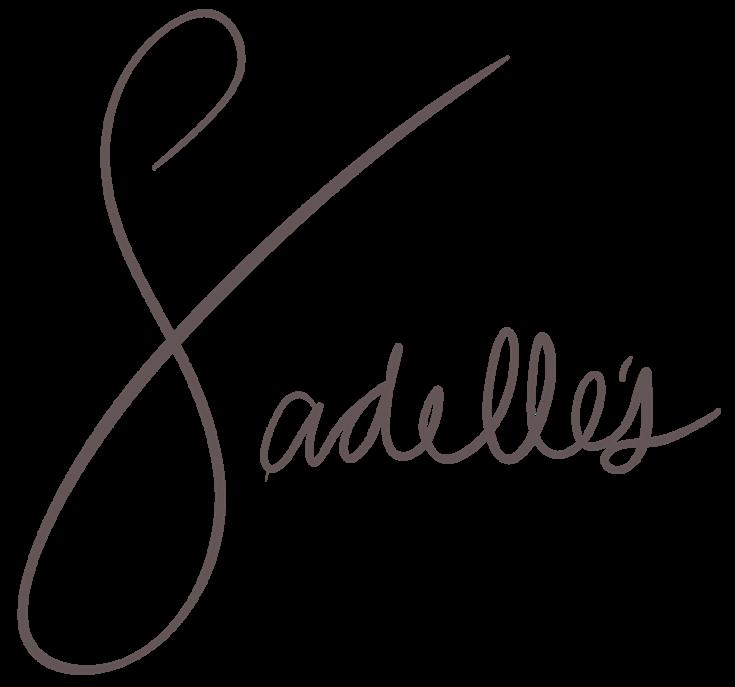

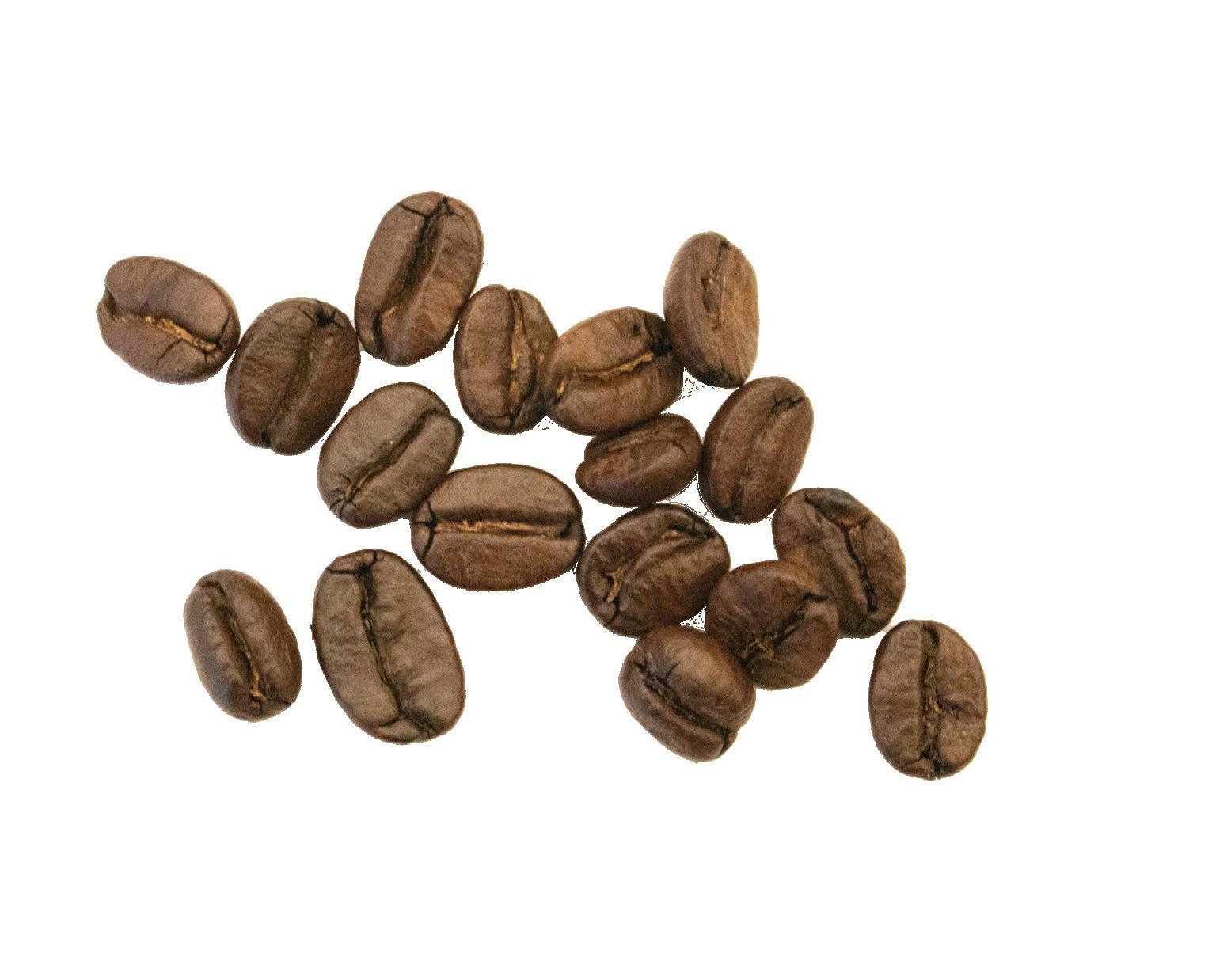

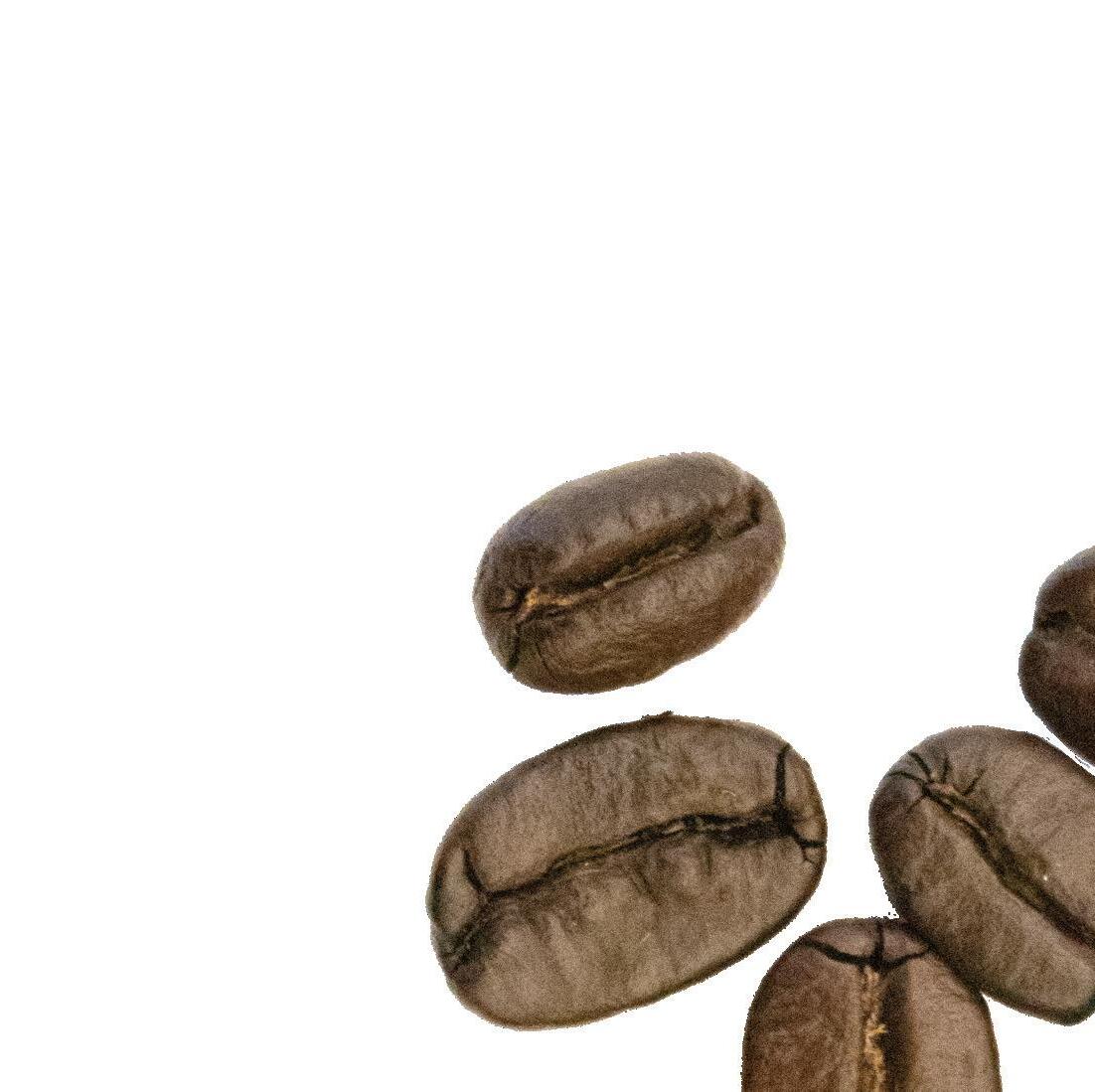
was dark and bland. While the environment in Sadelle s is exemplary for every event, their coffee was sadly not my favorite. I give the drink three stars due to the dominating espresso still being delicious.
Address: 1 Highland Park Village
Students debate the need for the distinction between the art and artist when it comes to understanding art

Josephine Holmes | Staff writer
Piles of books fill libraries, adorning homes with beloved times, and art is suspended in museums, congregations of creativity. But, a look closer reveals a hidden story. Sins can tragically stain art, yet to what extent should they be separated from their creator? In a world of countless compositions and numerous novels, it is imperative to separate the art from the artist.
Whether devouring books or admiring the canvas, art is consumed in many ways. Every time a person thoughtfully consumes art, their personal interpretation is superimposed, which ultimately eclipses an artist’s intent. It is undeniable that a creator’s biases lie within their creation, yet it is the duty of the consumer to critically conceive their own opinions.
Once observed, art transcends the artist and becomes another component of a person’s intimate collection of memories and meanings derived from art.
There is something intrinsic among all people: we have created art to grapple with the passionate tugs on our hearts, and people should not dismiss art due to the ethical failings of its maker, at the risk of neglecting crucial ideas. Commonly criticized authors, such as Ernest Hemingway, JK Rowling and Roald Dahl, contributed significant novels to the literary world, defining generations. Despite their personal beliefs and actions, it is vital to not dismiss their literary merit due to one’s convictions, as it only serves to harm the reader.
Artists who are pioneers in their field or revolutionized genre should be judged separately from their work; in a world that is quick to cancel and condemn, it is important to discern and differentiate the artist’s persona from the creator. Critique the person, not the artist.
Consuming art from copious walks of life and environments allows for a better understanding of the world and people. Controversial and criticized artists, ranging from Pablo Picasso and Oscar Wilde to David Bowie and Michael Jackson, have all been tied to moral and legal shortcomings, yet their work is widely beloved and recognized. Recognizing that an artist’s moral flaws can be separated from their work permits a more diverse and nuanced understanding of art. While an artist may have contentious ideals, they likely still have something in their art that touches people. Instead of wholly dismissing an artist, consider the multi-faceted nature
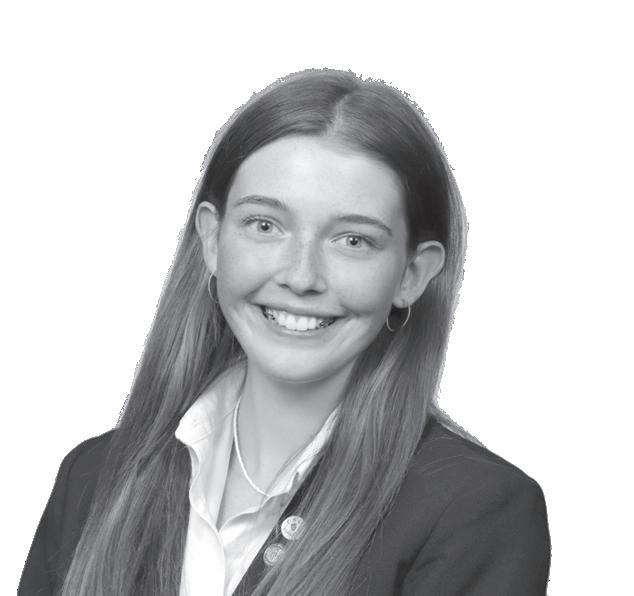
of that person and their work.
One must recognize that the artist is not the sole creator of the masterpiece. A prime example of this is JK Rowling, who wrote and thus brought to life the Harry Potter franchise. She has been widely criticized for her views, particularly her repeated engagement with transphobic media, staining her magical world and legacy. However, she is not the sole contributor to this fictional universe. Eddie Redmayne, the primary actor in the movie series “Fantastic Beasts,” staunchly and publicly denounces Rowling’s stance, but should his work be ignored because Rowling maintained a harmful belief?
Creating this distinction between the maker and their craft allows for the art to surpass its creator and purpose, while also allowing the work to benefit others. Similarly, according to Look to the Stars, a celebrity charity news site, the Harry Potter franchise, specifically the “Fantastic Beasts” series, has used its profits to support charities such as Comic Relief and Lumos. The convoluted relationship between an artist and their work is infamous and has persisted for centuries, but ultimately, once released, an artist’s work is never truly their own anymore.
It is essential to create this distinction to better appreciate the critical ideas and messages in art, because the only interpretation that matters is the one of the consumer. Throughout one’s life, separating the art from the artist is critical to appreciating all that life has to offer. Most importantly, recognize that the art created and the person who made it can be at odds with each other. However, it is the act of redefining art on personal terms that cultivates the lessons and enjoyment commonly derived from art.
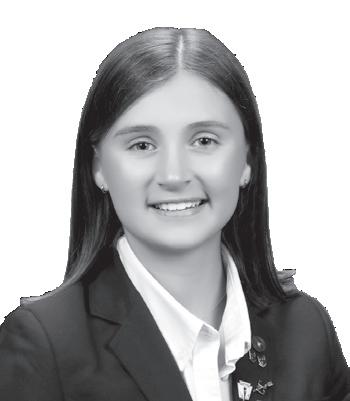
OArtist's personal experiences and inspirations deeply inform their art
Charlotte Traylor Copy editor
n paper, the question of separating art from the artist concerns “cancel culture.” The debate is narrowed to a shallow question: can we appreciate and purchase art from immoral artists? Where in reality, we should be asking if the artist’s experience truly informs the meaning of the work. The answer to the second question should then answer the first.
Although I lack artistic analysis experience, I enjoy reading classic literature. My English teacher, Antonia Moran, reminds our class that analyzing literature yields a personal interpretation of the text; we are not hunting for the “author’s purpose” or thesis, but rather creating our own. Many advocates of separating art and artists cite this viewpoint, arguing that the author cannot control our thoughts. Obviously, authors lack “control,” but their experience and inspirations deeply inform our interpretations. This is especially true for careful analysts.
Each interpretation draws from a reservoir of evidence, allowing readers to skim the surface or dive deep in their search for meaning. One could look at the literal meaning of the art or consider the nuances of the artist’s personal history, a tactic my AP Literature class employed while reading Mary Shelley’s “Frankenstein.” Although art interpretation is an independent exercise, well-informed analyses consider a wealth of detail, including the author’s experience.
The history of this concept further reveals the oversimplification of analysis when separating art and artist. In the 1900s, the New Critics famously placed limits on artistic interpretation, asserting that poetry’s quality is determined by its autonomy from the artist. T.S. Elliot attempted to remove all traces of self from his work, writing, “I have assumed as axiomatic that a creation, a work of art, is autonomous,” in his 1923 “The Function of Criticism.” His claims of impartiality are commendable, yet measuring impartiality is impractical and arguably impossible. Is there a common scale? Are there obvi-
ous clues signaling impartiality? I doubt it.
I was also troubled by the New Critic’s criticism of “personal” art. How can we denounce Mark Twain’s “Huckleberry Finn,” deeply informed by Twain’s experience in the segregated South? Or Charlotte Brontë’s “Jane Eyre,” understood through Brontë’s experience as a woman in 19th-century England?
It is important to note that this “quality” benchmark was introduced with an ulterior motive to sound analysis.
“What it was trying to do, to a degree, was to turn literary analysis into a science,” Clare Hayes-Brady, a lecturer in American literature at University College Dublin, said in an interview with Vox Magazine. “Literary criticism as a legitimate academic discipline emerged just a little before [New Criticism], and part of the reason you’d want to make it a science is to make it seen as a legitimate field of study.”
This scientific approach to art stemmed from artists’ yearning for societal recognition rather than an inherent flaw of artistic interpretation. In our modern world, artistic ventures are acknowledged and funded: dubbing art a “science” is no longer necessary. Preserving art’s humanity is a greater concern.
This concern weighed heavily during the New Historics’ artistic movement. The New Historics believed “art is a function of human emotion, so great artists shouldn’t be judged on ability to create art impartially,” according to a 2019 Vox article. Personal experience creates passion, and passion drives the artistic process. Inhibiting this creative process would remove the appeal of creation, worsening art’s quality.
Considering these modern and historical analysis techniques, the bond between art and artist is irrefutable. In most cases, the connection is cause for celebration, contributing uplifting dimension and scope to the art. In other cases, the opposite is true. Regardless, the connection cannot be ignored for the sake of practicality.
Now, to answer my initial question: can we appreciate and purchase art from morally ambiguous artists? My answer is yes, but with one caveat. One must consider how the artist’s personal experiences inform their work, carefully recognizing and internally refuting immoral concepts. Shallow interpretation is convenient but impermissible as we navigate the rocky landscape of art, emotion and humanity.
SOURCE: March 10 poll of
Twenty-one-year-old Myra West sits alone on a park bench in Minneapolis and begins a recording on her phone. She feels desperate, reaching out to anyone who will listen. In 14 minutes, she details the story of her life: from being homeschooled, to being afraid of going to college, to losing connections with people and eventually feeling lost in society. You can see the sadness in her eyes and hear the hurt evident in her voice.
“I’m 21 years old, and I have no friends,” West recorded. “I was maybe supposed to say something uplifting at the end but there really isn’t [anything]. I can survive… but I just want things to change. Nobody is in my life. I am completely alone in the world. I have no support, and I’m just kind of reaching out to the world for some kind of support.”
West’s video, posted five years ago, has garnered almost 7 million views on YouTube. The video is spur of the moment and shows a person at the end of her rope, but the worst part is that there are thousands of others just like it, all titled “I have no friends.” These kinds of videos became viral, signaling a cry for help into the abyss of online people searching for a virtual solution to a real-world problem.
West and others’ videos speak to a larger societal trend of loneliness in those born from 1997 to 2012, more commonly known as Generation Z. A 2021 Harvard Graduate School of Education survey found that 61 percent of young people ages 18-to-25
reported experiencing profound loneliness compared to only 36 percent among other age groups. The feeling is sweeping among this age group; researchers found no significant differences in rates of loneliness based on race or ethnicity, gender, level of education, income or religion. To understand the experience of an entire generation, we must understand how the issue has been building for decades and what exacerbated it for Gen Z. During the 1960s and 1970s, drastic social changes were moving citizen’s minds from local concerns to national ones, thanks to the Civil Rights Movement, the Women’s Liberation Movement and the Gay Rights Movement. These advances rose in tandem with the 1960s “counterculture,” in which young people rejected mainstream norms and values. Journalist Tom Wolfe famously declared the 1970s as the “Me Decade,” citing the economic boom of postwar America as giving the average American a new sense of individualism and moving away from communal values.
Thus, Generation X and millennials grew up in an America that values individualism, which is the habit or principle of being indepen- dent and self-reliant. In the 1980s, the most prominent individualism movement was tied to the popularity of Republican President Ronald Reagan, which emphasized “yuppie culture,” where urban professionals prioritized personal wealth and self-reliance over social concerns.
Many of these social
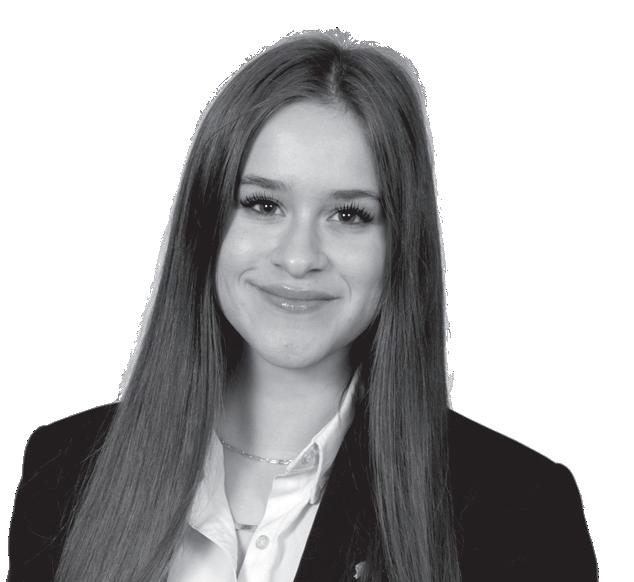
We must come together as a generation to combat loneliness by valuing our time together, populating shared spaces
movements of the past few decades valuing the individual were empowering, but Gen Z is distinctly different due to one thing: technology. We grew up in a hyper-individualistic world where we did not see the development of the cell phone as a groundbreaking innovation but as a mere birthday gift around our teenage years. The internet and social media have always been available to us, so much so that Gen Z research firm dcdx.co found that in 2024, Gen Z will spend 112 complete days on their phones, with an average screen time of seven hours and 22 minutes per day.
Former U.S. Surgeon General Dr. Vivek Murthy declared a health advisory warning in 2023 due to the loneliness epidemic, warning that the lack of connection can increase the risk of premature death to levels comparable to smoking 15 cigarettes a day. Murthy cited the rise of social media for young people as one of the reasons for chronic loneliness.
“We also know that for some kids, being online has been a way to find community at a time when many of them have not been able to,” Murthy said on “All Things Considered,” NPR’s radio program. “What we need to protect against, though, are the elements of technology, and social media in particular, that seek to maximize the amount of time that our children are spending online at the expense of their in-person interactions.”
Simply living through a transitional period from the teenage years into adulthood can be a lonely experience, but social media and other is-

In today's popular culture, everybody seems to have a podcast. Whether it is a celebrity, influencer or even a friend, this form of entertainment has taken over Spotify and Apple Music headlines with over 3.5 million podcasts currently out there. According to Statista, more than 40 percent of the U.S. population listened to a podcast in the past month, almost three times the share recorded a decade earlier. The recent uproar surrounding podcasts highlights their growing influence and widespread appeal. Podcasts offer an array of genres, ranging from comedy to true crime—suiting everyone’s interests. Whether you are looking for lifestyle content, self-care tips or news updates, we promise the podcast market will deliver.
According to Spotify’s top podcast charts, the leading podcasts currently are “The MeidasTouch Podcast,” “The Mel Robbins Podcast” and “The Joe Rogan Experience.” Although each of these channels is a different genre, their audiences are diverse, creating well-renowned fan bases. Due to their accessibility and digestible content, they
sues such as the cost of living, college tuition prices, climate change and the advancement of AI are adding to a bleak outlook on the future for Gen Z. I want to offer a source of hope, though, to combat this issue. There are many others out there like me, who see a video titled “I have no friends” and simply want to help. And the truth is that we can. In 2018 the United Kingdom appointed a Minister of Loneliness to strategically reduce the stigma surrounding loneliness and depression and ascertain real solutions to the problem. The Netherlands has an abundance of “third places,” which are spaces outside of the home or workplace where you can socialize without the pressure of spending money. Amsterdam has undergone an effort to create more public spaces in the city, along with Barcelona, Spain, where public plazas are extremely pop- ular for citizens to socialize in. Researchers recommend finding local groups, such as a walking club or a book club, as well as reducing your time on social media to feel less lonely.
Wherever you are, whoever is reading this, I want you to know that you are not alone. If you are ever feeling like the world is too big and the future too uncertain, please reach out for help. 988lifeline.org is a website you can use if you or someone you know is struggling. In a world that often feels disconnected, each concerted effort to create a bond with another person can bring us closer to finding ourselves again.
are great to play in the background while multitasking. We often find ourselves playing a podcast while cleaning our rooms or driving, because listening to advice, stories or opinions on popular topics makes these tasks more enjoyable. Podcasts also help foster a more personal relationship with your favorite influencer. Because most influencers have a podcast or appear as guests on one, listening to them almost feels like a real conversation. You can hear about their personal lives to a greater extent—something you cannot fully grasp from the surface or online. By facilitating an instant connection, podcasts grow relatability to those you look up to the most. Some may argue that music has the same effect, but podcasts are typically listened to once and for a longer duration, whereas songs are shorter and often played on repeat. However, we feel podcasts are best enjoyed alone, as you are able to process the information and advice better; in a larger social setting, these messages are less intimate. In light of the podcast uproar, some controversy has sprouted from our favorite podcast creators. Alex Cooper, founder of the “Unwell” network—exclusive to SiriusXM— has recruited well-known
Next time you have a dreaded chore or a lengthy car ride ahead, grab your phone and put on a podcast. We're certain you'll find one that suits your interests, provides an enjoyable experience and maybe even teaches you something new.
content creators to join this podcast community over the past year. With the growth of this company, many original members have expressed desires to split from “Unwell” and lead their own podcasts.
“Hot Mess with Alix Earle[’s]” host, Alix Earle, is reportedly trying to break her “Unwell” contract, sparking questions about her relationship with Cooper. There are many theories among fans, especially those wanting the Unwell network to remain intact.
Oftentimes, podcasts attract the most attention when they feature special guests or celebrities. Recently, on social media influencer Jake Shane’s podcast, “Therapuss,” he sat down with pop singer Tate McRae to discuss her new album, “So Close to What,” her upcoming tour, and the evolution of their friendship. Gaining over 591,000 views, this episode is one of Shane’s most-watched. Podcasts do not merely target young audiences interested in social media, they cater to all ages. Political discussions play a huge role in podcast media, with some of our country’s most prominent politicians featured on these channels. For example, in 2024, President Donald Trump was a guest on well-known podcasts such as “This Past Weekend with
Theo Von,” the “Lex Fridman Podcast” and the “PBD Podcast.” In light of the election year, we saw an increase in former Vice President Kamala Harris and Trump engaging in podcast interviews during their campaigns. Each of these interviews received millions of views, creating an effective strategy to advertise their campaigns and gain voter attention, according to The Current.
Some podcast creators go on tour, performing their shows in front of live audiences. Much like a press tour, these events allow hosts to build awareness, trust, revenue and support for their brand while allowing fans to see their favorite podcasters in person. Large-scale ticket-selling platforms like SeatGeek and StubHub have even added an event category for podcast tickets, showing the increasing demand to witness these shows. With podcasts dominating media and industries globally, their influence shows no signs of slowing down. Next time you have a dreaded chore or a lengthy car ride ahead, grab your phone and put on a podcast. We’re certain you’ll find one that suits your interests, provides an enjoyable experience and maybe even teaches you something new.

“Hi wonderful people!” I say with a smile on my face and a skip in my step as I enter the best place in the world: the journalism room, alongside my best friend, Sophia. Over the course of the year, the members of the staff came to expect my greeting, questioning me if I did not say it. Next, Mrs. Rosenthal will peek over her computer with a smile on her face, waving and saying, “Hi ladies,” as we make our way to our seats in the center of the room. Then, my favorite part ensues: for the next hour of class time, Sophia and I will lap the room at least three times, checking on people, answering questions and enjoying our collaborative community.
There are not too many journalism classes with this environment. When this issue is published, we will be five-sixths of the way done for the year, and I acutely feel how our time is coming to a close. In my last letter from the editors, I remarked on how quickly the time was passing and that I only had one more issue to impart any fragments of (albeit moderate) senior wisdom I have gained throughout high school. This letter is my chance to do that.
Love what you love, and

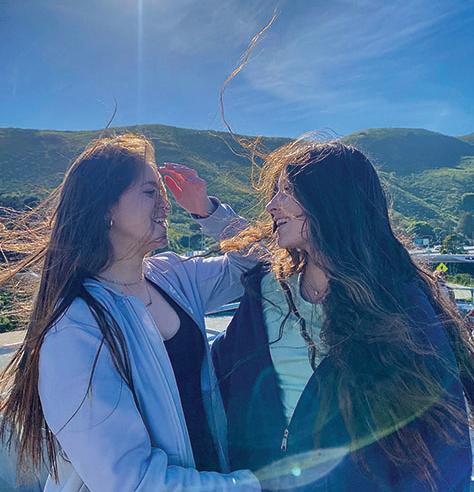
explore it. For me, this meant exploring my love for writing and reading in Journalism 1, which grew into one of the best decisions of my life. We are too often made to feel that we should have everything figured out in high school: college, career, purpose in life. But this should be an exploratory time in our lives, not a declaratory one. The mission statement of this school is “igniting lives of purpose through the development of an educated conscience.” All you should be looking for in high school is that “ignition,” or the spark that ignites a life of purpose down the line. Find joy in exploring your interests through different clubs, classes and sports, and it may just grow into something greater than you ever imagined.
Comparison truly is the thief of joy. As a freshman, this may look like feeling insecure about all of the fast-forming “friend groups” and why it does not seem to gel as easily for you. As a sophomore, this means leaving an LEQ for AP world history and comparing your essay to your classmates, who are all too excited to share their stellar performance. As a junior, you wonder if you are taking enough AP class-


Co-editor-in-chief
Lauren Shushi discusses the end of her time as editor-in-chief, the lessons she has learned and the resounding feeling of gratitude she feels for the people around her and the school she attends.
Gratitude shifts your perspective - it takes you out of yourself to recognize the amazing world around. Take time to appreciate the good things in life, and thank your family, friends and teachers.
es, or how your ACT or SAT scores match up to others. As a senior, you might feel lost when someone commits to a college on the first few days of school, when you have failed to even nail down an application list. The truth is that all of the comparisons are worthless, because everyone feels the same way. I recognize that it is impossible not to compare ourselves to others in our competitive world, but I implore you: try, try, try. Learn to be where your feet are and be happy with yourself, wherever you are in life, because you are missing out on so much joy when you put yourself down.
Finally, practice gratitude. There is so much to be thankful for, from attending this school with its incredible teachers, staff and administrators, to the opportunities readily available to us. It is easy to get caught up in the hustle of everyday life as a busy high school student. But when I look back on my time here, I will not remember the late nights spent doing assignments or the grueling exams seasons; rather, I will remember the non stop laughter in the journalism room, the impactful chapel talks I have heard, the teachers who have helped

Let your voice be the loudest in your own story. Being a high school student is arguably one of the most mentally–and don’t forget about physically–demanding experiences we will face during our lives. The pressure to excel while abiding by societal norms is exceedingly overwhelming.
As I thought about what to write in this letter, an opportunity I would only ever be given once, reading over many previous letters and student works, I stressed, worrying I would be cliché, too quirky or overly generic. But then I asked myself: Why care? Why should I trade writing about something I genuinely care about for approval? It was ironic, truly, as I came to see that I was fearing what other people would think even as I was going to write something
about not caring what others think.
It's human nature. The desire to seek approval. The desire to be popular. The desire to conform to social norms. As we all take for granted what a privilege it is to be able to go to such an amazing school, live in such a great place and build relationships with teachers, classmates and strangers, we have to reflect on what makes us who we are. When I first came to ESD in seventh grade, I struggled to make friends throughout the entirety of middle school. I constantly tried to change my personality and others' perceptions of me to who I thought everyone wanted to see. But then, I entered high school with a new perspective. I wasn’t going to care what others thought or do what was expected. This changed my life at ESD. As I entered high school, I made more friends because I didn’t put myself in a position where I would be upset if I were
To really be a part of the ESD community, it is crucial to accept your personality and realize that if people are really your friends, they will accept you in the most original, peculiar and casual version of yourself.
judged for doing something that wasn’t considered normal.
To really be a part of the ESD community, it is crucial to accept your personality and realize that if people are really your friends, they will accept you in the most original, peculiar and casual version of yourself. The strain of academic excellence, student leadership positions, clubs, sports, extracurriculars, friends and familial relationships is far too great not to try to be the most honest and carefree version of you. The even more stressful aspect of trying to be your most authentic self is realizing that you change as time goes on, and it's easy to lose sight of who you are in the face of academic stress and adversity. As the numbers of tests increase and exams near, everyone tries to be that star student who has to get that 100 no matter what, including me, but accepting that being a student in an academically
guide me and the ability to spend every day with my best friends. Gratitude shifts your perspective — it takes you outside of yourself to recognize the amazing world around you. Take time to appreciate the good things in life, and thank your family, friends and teachers.
To Mrs. Rosenthal: Your guidance has shaped not only my writing but the way I see the world — how I ask questions, how I tell stories and how I lead with curiosity and integrity. You are constantly kind, thoughtful and hardworking. Every time Sophia and I leave a long work night with you, we walk to the parking lot and talk about how grateful we are to have you as an advisor. The time we have spent in your class has been one of the most meaningful parts of my high school experience and my life, so I thank you endlessly. To the next generation of student journalists, to the juniors we have grown with and the sophomores who keep us on our toes: Sophia and I have loved getting to know you and sharing in creating the newspaper together. Keep being your curious, effortlessly personable and funny selves. Keep asking questions. And please meet your deadlines.
rigorous school is going to be challenging has allowed me to become a better version of myself. Something that changed my perspective on my personality and how I strive to do well in school was when someone really close to me told me that “everyone finds their place.” I know it may seem like an irrelevant blanket statement, but if you believe in this and keep believing in yourself, you can become more confident, preventing yourself from being affected by the opinions of those around you. External opinions often carry weight as it is natural to want approval from others in your inner circle, but realizing that you alone are enough will make those who genuinely like you for you gravitate towards you. Becoming confident in being unapologetic has made me realize that meaningful relationships are based on being yourself, not pretending to be who others want you to be.
Wrestling, swim and basketball all achieved SPC or state championships this winter sports season
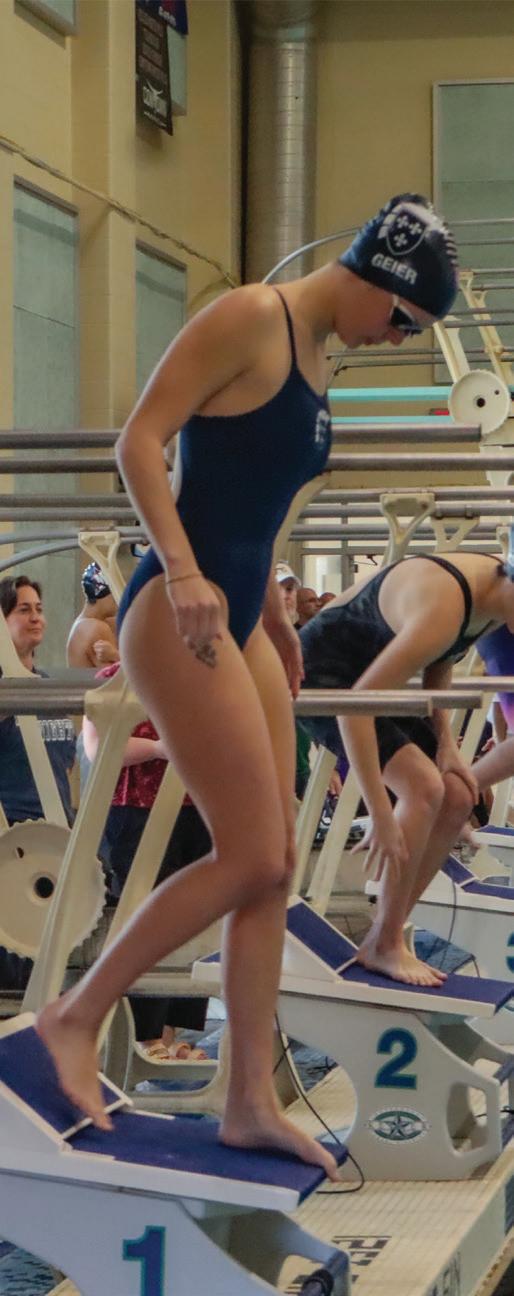
PREPARING TO DIVE

From left: senior jesi Geier prepares to dive in and swim in the SPC championship. She competed against many girls, eventually winning all SPC champion. "I finished second place in 3-A for both my events. And so got medals for both of those." Geier said. Photo by
NUMBER ONE CHAMPS The girl's varsity basketball team holds up number ones to honor their newly won SPC championship. This was the first girl's team championship since 2017 and the only girl's basketball championship. "Working through all of our challenges as a team was important. and so was winning some good games, and just knowing that we're capable kind of allowed us to set our sights on like a championship."
TWO-TIME STATE CHAMP Senior Cindy Lin flexes for the camera with her medal after being state champion
the
editor
As the clock counted down, girls on the bench gripped each other's hands in anticipation, and freshman Britt Reynolds ran out the time to secure the lasting score of 39-33. The whole team erupted from the bench and ran to grab their well-deserved trophy and individual medals.
The ESD community reached many new accomplishments in the athletics department this winter season.
The girls team won the first girl’s SPC championship since 2017, the only girls basketball SPC championship in ESD history. Also, senior Cindy Lin became the first-ever wrestler to be a two-time all-state champion, and senior Jesi Geier was the first two-time all-SPC swimmer.
“We were in the lead for most of the game. I think there was only one possession that we were down and we were up by one at halftime,” junior captain of the varsity basketball team Tatum Reynolds said. “So that was a little bit nerve-wracking because if they start making their shots the game could turn really quickly.”
The girls basketball team undertook a new leadership with coach Devin Darnell, who introduced new plays. Cross Country & Track Program Director and assistant coach Evan Hadrick also helped lead the team to success. Athletic Director Thad Lepico, constantly looking to improve the program, was satisfied with the team’s success.
“I saw such great growth, from when coach Darnell got hired over the summer in those first few practices in August and September, to where they finished in February. That growth was incredible,” Lepico said. “And I hope what this
school
in
winter will do for folks is to change their mindset and believe a little in themselves a bit more and get some more confidence so that we can be more competitive and not just be a lacrosse school.”
The girls team trained over the season to make a mark and put their team at the forefront of everyone’s minds, through morning lifts, hours of practice, new drills and plays.
“I think working through all of our challenges, as a team, before our first game, which was our worst, we didn't even have a practice as a full team, so just kind of coming from that, and knowing that winning some good games,” Tatum Reynolds said. “Just knowing that we're capable of a lot allowed us to set our sights on a championship.”
The Eagles were in the lead for most of the game, but only up by one at halftime, causing stress on the team to stay strong. However, the girls persisted, until they secured the win.
“It was a nerve-wracking game coming back from halftime,” Tatum Reynolds said. “Then I hit a couple of threes, and then we had some good rebounds and turnovers. We just kind of messed with them, and it helped in our favor.”
Away from the court and in the swimming pool, Geier competed in two rounds of competition; the prelims and the finals. The prelims consisted of both 3A and 4A level competitors, and one had to finish in the top eight in both events to move on to the finals. Geier finished in the top eight and moved on to finals, where she competed against the other top eight and finished second in both her events. After finishing the 50 and 100 meter events, she became a two-time all-SPC champion and earned a medal for her work.
And I hope what this winter will do for folks is to change their mindset and believe a little in themselves a bit more and get some more confidence so that we can be more competitive and not just a lacrosse school.
Thad Lepico Athletic Director
and
“A lot of the girls that swim have things called tech suits that are $600-800 swimsuits that are high tech and they make you swim faster and they practice year-round,” Geier said. “I was the only one out of all the eight on the second day that didn't have one of those, and I only practiced three days a week for a handful of weeks. So, it makes it a better win because of that, because I was at a disadvantage, and I still beat out all the other people that were at an advantage.”
Lin accomplished a big win in ESD history when she became the first wrestler (boy or girl) to ever be a two-time allstate champion. She secured this title by working hard even when she was not feeling her best.
“I had bronchitis. I had trouble breathing, and I wasn't working out for a whole week, two weeks before, because I was sick,” Lin said. “So, that was not as great as it could have been, but you know it was definitely an interesting experience, and I got through it.”
The winter season ended strongly for the ESD athletic department, with new defeats and titles for the teams and individuals. While there is always room for improvement, such as conditioning and community credit activities, the department will continue to improve in any way possible.
“I hope there's some excitement now that the kids in the middle school can see that they want to be part of that team,” Lepico said. “One of the things I've noticed in my two years here at ESD, a lot of the students want to be on winning teams, and it's exciting to be on winning teams. So I hope maybe this will light the fire a little bit and get some more people excited.”
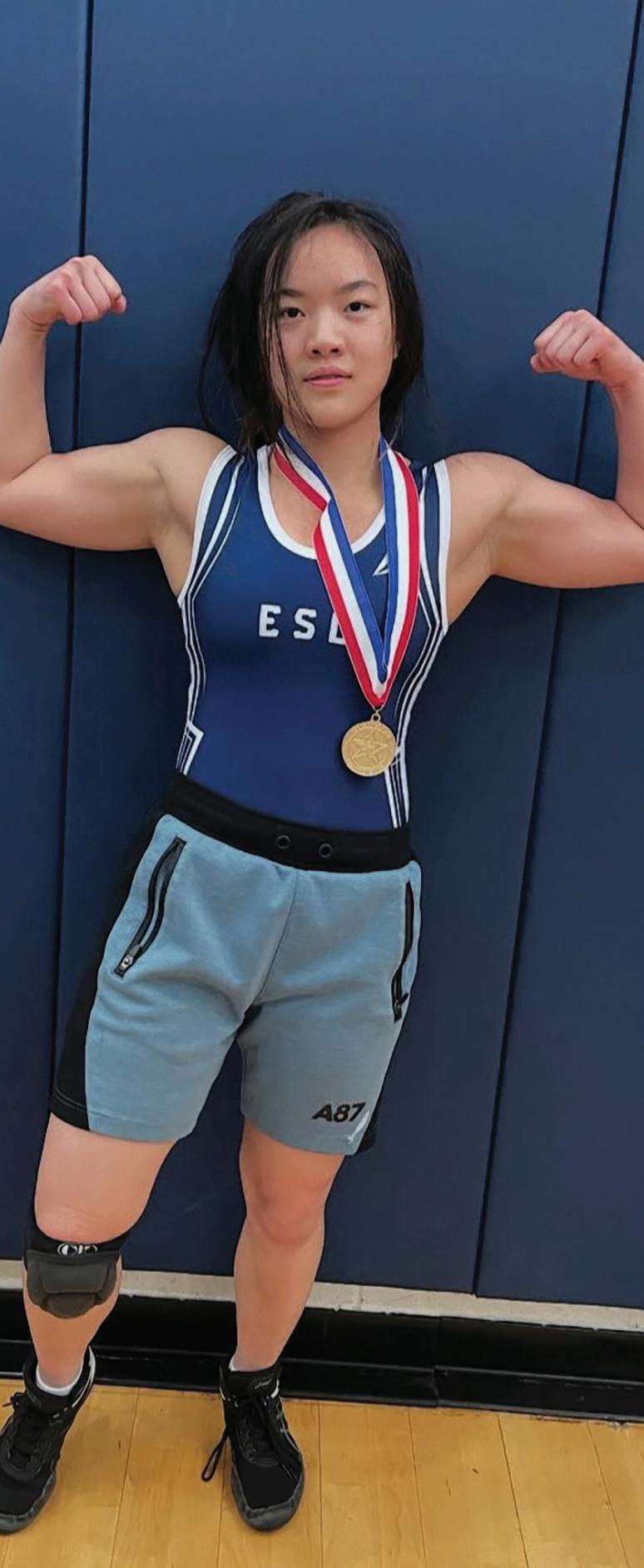
Every issue, the Eagle Edition highlights two athletes who stand out on the field for their respective sports.
| Staff member

How long have you been participating in crew, and what motivates you to keep rowing?
I've been rowing since the fall of my freshman year, so four years. What keeps me motivated is my team around me and the fun of racing.
What is a favorite memory you have from rowing?
My favorite memory from rowing is winning Scholastic Nationals my sophomore year in the quad and getting second this past year in the single at Scholastic Nationals.
What goals or aspirations do you have for yourself during crew season?
My goal this season is for the team to sweep our regional championship and win back the points trophy. I also aspire for my quad to make it to the a final at Youth Nationals.

How long have you been playing lacrosse, and what motivates you to keep playing?
I have been playing Lacrosse for around 11 years, and honestly what keeps me going every day is the love I have for the game and the amount of fun I have playing it.
What is your favorite memory you have from playing lacrosse?
My favorite memory playing I have is winning the 2024 state championship. That feeling of accomplishment and euphoria I felt that day is something I will cherish forever.
What goals or aspirations do you have for yourself during lacrosse season?
A goal of mine is to improve my game in all aspects and to set myself up well for my college lacrosse career.
What lessons has crew taught you throughout all of your years rowing? It sounds cheesy, but rowing has taught me discipline. Sometimes, the workouts aren't easy and definitely take some mental toughness to get through, and rowing has built up that mental grit.
What do you love so much about rowing?
I love the rowing community. I've met my best friends through rowing, and nothing can really beat that post-race win feeling.
What lessons has lacrosse taught you throughout all of your years playing? Over the years, lacrosse has taught me how to be not only a selfless player but a selfless student, friend and family member.
What do you love so much about playing lacrosse?
The thing I love most about playing lacrosse is the state of mind it puts me in. No matter what is going on in my life, once I step on the field I get a sense of peace and comfort.

The ESD golf team is on the move competing for the SPC 3A title
Polos, hats and clubs are getting put back to work, because the ESD golf team is back in business. After a few years of showing talent and dropping divisions, the team looks to make a run for the SPC 3A title.
Senior captain Jake Elliston is optimistic about the team’s success and he believes they can bring back a championship win to ESD.
“I think this year will go really well,” Elliston said. “We played two fall tournaments where we played really well, and [we] won one of the tournaments. Last year went very bad, we finished second to last in SPC in Houston. We just could not pull it all together last year.”
The team lost two seniors last year and has new, skillful golfers this year, and freshman Luke Olive is one of them.
“I am excited to be on the team this year as a freshman and about getting to know the other guys on the team and playing with them,” Olive said. “It will also be exciting learning to be a leader on the team and hopefully help lead the guys to an SPC championship.”
Olive began golfing when he was eight-years-old at summer camp, and his golf

game has only improved since. He has won multiple tournaments, shooting a personal record of 66. In golf, a score is measured by how many strokes a player takes, so Olive took 66 shots to finish 18 holes.
“For multi-day tournaments, I have won the 2023 Jekyll Island Cup in Georgia, 2023 PGA Golf Club Invitational in Florida, 13 All American Tour Events and one Texas Junior Golf Tour,” Olive said. “My best round is six under par 66 at Longleaf Golf and Family Club in the final round of the US Kids Teen World Championship in Pinehurst, North Carolina.”
The team held tryouts at Trinity Forest Golf Club on Feb. 25. The team takes a five person varsity team and a five person JV team. Returning golfers this season are senior captain Wyatt Ayres, senior Thomas Barrow and junior Clay Mcleree.
“It’s a little bitter sweet this season, because it's my last one,” Barrow said. “I think we can give it a good run this year with some new additions to the team.”
The practices, which consist of multiple drills, are at Brookhaven Country Club, which is 10 minutes from ESD.
“Sometimes we have some chipping or putting drills, sometimes we just go and hit

THE 2025 TURNAROUND
With new and returning players this year, the golf teams feels as if this year a 3A SPC championship is in reach. "I am excited to be on the team this year as a freshman," freshman Luke Olive said. "It will be exciting learning how to be a leader on the team, and hopefully help lead the guys to an SPC championship."
Photos by Ethan Pham
We played really well. I think if we can improve week by week we could win SPC. We have the talent.
Thomas Barrow Senior and varsity golf member
balls on the range,” Elliston said. “And then sometimes we play nine holes.”
Since golf is a long game, the tournaments span a whole day. The team is playing in seven tournaments this season, and all of them start early in the morning. Players normally arrive at ESD at 6 a.m. to travel to the tournament.
“Wake ups are extremely rough, especially early in the season when it is cold and dark,” Elliston said. “Sometimes the sun does not even start rising until we get to the course and start warming up. The tournaments sometimes can be over an hour away, so we leave school very early.”
Some tournaments are in Houston or Austin, so the team flies. The athletes appreciate this travel experience. Last year the team flew to Houston in April for their SPC tournament.
“The experience of flying to a golf tournament was really fun,” Barrow said. “I am glad we flew because driving would have been miserable.”
The team had a tournament on Feb. 24 outside of Fort Worth with a unique roster. Since the team’s tryouts were postponed until after the tournament, head coach David Tolleson brought 10 people who were trying out for the team.
The team finished second
Placements of the ESD golf team in tournaments this season
2nd
1st
6th
overall which is impressive for a first tournament. The team shot a score of 324 falling short by 14 strokes. However, they tied Fort Worth Country Day and the tiebreaker went down to ESD’s fifth golfer’s score. Thomas Barrow went against Country Day’s fifth golfer’s score and Barrow’s score trumped Country Day’s score giving ESD second place.
“We all played really well,” Barrow said. “I think if we can improve week by week we could win SPC. We have the talent.”
On Monday March 3, the team competed in another tournament at Brookhaven Country Club. The golfers finished sixth out of 20 teams putting good golf on display. The core five golfers were Ellistion, Olive, Wyatt, Barrow and McElree.
Practicing at Brookhaven gave them an advantage. Two of the golfers, Elliston and Ayres are members at Brookhaven so they were excited to play at their home course.
“It was definitely a tournament I was looking forward to, " Elliston said. “I am at Brookhaven multiple times a week throughout the entire year so I knew I could do better than I normally do.”

Trades shock fans: the Mavericks and other teams make major moves
Jack Coben | Staff writer
After a fun night at the Junior Symphony Ball on Feb. 1, junior Will Cook checked his phone, seeing a notification from ESPN.
In utter shock, Cook is alarmed when he reads that his favorite NBA basketball player and point guard, Luka Dončić, had been traded from the Dallas Mavericks to the Los Angeles Lakers.
The 2025 NBA trade deadline was historic, with multiple big-name players being traded. Former Miami Heat player Jimmy Butler is now a Golden State Warrior, Brandon Ingram was traded from the New Orleans Pelicans to the Toronto Raptors, the Chicago Bulls Zack LaVine was traded to the Sacramento Kings and the Sacramento Kings traded De’Aaron Fox to the San Antonio Spurs. In exchange for Dončić, the Dallas Mavericks received Anthony Davis and Max Christie from the Los Angelos Lakers and a future first-round pick. Fans are split on whether this trade was smart or disastrous.
Most fans thought that the Mavericks’ trading of Dončić, in the prime of his career at age 25, was a panic move from the Mavericks, while they received 31-year-old Anthony Davis. While the Mavericks received a couple of role players, the trade instantly strengthened the Lakers as Dončić joined Lebron James and Austin Reaves in Los Angeles, and they are now contenders for the championship. Meanwhile, Mavericks fans hope Davis, who has a history of in-
jury, will stay healthy enough this season to help lead the Mavericks into the playoffs.
"I think they handled it really poorly," junior Ebrahim Tariq said. "I think they overreacted. In the short term, we might be good, but long term? Our franchise is screwed for a while."
Mavericks General Manager Nico Harrison defended the trade in a press conference after it happened, stating that he believes in prioritizing defense. Davis is one of the best defenders in the NBA, but is also 31-years-old and has a long history of injuries. On the other hand, Dončić has been a consistent MVP candidate.
"It’s going to be a lot of trash-talking," sophomore Jett Drusch said. “With both teams already being so competitive, Luka will add to the rivalry.”
While Dončić and the Mavericks' trade stole the spotlight on deadline day, other big moves happened, potentially changing the playoff race. Jimmy Butler, who played for the Miami Heat, was traded to the Warriors, giving Golden State another star to help Stephen Curry win another title. In return, the Heat welcomed Warriors players Andrew Wiggins, Dennis Schröder and Kyle Anderson.
“Adding another key player to Curry's team only can increase the odds of them winning the championship,” Drusch said. “It just makes it so that Curry has more people to help him because right now, he is doing all of the scoring.”
Brandon Ingram was sent to the Raptors, adding another player to Toronto. Zach LaVine was traded to the

THE PERFECT PAIR
After point guard Luka Donči was traded from the Dallas Mavericks on Feb. 1 to the Los Angeles Lakers, during his first game against the Utah Jazz on Feb. 10, Lebron James (23) and Luka Donči (77) of the Los Angeles Lakers look on John Collins (20). "Luka had a great first game," sophomore Jett Drusch said. "I think Luka and Lebron will be an unstoppable duo."
Photo by Ronald Martinez/Getty Images/TNS
Kings, boosting Sacramento’s offense. Finally, De’Aaron Fox was traded to the Spurs, another move potentially impacting the franchise longterm.
"Some of these trades went under the radar because of the Mavs trade,” Drusch said. “But overall, it was one of the craziest trade deadlines ever.”
With all of these trades, the NBA playoffs have no guaran-
tees. Fans still think that the Boston Celtics are the team to beat in the Eastern Conference, while the Oklahoma City Thunder may be the team to beat in the West.
“Boston will probably run deep into the playoffs,” Tariq said. “But I could see them losing to the Thunder in the championship.”


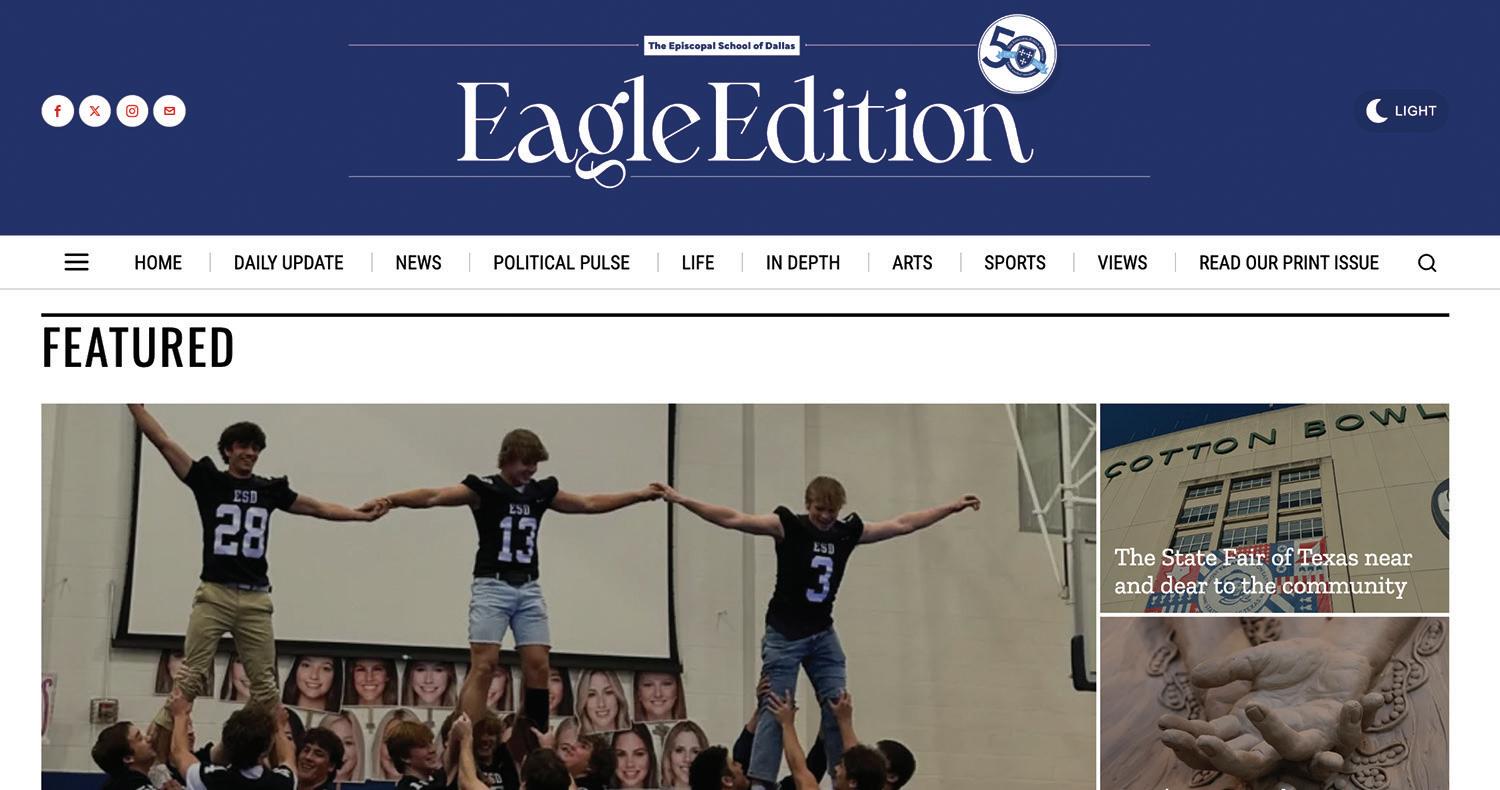
Betty Wheeler | Staff writer
Nerves fill sophomore Elise Henderson as she prepares rigorously for the varsity tennis tryouts, vying for one of only 12 spots on the team.
This season's tryouts started on Feb. 20, with 25 athletes trying out for 12 coveted spots. Because tryouts spanned three days, athletes had multiple chances to showcase their tennis skills if they did not perform well on the first day.
“I think it's a really good process, because it's the extent of three days, so you have a chance to really show what you're worth,” Henderson, who made the team, said. “Tennis is a mental sport, so if you're not doing well that day, it's because you can get into your head, and you don't want that to be a reason you don't make the team.”
But varsity tennis head coach Neil Kenner has a different perspective than Henderson’s. He believes three days was a time constraint because the athletes didn’t have enough time to show what skill they had.
Kenner prepared for the season by making drills so the athletes could demonstrate their skills.
“Over the course of three days, players participated in a combination of match-play and drilling while the coaches observed,” Kenner said. “Athletes often face the biggest challenge of simply being nervous, because there was not a ton of opportunity to ‘ease into it,’ so players had to do everything they could to be ready for this unique type of pressure.”
Senior Mckenzie Clancy, who also made the team, went into her fourth year of tryouts. Each year the tryouts were different, and even though she is a senior, she still felt the nerves.
“Tryouts are very stressful and can cause lots of frustration,” Clancy said. “Even though I’ve been on the team since I was a freshman, it’s still intimidating to play against friends and classmates.”
Because there were limited spots on the team this year, the pressure was high for the athletes. Although 12 athletes made it this year to make the player to coach ratio closer, 18 made it last year so the tryout process was more selective and difficult this season.
“There's gonna be a smaller team this year, so you have to show your skill and try as hard as you possibly can,” Henderson said. “Since there's more people trying out and there are more cuts than last year, it's more competitive, but I am proud of how I competed.”
Along with the change in the tryout process, Kenner has more plans for the upcoming season.
“Players will get more personal attention and the coach to player ratio will be more favorable than last season, and we plan to win the conference championships this year,” Kenner said. “Overall, this year will be tougher for our student-athletes than last year, but we believe it will also be far more rewarding in the end.”
Not only did Elise Henderson try out for the team, but her twin sister, Camille, also tried out. These twins started playing tennis at a young age in New York City. They moved to Dallas in seventh grade and

THIRD TIMES A CHARM Sophomore Camille Henderson competes for one of the 12 spots on the tennis team on the third day of tryouts while she shows off her forehand in the tryout drills. "I am better at my forehand than my backhand," Henderson said. "Tryouts is a stressful time but was ready to compete."
Photo by Kennedy Kuchler
have continued to play ever since.
“My mom has always been a big tennis player, and she really wanted us to focus on tennis so we've always been exposed to it,” Camille said. “Moving to Dallas, I feel like we've been able to play more because tennis courts are more accessible here.”
Being twins, they build skills together and share a bond over the sport. Because they are already so close, they have the advantage of being able to communicate well on the court, helping them play better.
“I love my forehand, [where] she loves her backhand, so when we tried out we did well,” Camille said. “I know what she can do, and she knows what I can do.”
Clancy also enjoys the girls she plays with. Being such a small team, she believes they are able to bond well with one another.
“I love the friendships and bonds that I make on the team,” Clancy said. “It allows me to connect and support girls from every grade on and off the courts.”
Even though the tryout process was difficult, Kenner is truly invested in the team and their success.
“My favorite thing about it is that I get to help guide them to places they may not have thought were possible,” Kenner said. “Watching my students' hard-earned confidence carry over from tennis to the ‘real world’ gives me one of the most satisfying feelings in the world.”
Dallas Open upgraded to level 500 ATP tournament, students soak in the intense energy of top tennis pros competing
Wheeler | Staff writer
Whoosh. Thwack. Pop.
The sharp sound of rackets striking tennis balls and loud cheers echoed through the court as freshman Cade Gray watched professional tennis players on Feb. 8 at the Dallas Open, held at the Ford Center at The Star in Frisco – the home of the Dallas Cowboys World Corporate Headquarters and Training Facility. The Open, which took place from Feb. 1 to 9, is where the top men players of The Association of Tennis Professionals competed.
“I really enjoyed watching the top players play tennis,” Gray said. “I have always really enjoyed the sport and I haven't watched pro players before.”
Starting this year, the Dallas Open was upgraded to an ATP 500 level tournament because of a partnership between GF Sports & Entertainment and the Dallas Cowboys; last year, the tournament was an ATP 250 level. In an ATP 500 tournament, the winner earns 500 points as opposed to only 250. This year, the awards amounted to over $2.8 million, drawing in a larger pool of athletes. This tournament is a unique experience because there are only 10 United States tournaments on the ATP Tour, and
this is one of them. Further, this tournament is the only indoor ATP Tour Championship in the United States.
“The environment was very energetic after a big point was played,” Gray said. “I enjoyed watching tennis because it's more mental than other sports, it's just them and the other player.”
There were 28 singles players and 16 doubles teams in the all-men tournament. The singles winners were Denis Shapovalov from Canada, and the doubles winners were Christian Harrison and Evan King from the U.S.
“I ate food at the main center and then I watched the doubles court,” Gray said. “I loved watching Taylor Fritz and Denis Shapovalov the most.”
While there were only a few winners, Gray enjoyed seeing all the athletes perform. Before the matches started, he was able to watch their warm up as well.
“My favorite part was the pre-match warm up,” Gray said. “That's where you can see the quality of all the players' shots.”
In the past, this event was held at the SMU campus. Because of the new location, the environment was a different one for spectators. Junior Greta Solomon, who has attended the event in the past, noticed many differences.
“Compared to the last few years of it being at SMU, it was much bigger,” Solomon
I enjoyed watching tennis because it's more mental than other sports, it's just them and the other player.
Cade Gray Freshmen
GIRLS AND GAMES Junior Greta Solomon pictured on the right attends the Dallas Open with her friend from Hockaday. "We had so much fun together." Solomon said. "I love sharing my love for tennis with my friend and getting to experience such a great tournament."
Photo provided by Greta Solomon
said. “I have been going to the Dallas Open for the past few years and really enjoyed it, so when my friend invited me I knew I definitely wanted to go again.”
Not only was this venue able to hold more athletes and fans, there were also more food stations available.
“I really enjoyed going to this event because I went with friends,” Solomon said. “It was fun to watch the ten-
nis and also hang out around the venue.”
This tournament held high level athletes, so most of the games were extremely close, and the fans were always on their toes.
“My favorite part was being there with my best friend and the matches being so close,” Solomon said. “It can become very suspenseful in a close match when there's a third set, it's exciting.”
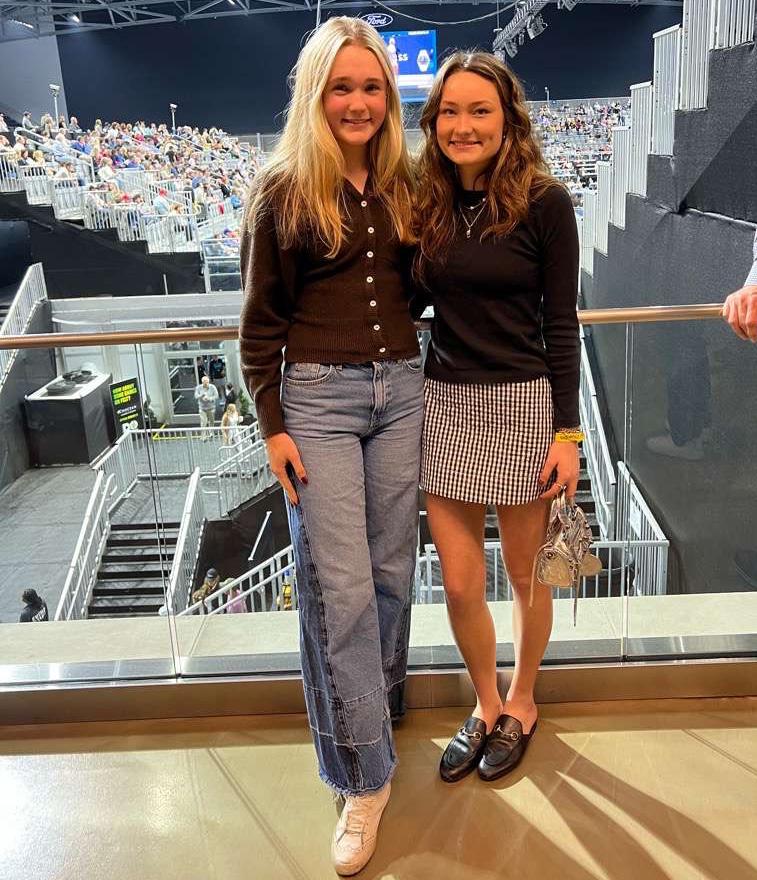
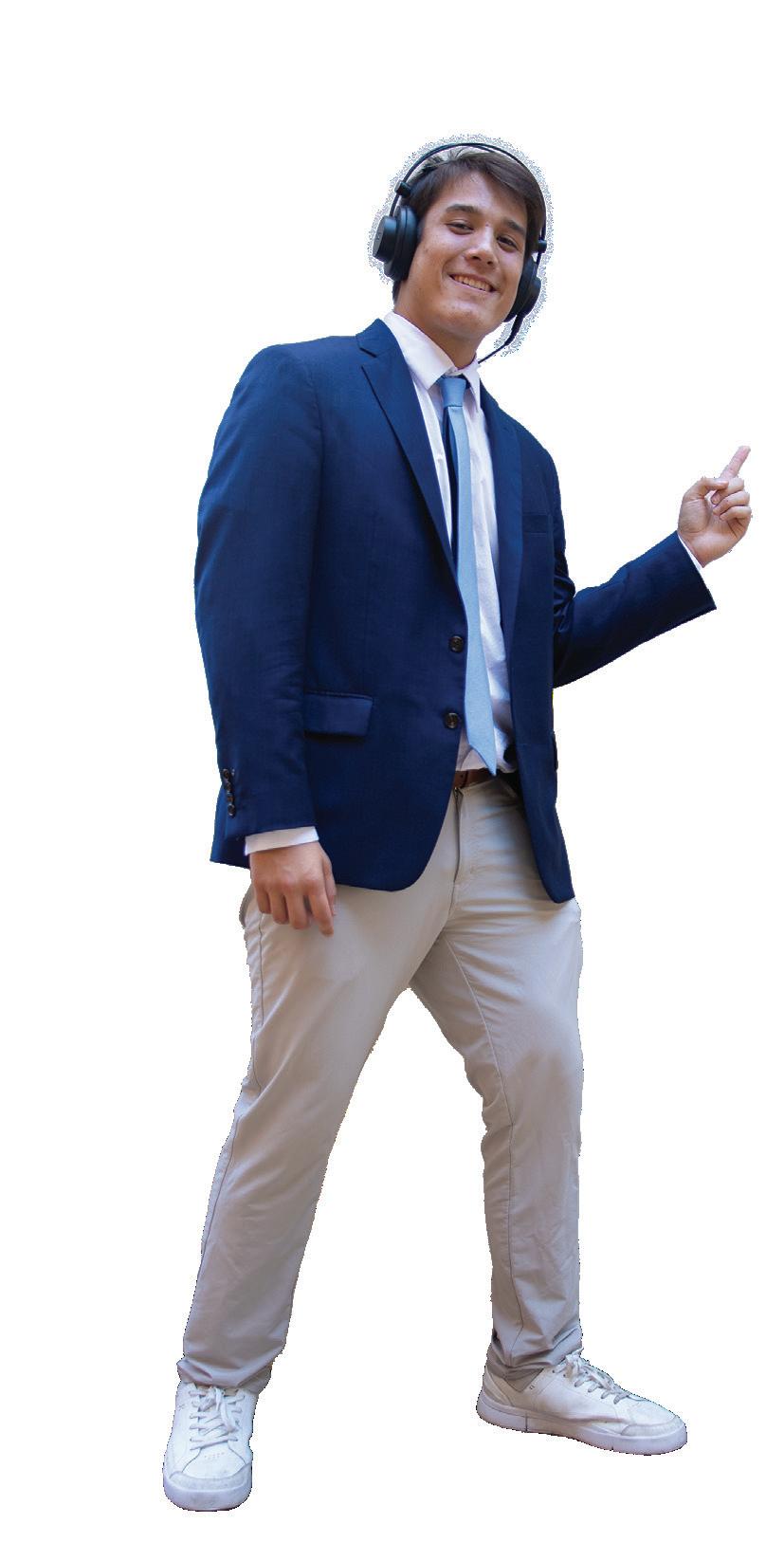

Sports editor Ethan Pham offers his insights on the life of student-athletes at ESD as well as his takes on sports. Through his personal experiences and analysis, he sheds light on the challenges, triumphs and daily routines of balancing academics with athletics.
Nov. 2 to now. The competitiveness and attention to detail is much higher.
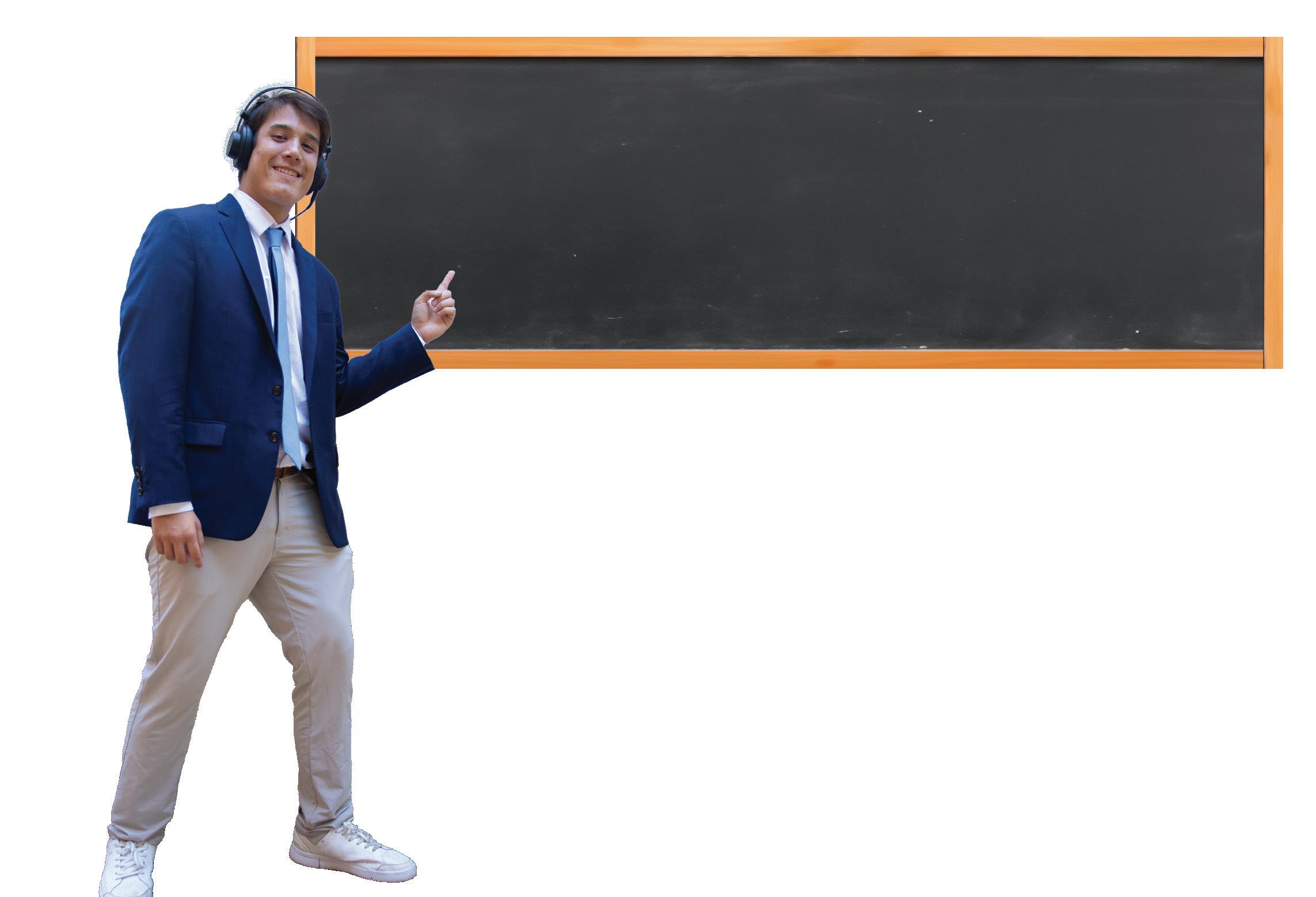
Winning a lacrosse state championship last year was one of the best moments of my life. The team’s hard work finally paid off, and we finished at the top. We definitely celebrated and enjoyed our victory of the 2024 season, but soon after, the returning players were back on the field and focusing on this year’s season.
But this year’s team is predicted to perform poorly. Since the class of 2024 players graduated, no one expects us to be good enough to compete for the state championship again. And despite
nior players. Retaining our number one spot could be attainable because the team has talented athletes and coaches.
Not having a state championship “hangover” this year has been emphasized to the team many times. All team members know that our win last year was astounding, but we also know how hard we worked to achieve it.
As one of the captains this year, I have felt an extra layer of stress that has come with the job. Since we have a young team and are coming off such a big year, it was difficult to teach the younger players that off season lifts and practices are serious. I saw a shift in players’ attitudes from
A young team has its pros and cons. When I was an underclassman, I was immature and did not really think about taking anything seriously. It is a lot to ask the guys to step up and be mature at such a young age, however, they have adapted well. A good amount of freshmen and sophomores will be getting a lot of playing time. Also, our schedule this year has fewer games than last year, which will benefit us in the long run. Many starters get injured every year, and playing fewer games will lighten the blow on players' bodies and keep them healthier for the playoffs in May. Last year, four valuable starters got hurt playing in games against weak opponents and were sidelined for the majority of the season.
Even though every game we play matters, some have more weight than others. Playing against Jesuit and Highland Park has a greater
impact on our fitness than playing Episcopal Houston or Kinkaid. Normally, playing against an SPC opponent is beneficial for younger players to get varsity experience. Varsity starters usually get pulled out of the game at halftime so they have no risk of getting injured. We want to keep the starters healthy for the big games against Highland Park and Jesuit. Because we have smaller numbers than last year, starters will have a heavier workload in every game. Moreover, the team has the same energy and mentality in practice. We have been working hard while maintaining a high energy level by building excitement during practice. In previous years, I would dread practice, because the team did not prioritize having fun. But last year, we learned how to compete at a high level and still have fun. Now every day it feels like I get to work and compete with my brothers, ultimately working towards success.
During spring break, the team always travels to play out of state teams. This year we are flying to San Diego, California to play against some of the best teams on the West Coast. All players must cut any vacations short, so we can practice for two days before the trip. We will play Cherry Creek from Colorado and Brophy Prep from
Arizona over the break. The team also always has a day off during the break to bond. Since we will be near a beach this year, I assume we will do some beach games and have a fun dinner.
We had our first games the weekend of Feb. 2 in Houston. We dominated every game with our closest game being us winning by 12 goals. We played four games in three days. We played Houston Christian, Memorial, Kinkaid and Cypress United. I think it was a great start to the season for us because we got to ease into our first games to prepare for good teams the next week in Southlake and Westlake.
But above all, my favorite part of our team is how close we already are. The whole team has been together for less than a month and we already have created a culture and bonded. We put our phones up on the bus and socialize to kill time — we have learned a lot from one another. I am very excited to see where we end up as a team as I can see another state championship at the end of the year.
All of our time and effort will be worth it when May playoffs roll around. The team has handled the pressure of winning state last year well so far, and we have a clear goal of winning another state title for this year.

Everyone is counting down the days until spring break bliss
Alexa Sardiña | Cartoonist

Yeah, a week isn't to far away...
I can't wait for spring break, just one more week
I-I-I can't wait any longer...
Time slows down the closer you get to a goal - like a loading bar stuck at 99 percent. Seniors know this struggle all too well as they inch toward the longawaited end of high school, the conclusion of a 12-year marathon and the chaotic yet exciting leap into adulthood. Of course, nothing eases the stress of impending responsibility quite like a senior trip to Cancún, Mexico. The promise of ocean waves, sun-soaked days and well earned relaxation is the perfect motivation to push through the final stretch. After all, what better way to prepare for adulthood than by temporarily escaping it?
Alexa Sardi ña
In celebration of ESD's 50th anniversary, The Eagle Edition staff is going through the archives looking into areas of the school's growth over the years and the path to now. The second timeline highlights the evolution of ESD's senior class gifts, from the first recorded gift in 2009 to the present.
It has become a tradition that the senior class gives a gift to ESD before graduating. These gifts, intended to bring enjoyment for the community, have ranged from statues of our mascot, the eagle, displayed outside the Gene and Jerry Jones Stadium to a new water fountain in the senior hall. The senior class student council representatives decide what they believe the school needs the most, and then they bring it up for a vote to the whole class. This tradition was first recorded when the class of 2009 gave an endowment back to the school, and every class, until the class of 2013, followed in their footsteps.
This year, the 2025 senior class has chosen to give back to the school by refurbishing senior hall and giving the old furniture to the junior lounge. This interest was sparked by the seniors’ fondness of spending time in the senior hall, with many wishing that they had better furniture to enhance their experience. They also wished that they had more outdoor furniture and games in the senior courtyard, which is right outside senior hall.
The class of 2025 has also contributed to their senior gift differently than every class before them. Instead of using the money that they raised for throwing dances throughout the years and other activities, the senior class has been fundraising to raise more money by selling Raising Cane’s Chicken on certain Fridays throughout the year. Senior class representative Katherine Clark facilitated the idea with Cane’s and then set up the system for students to purchase a meal for $12. In the past, students have raised about $5,000 to $10,000 for their class gift, and this year the senior class raised around $5,000.
